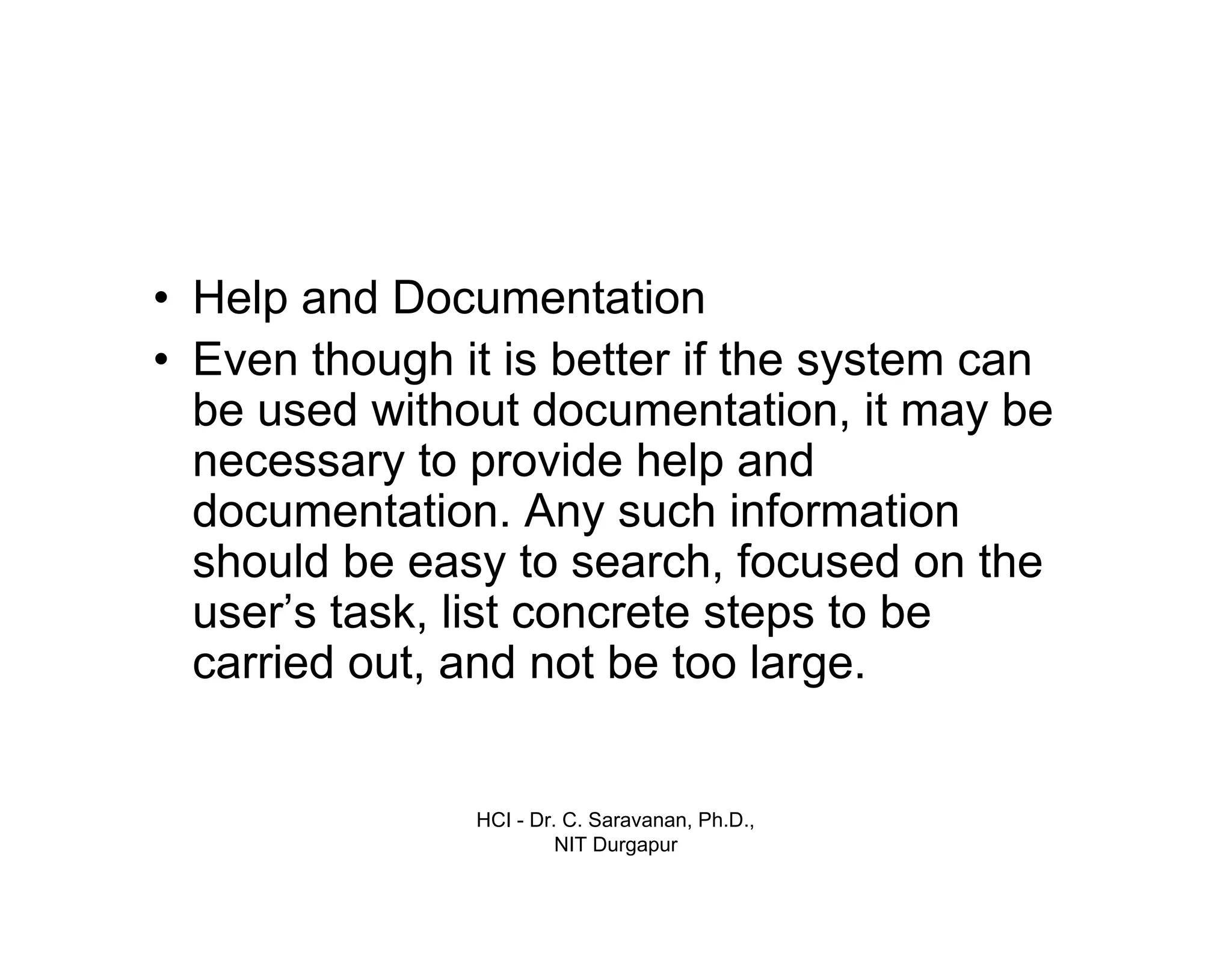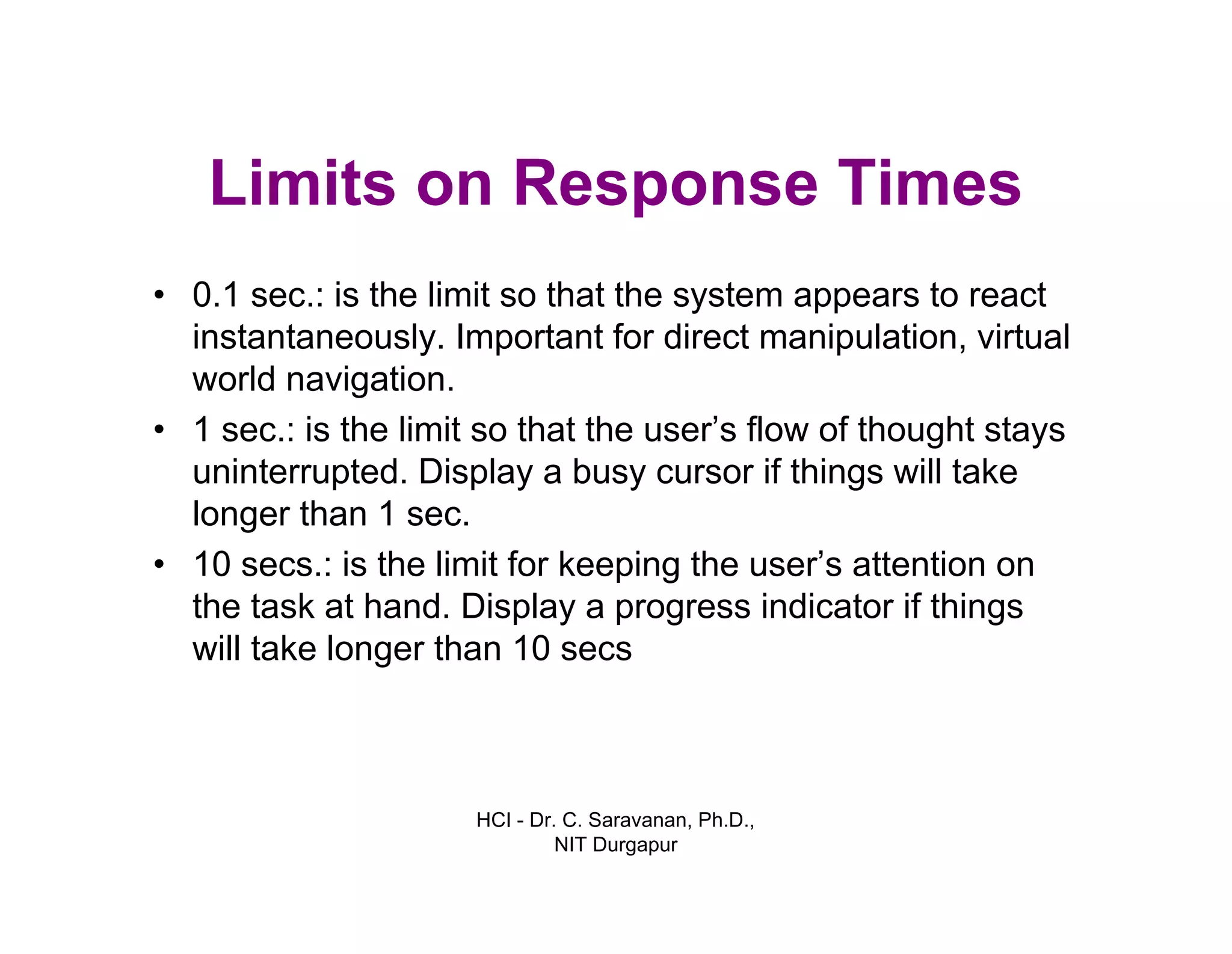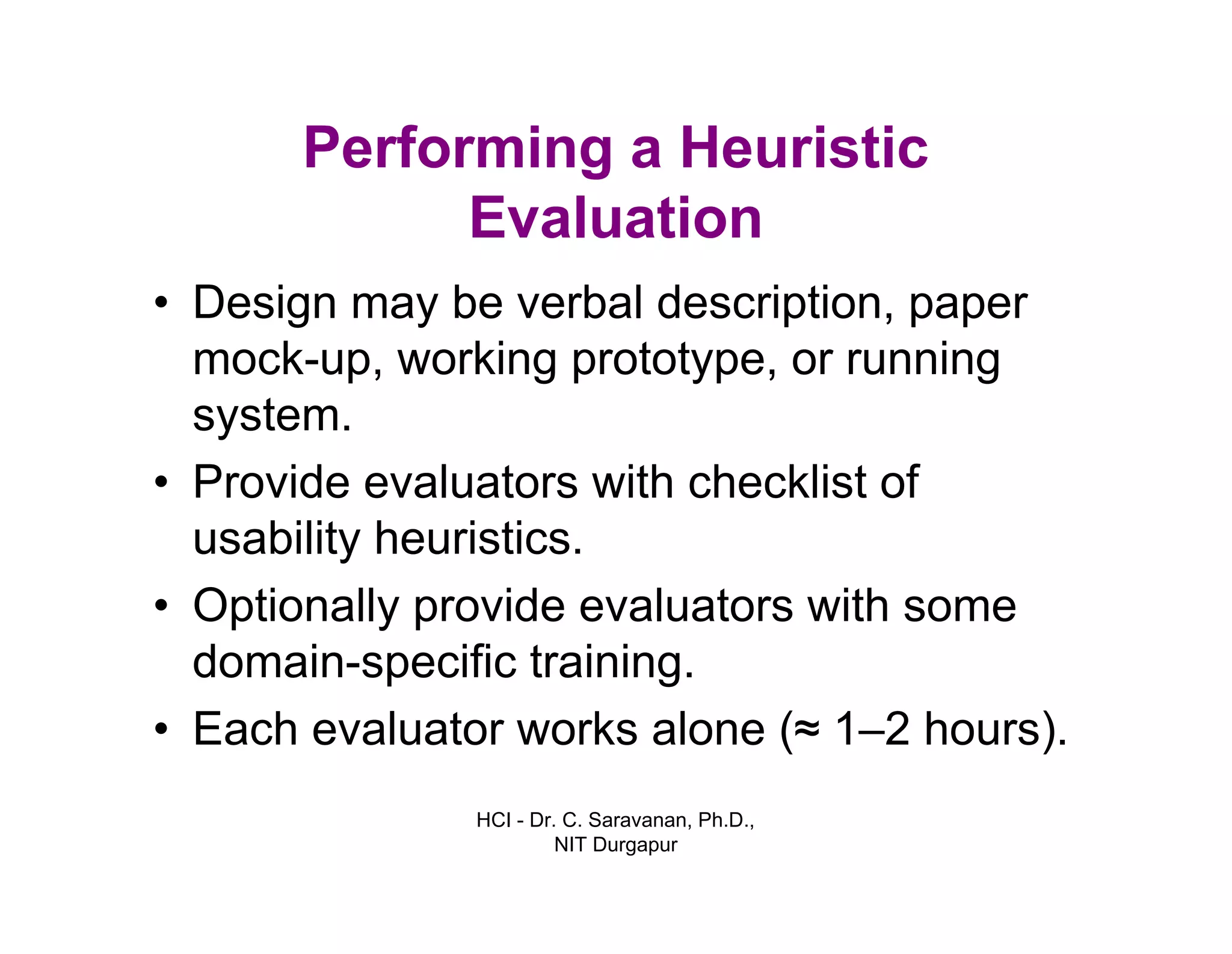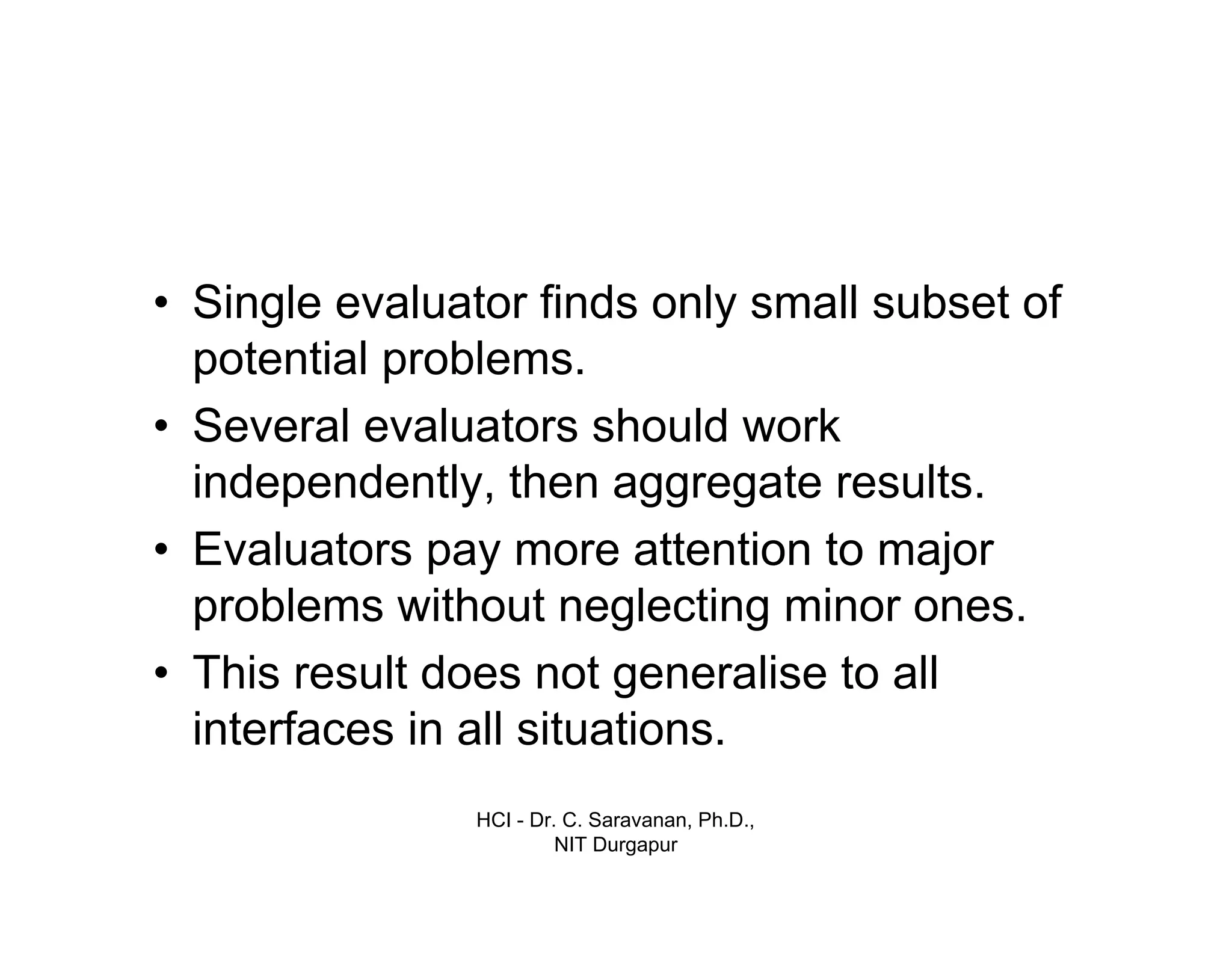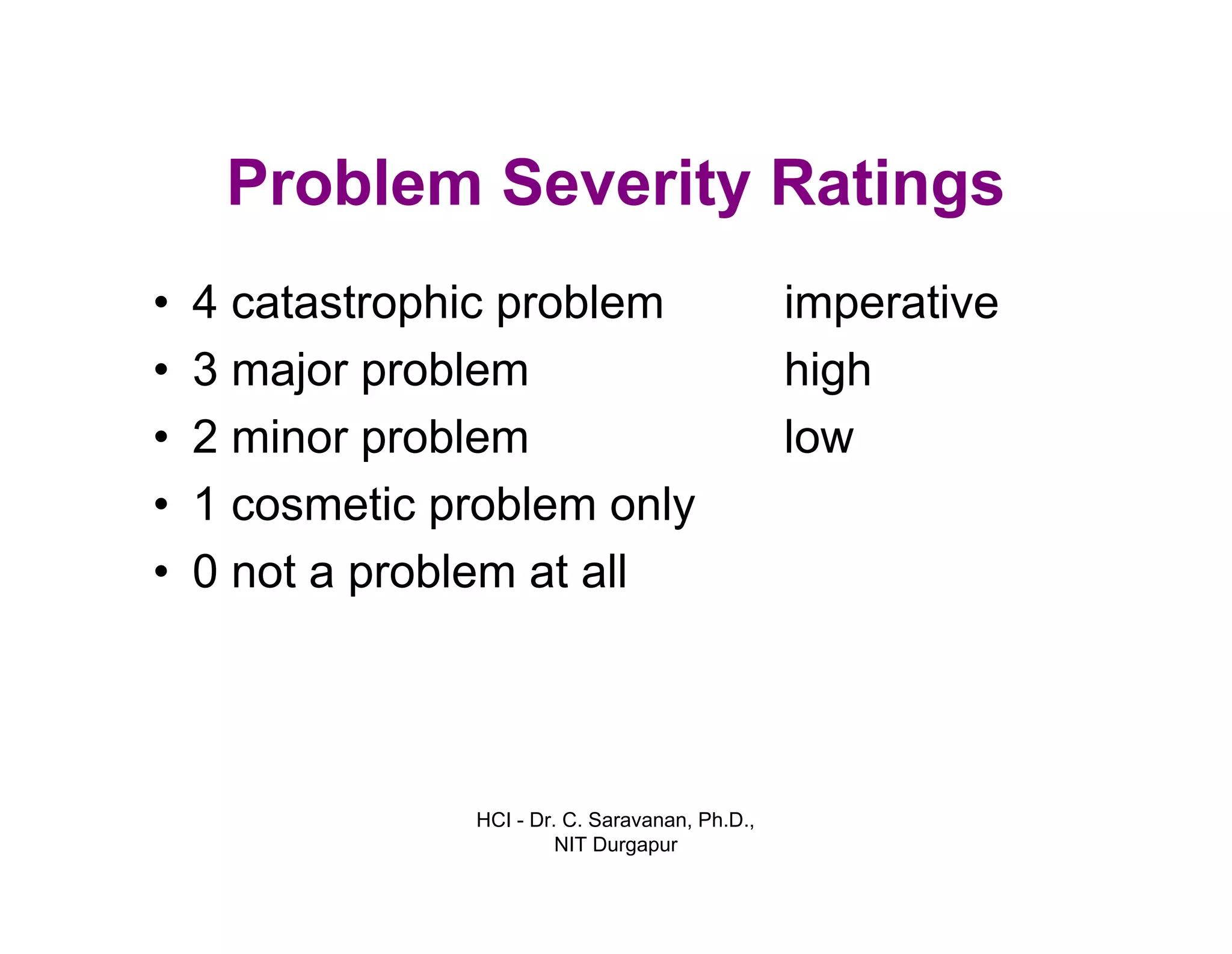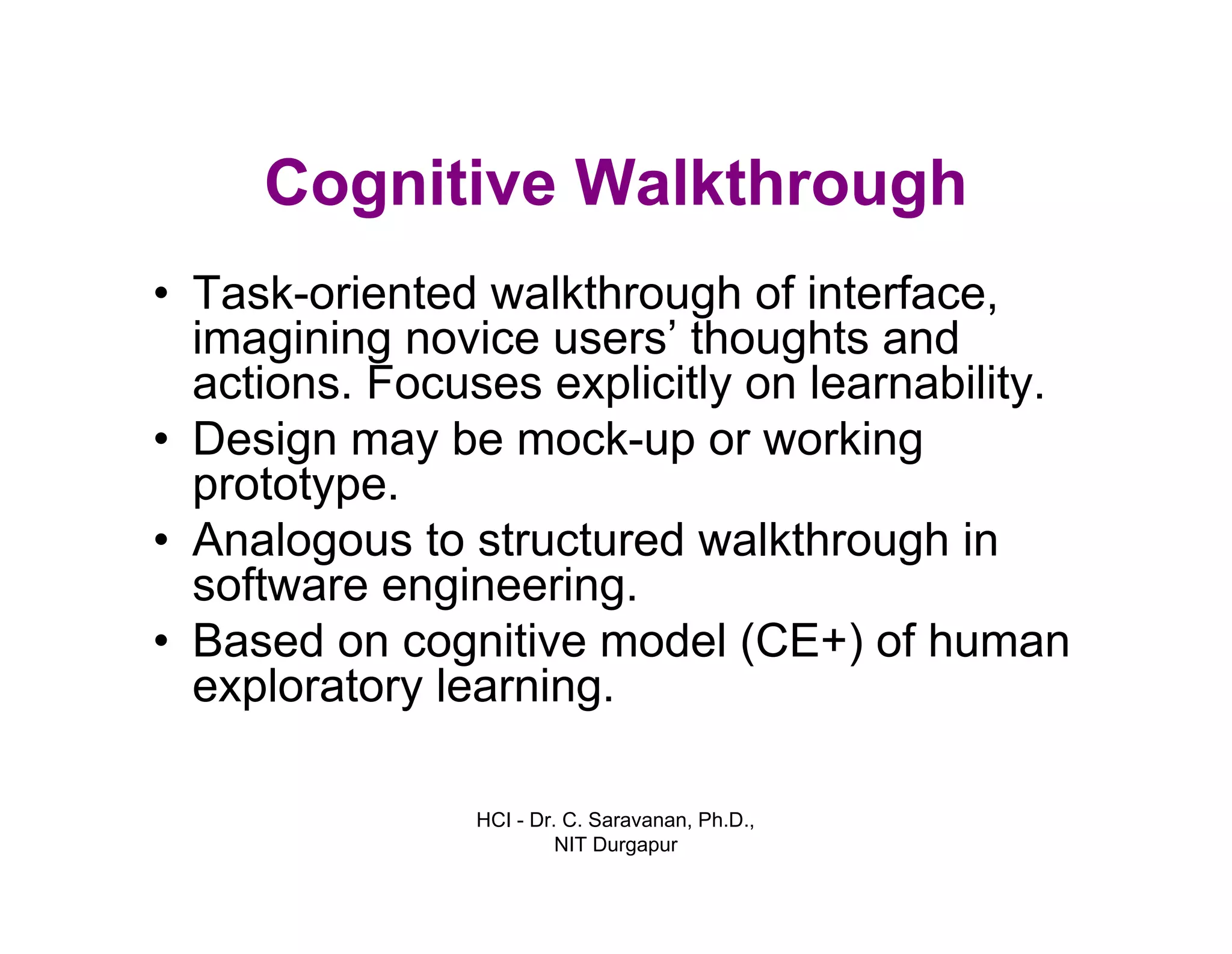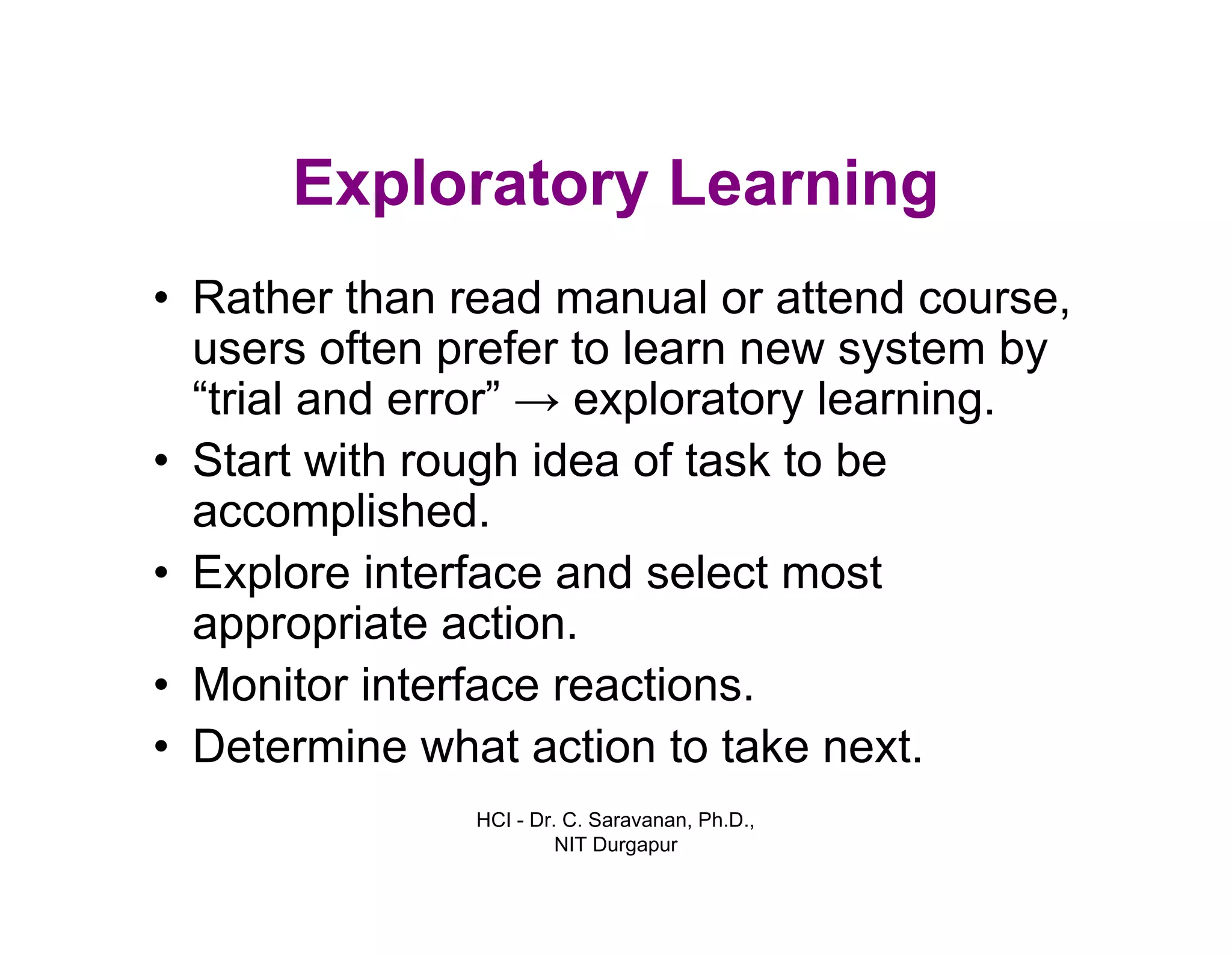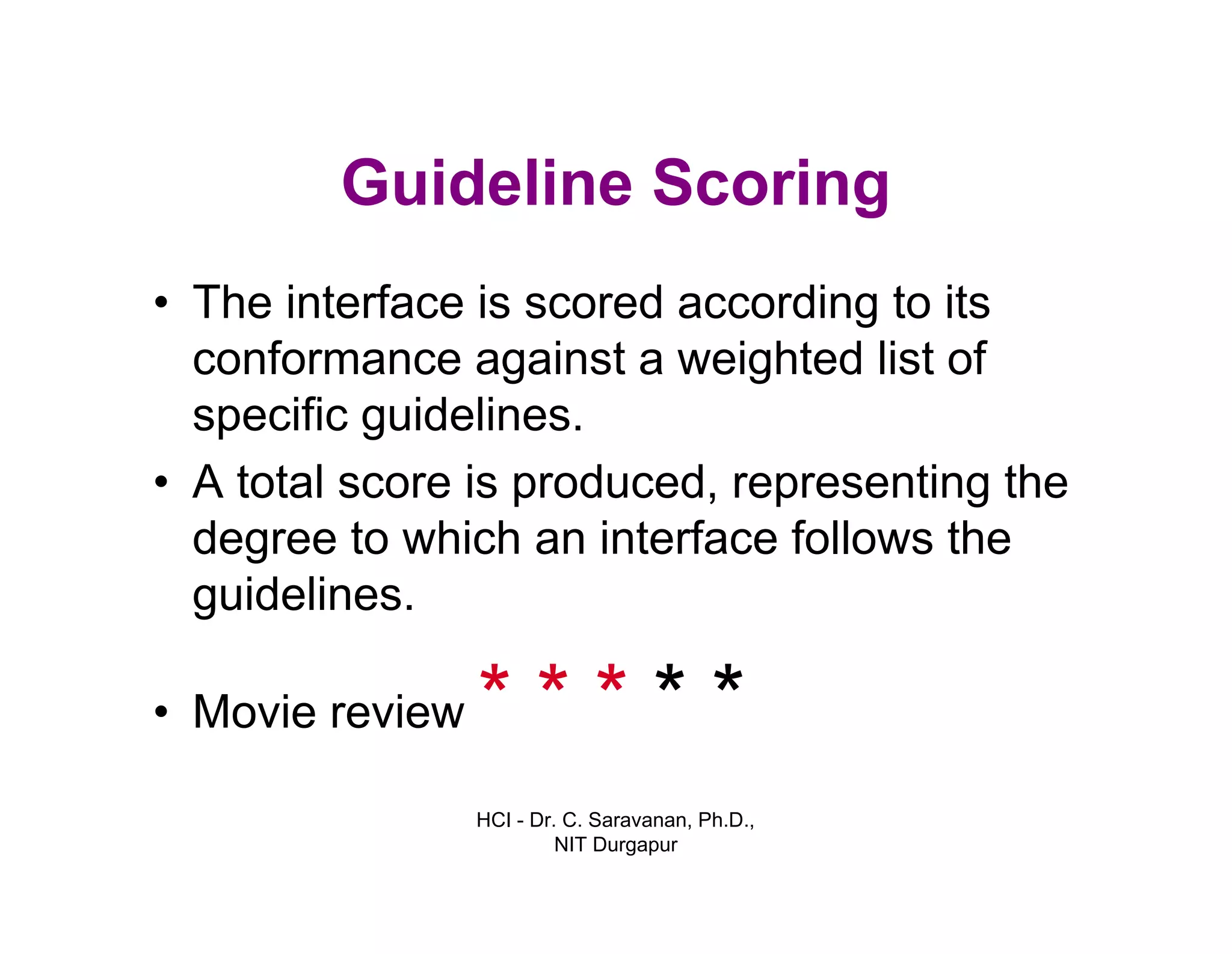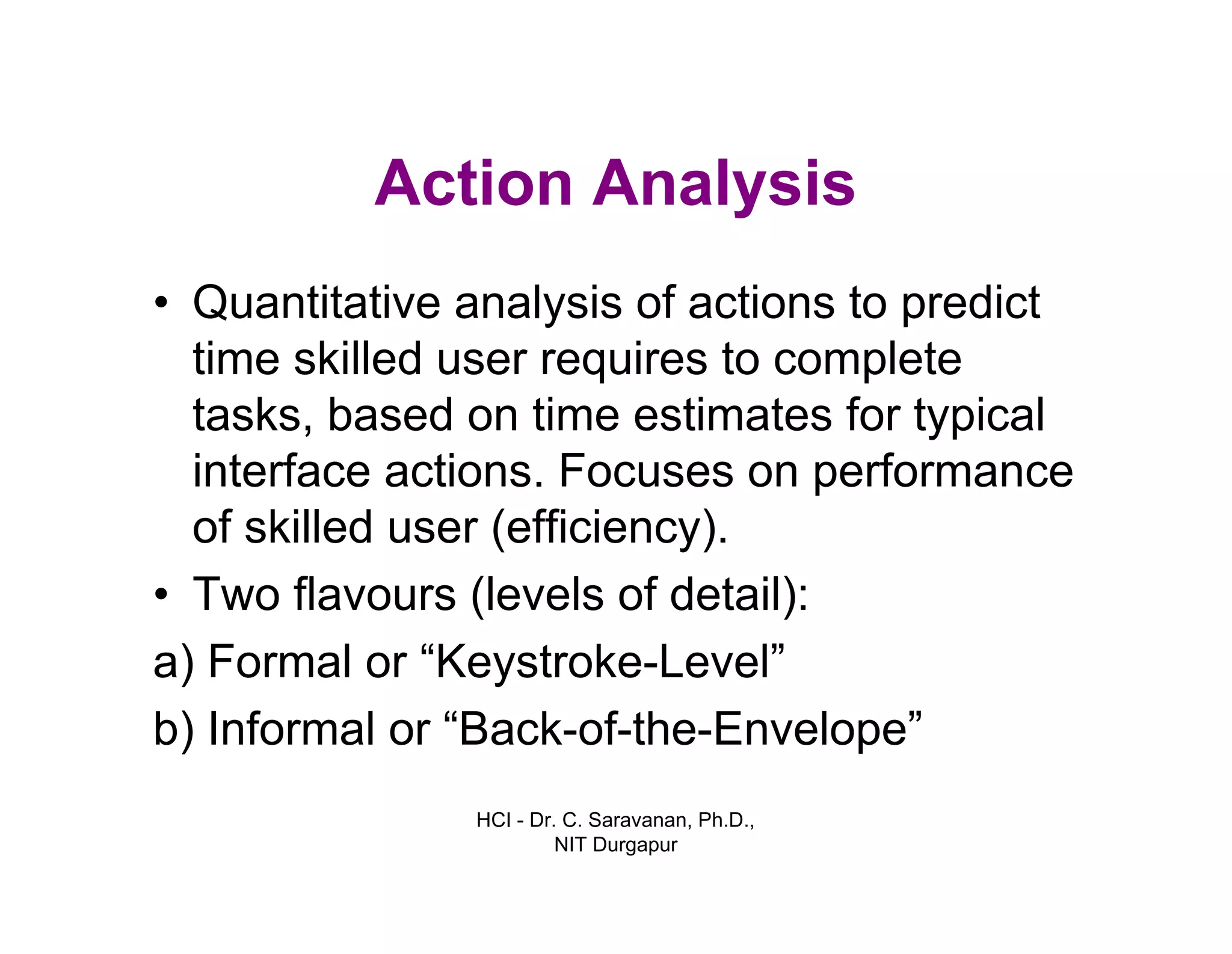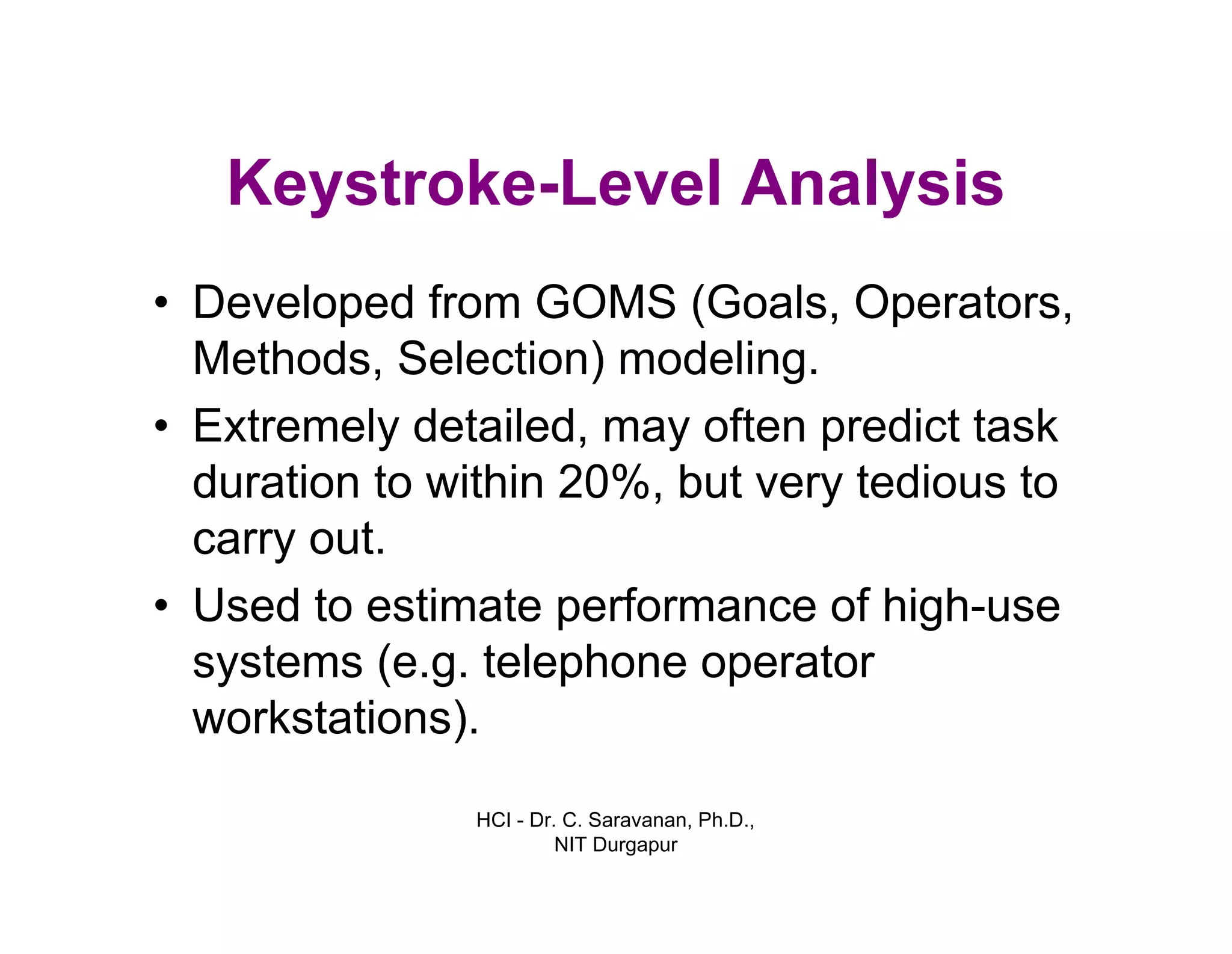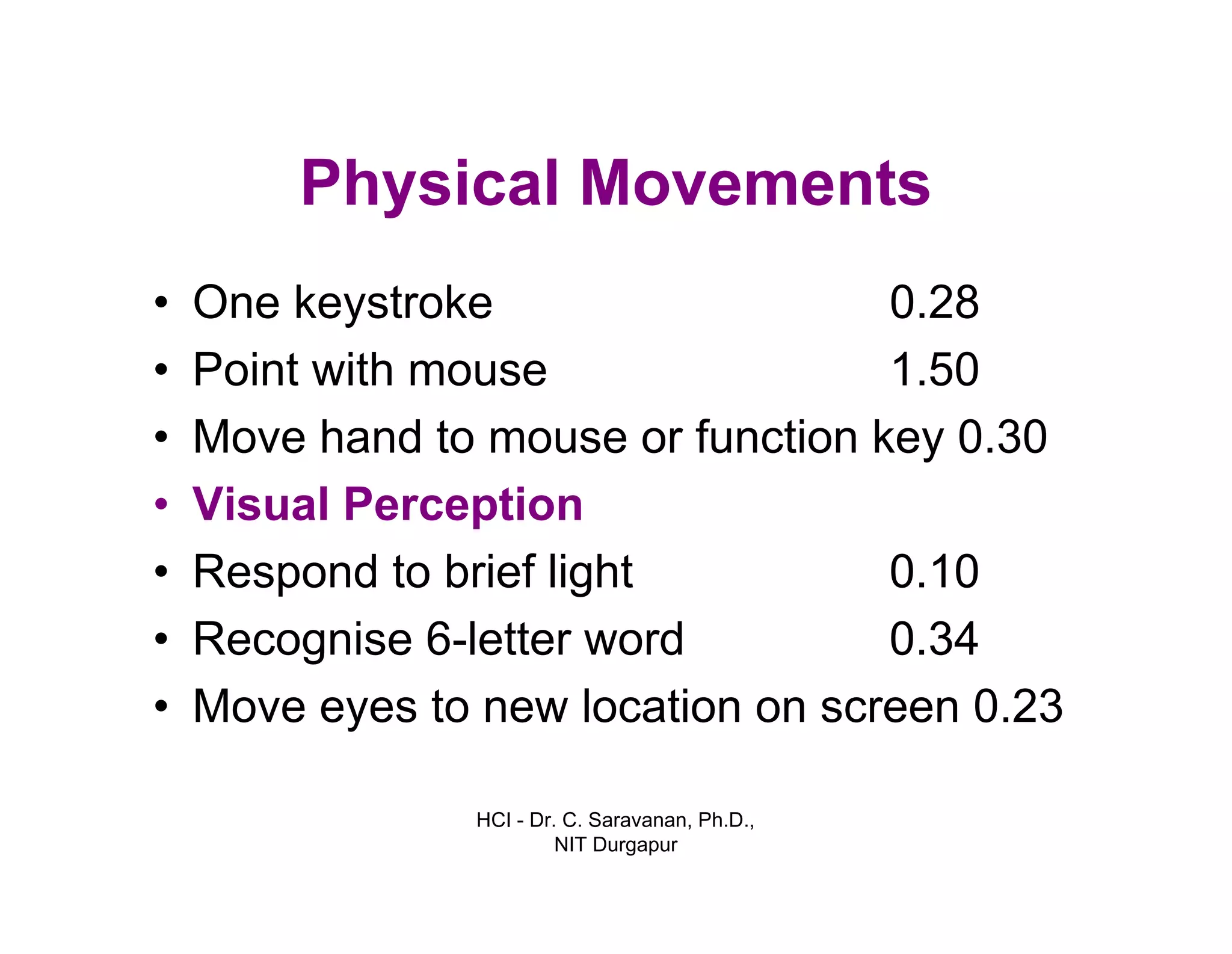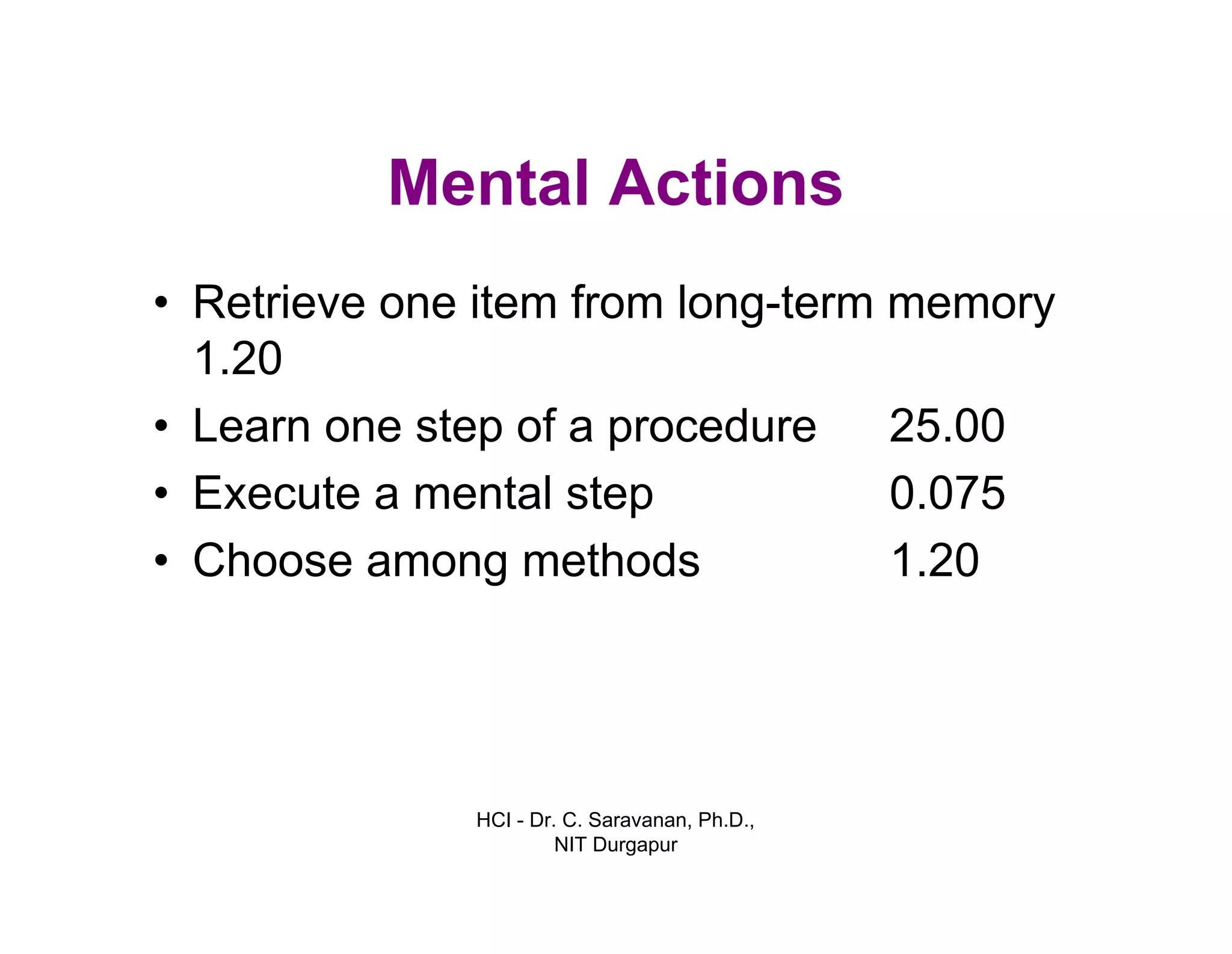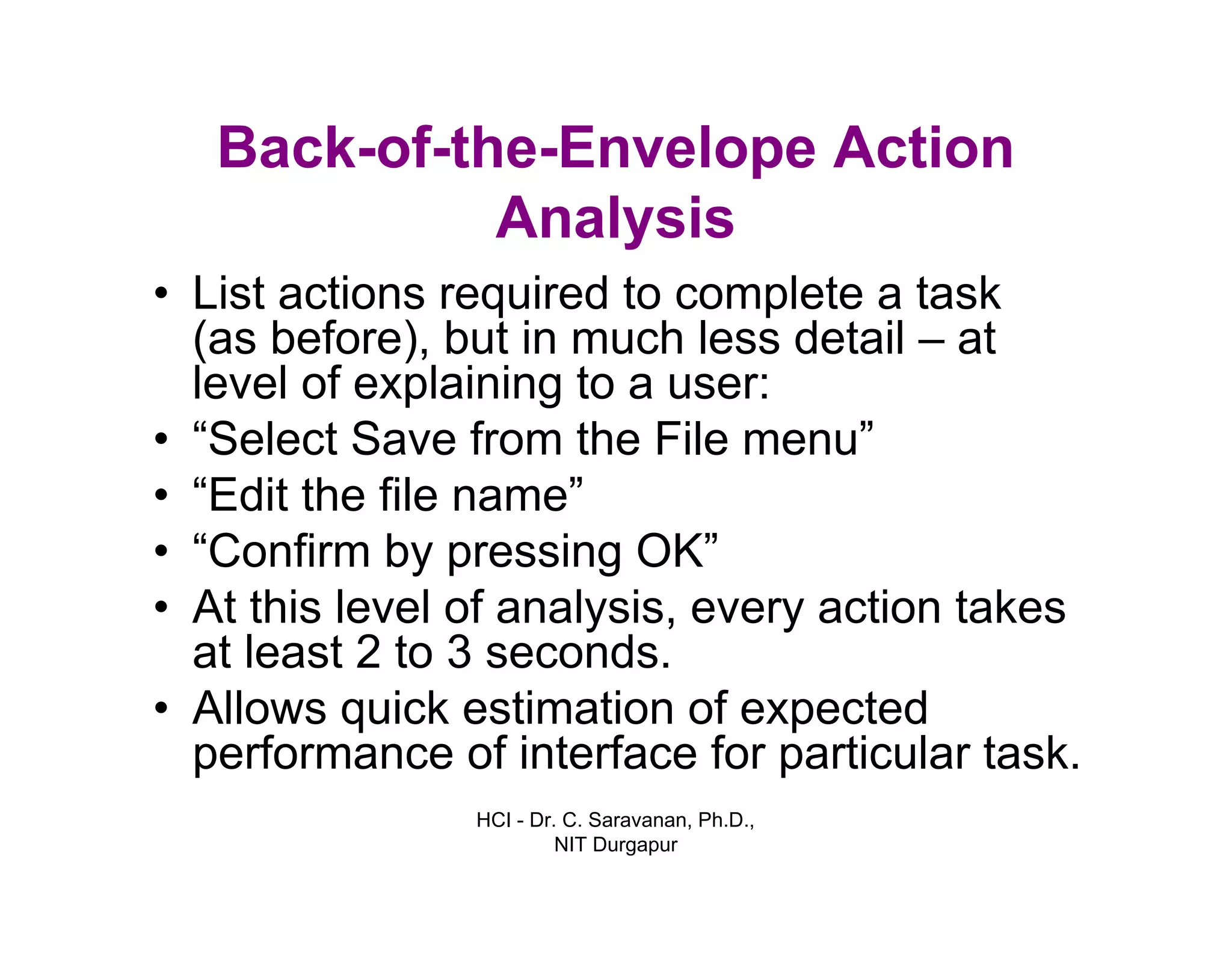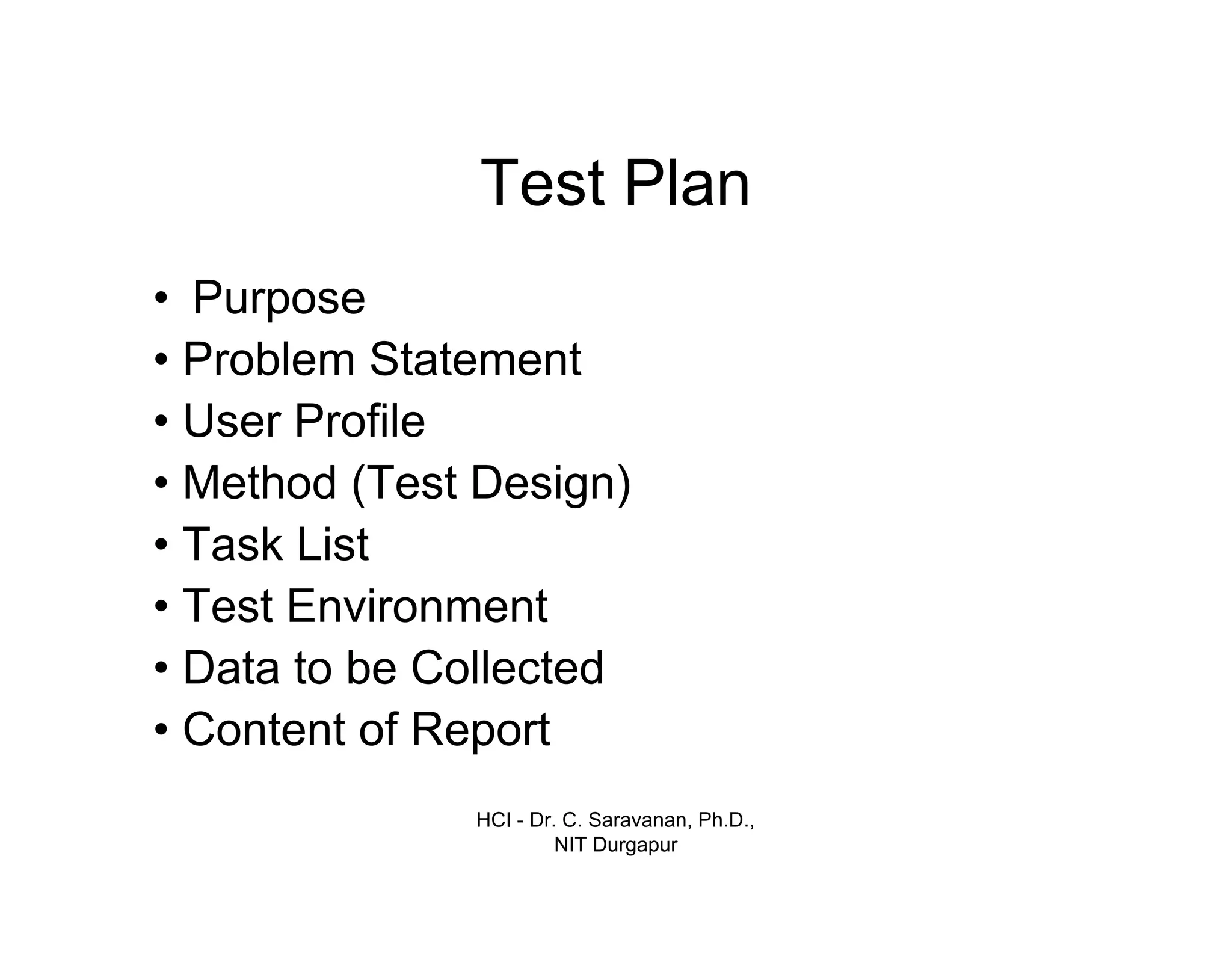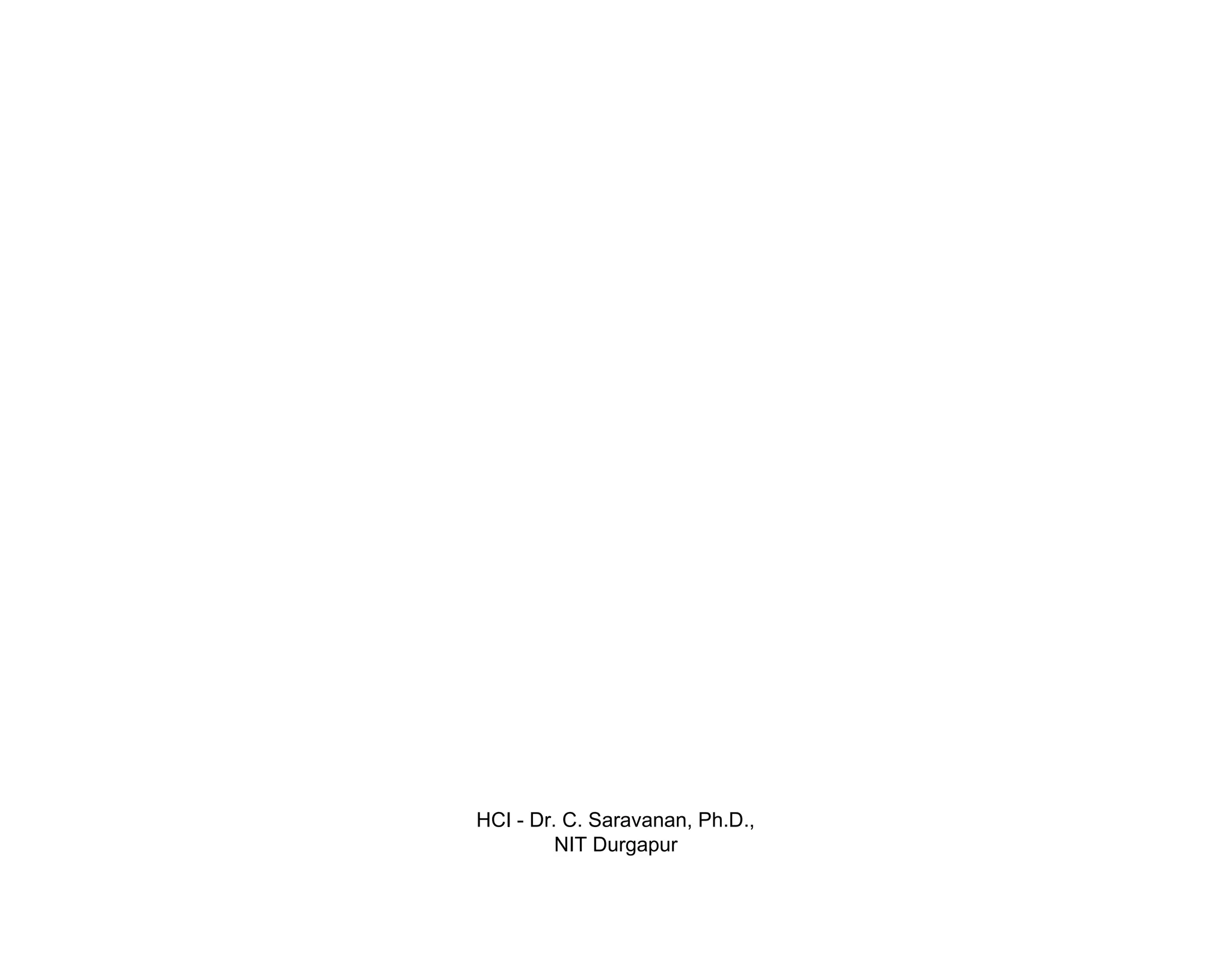The document discusses Human Computer Interaction (HCI). It defines HCI as a discipline concerned with designing interactive computing systems for human use and studying phenomena around them. HCI draws from fields like computer science, behavioral sciences, and design. It aims to improve interactions between users and computers by making computers more usable and responsive to human needs. HCI involves methods for designing, implementing, and evaluating interfaces to minimize barriers between what users want to accomplish and how computers support users' tasks.
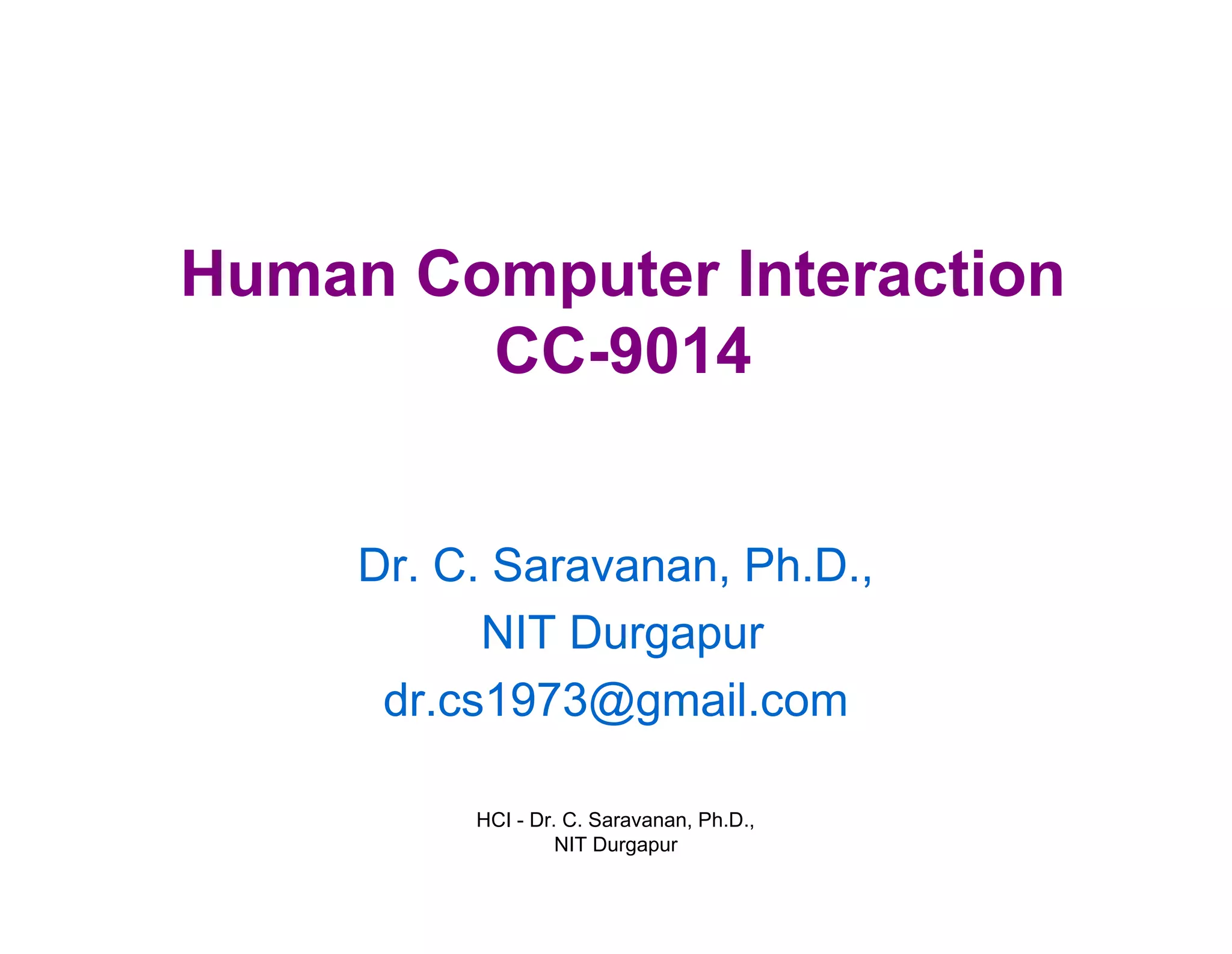
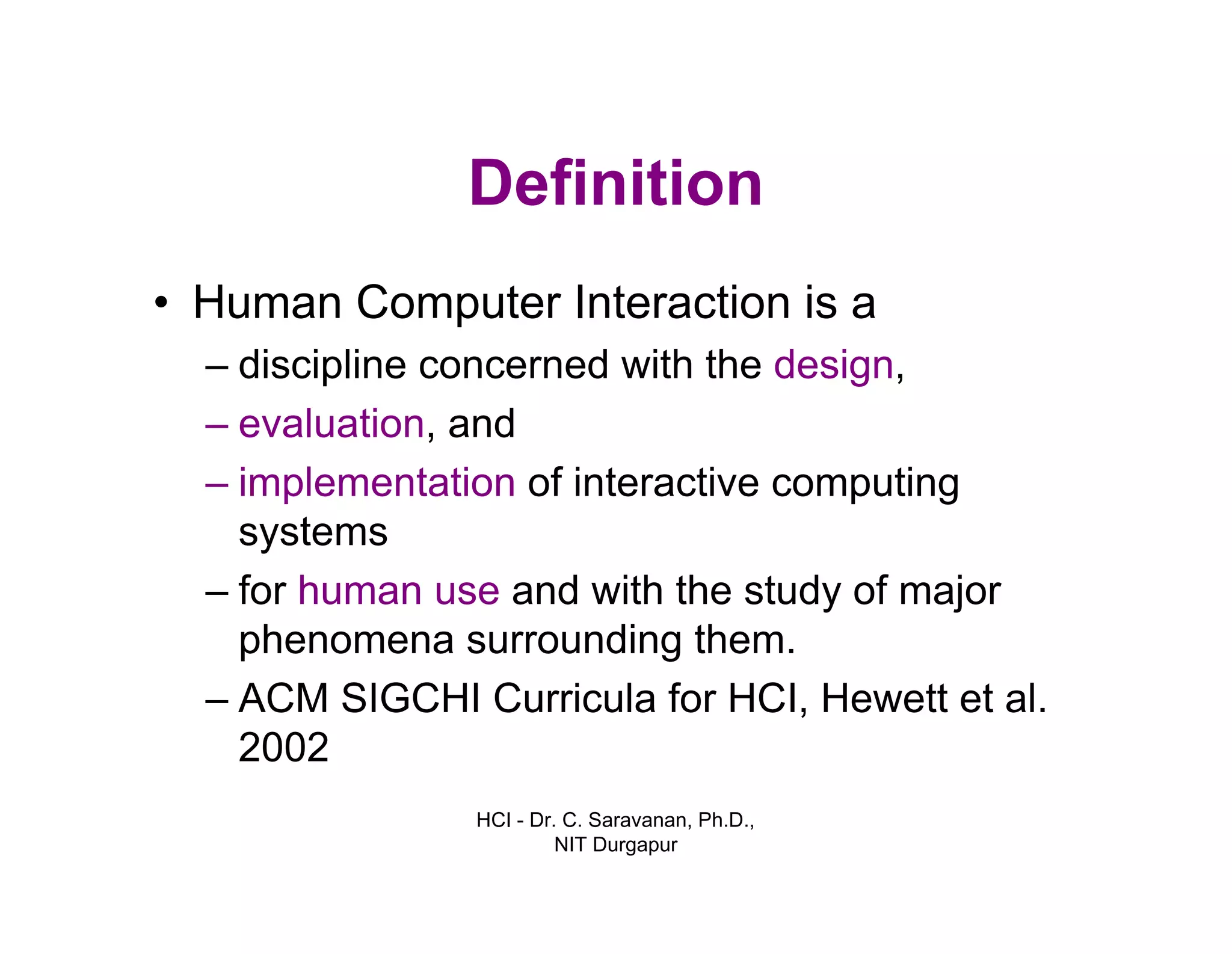
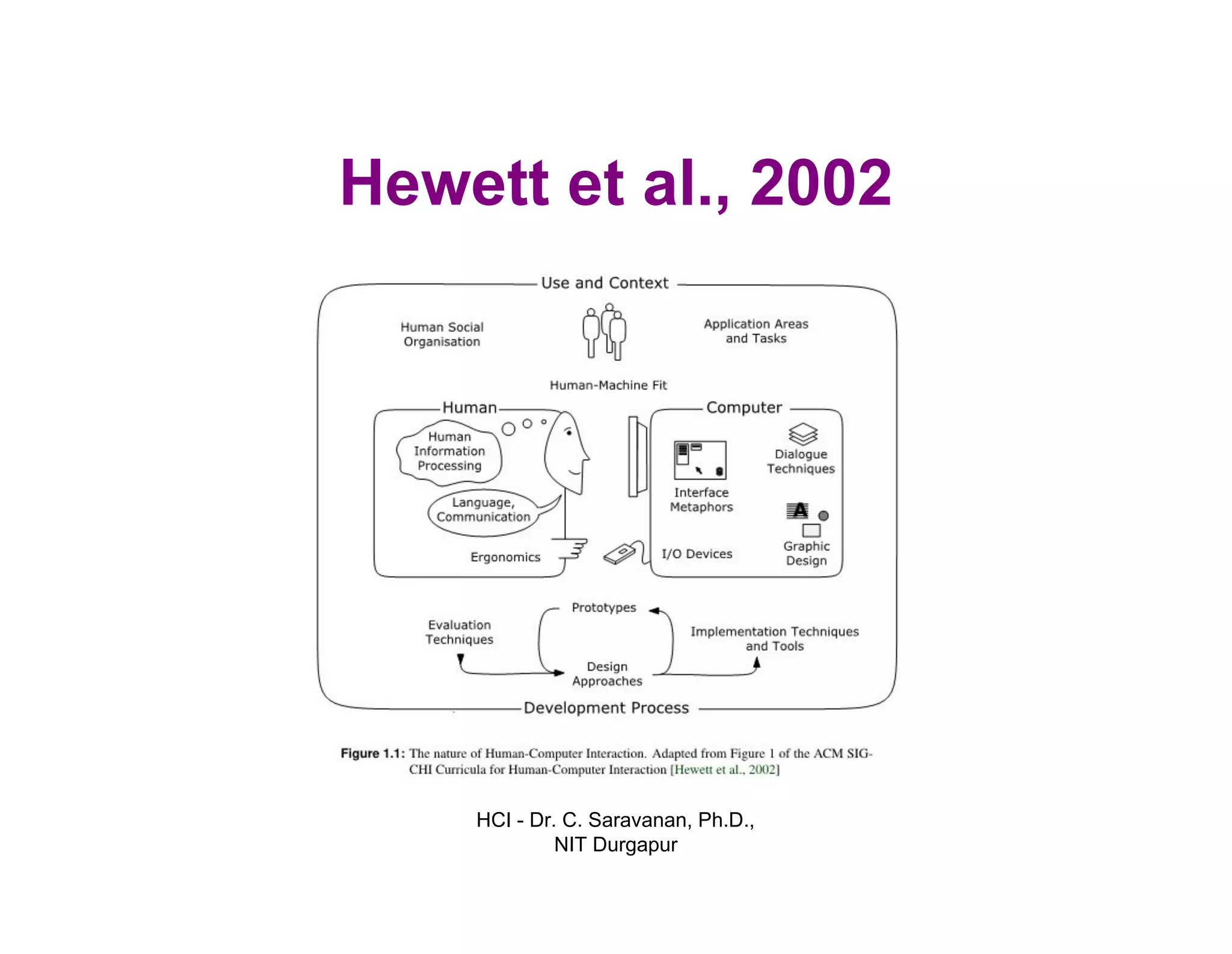
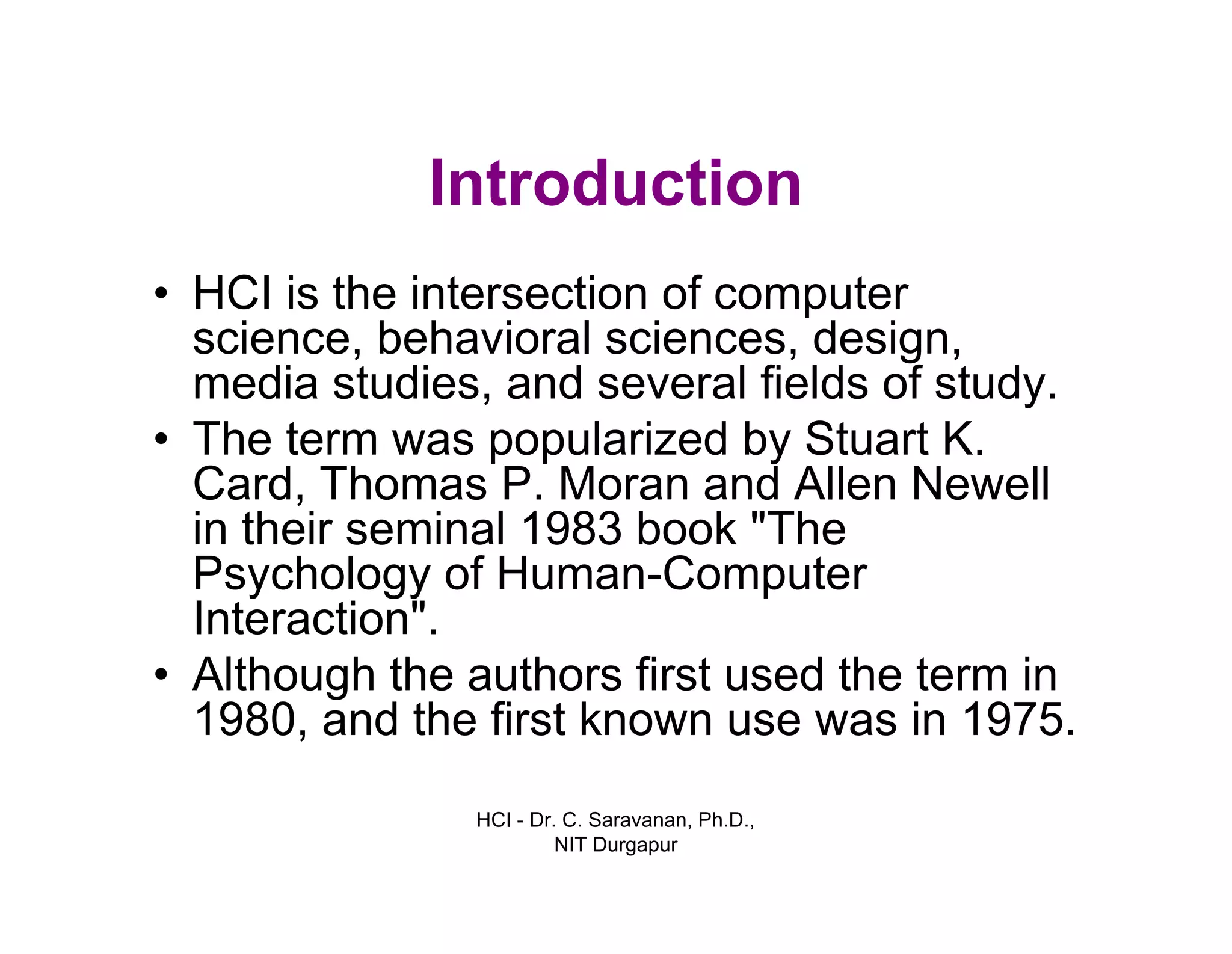
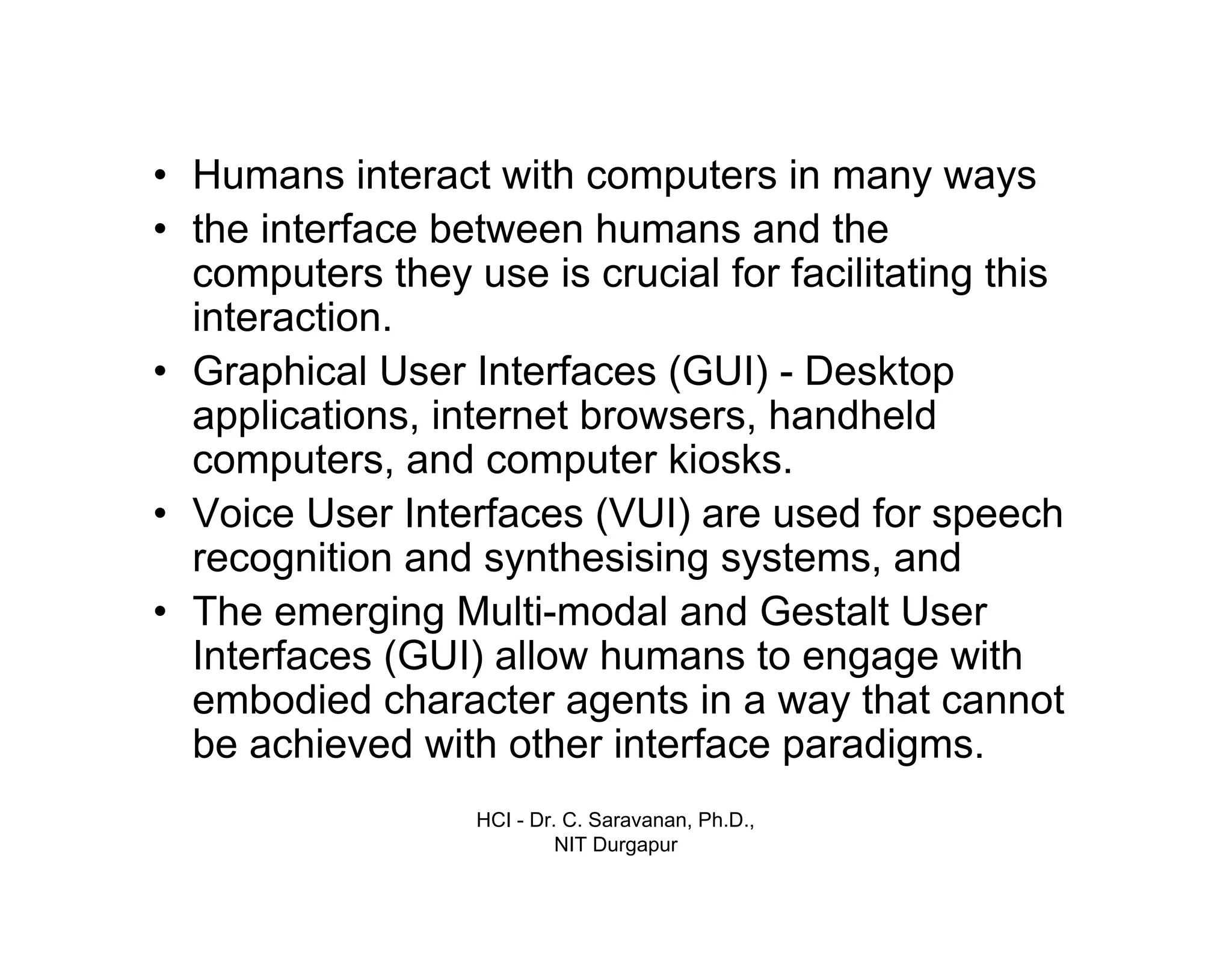
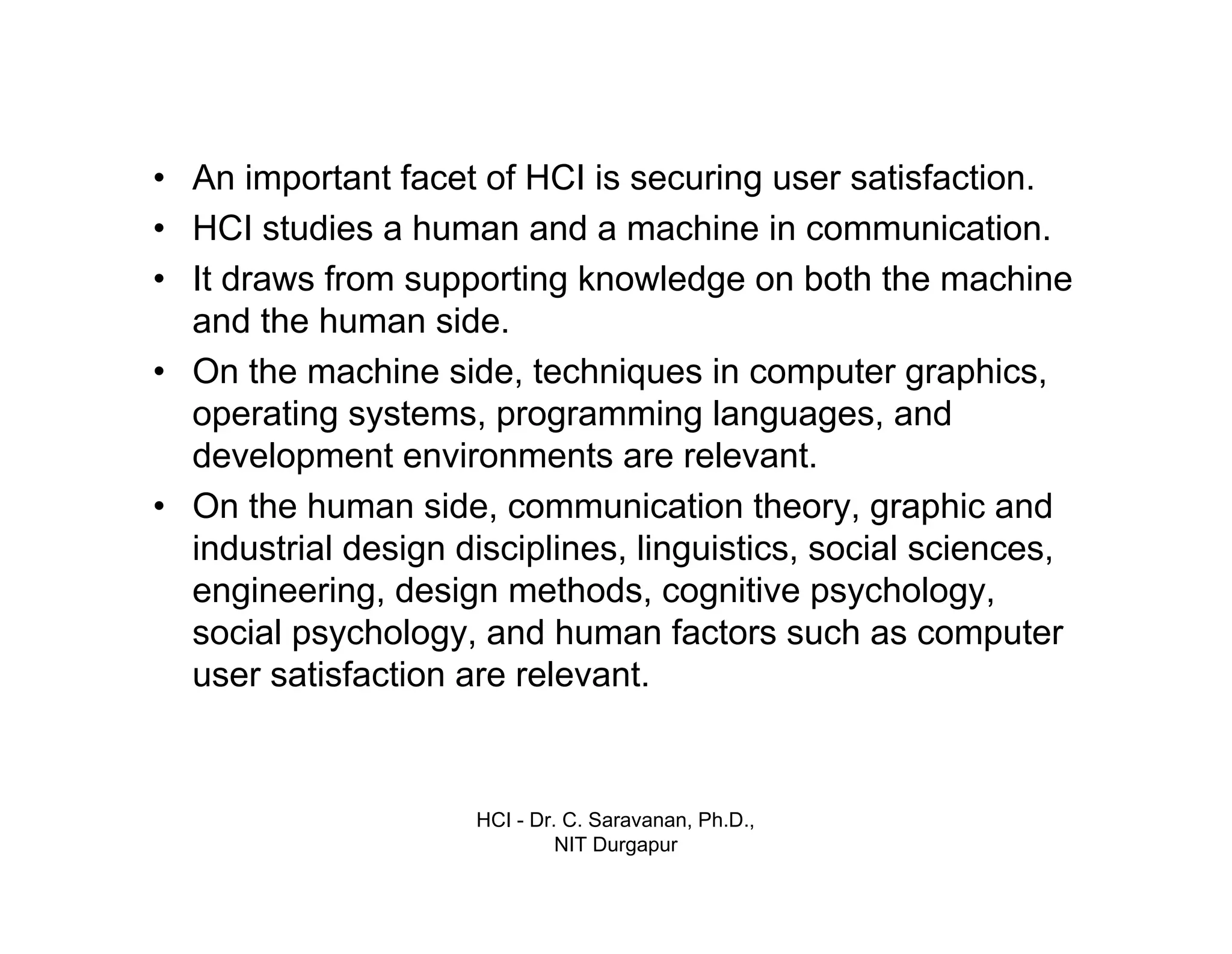
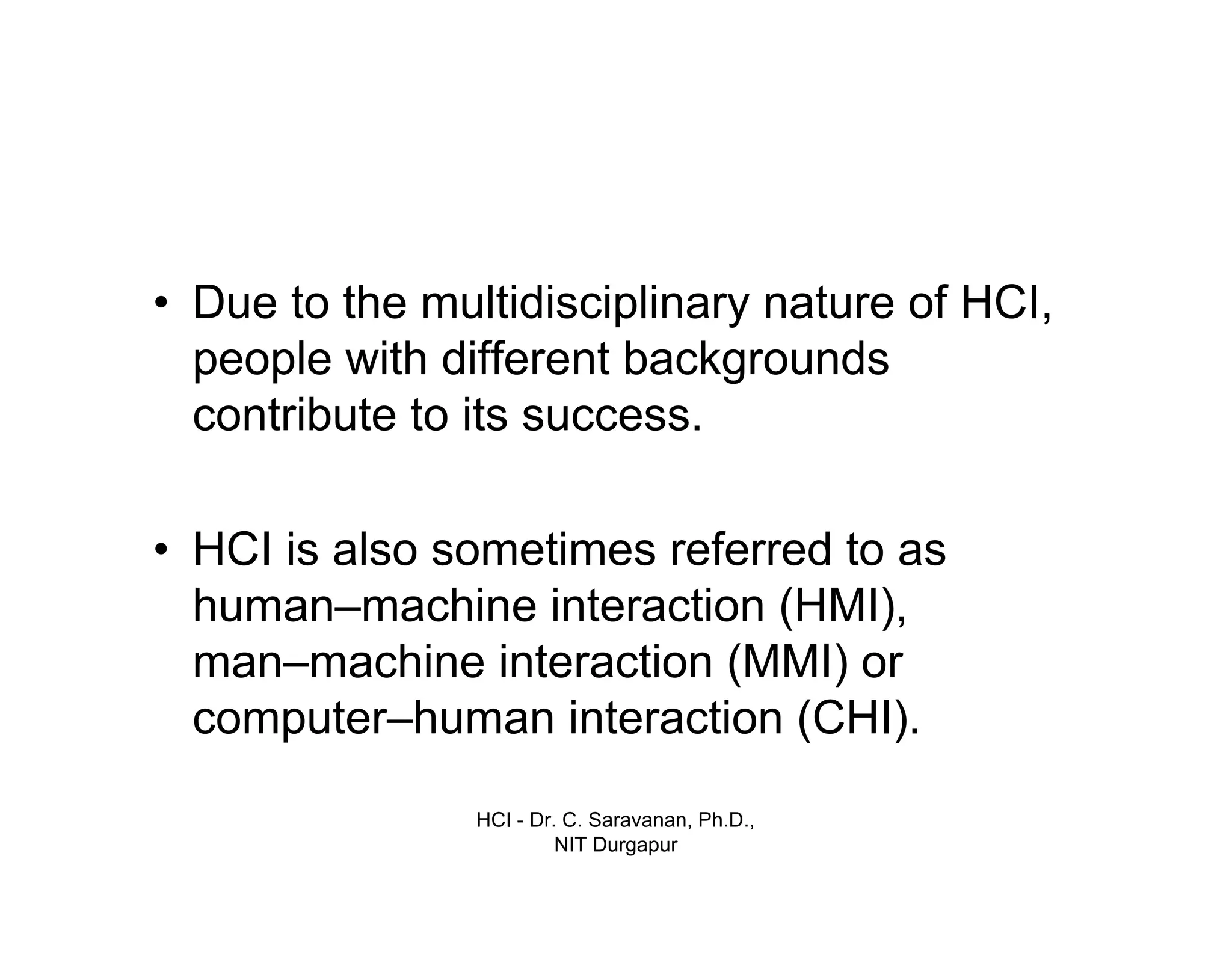
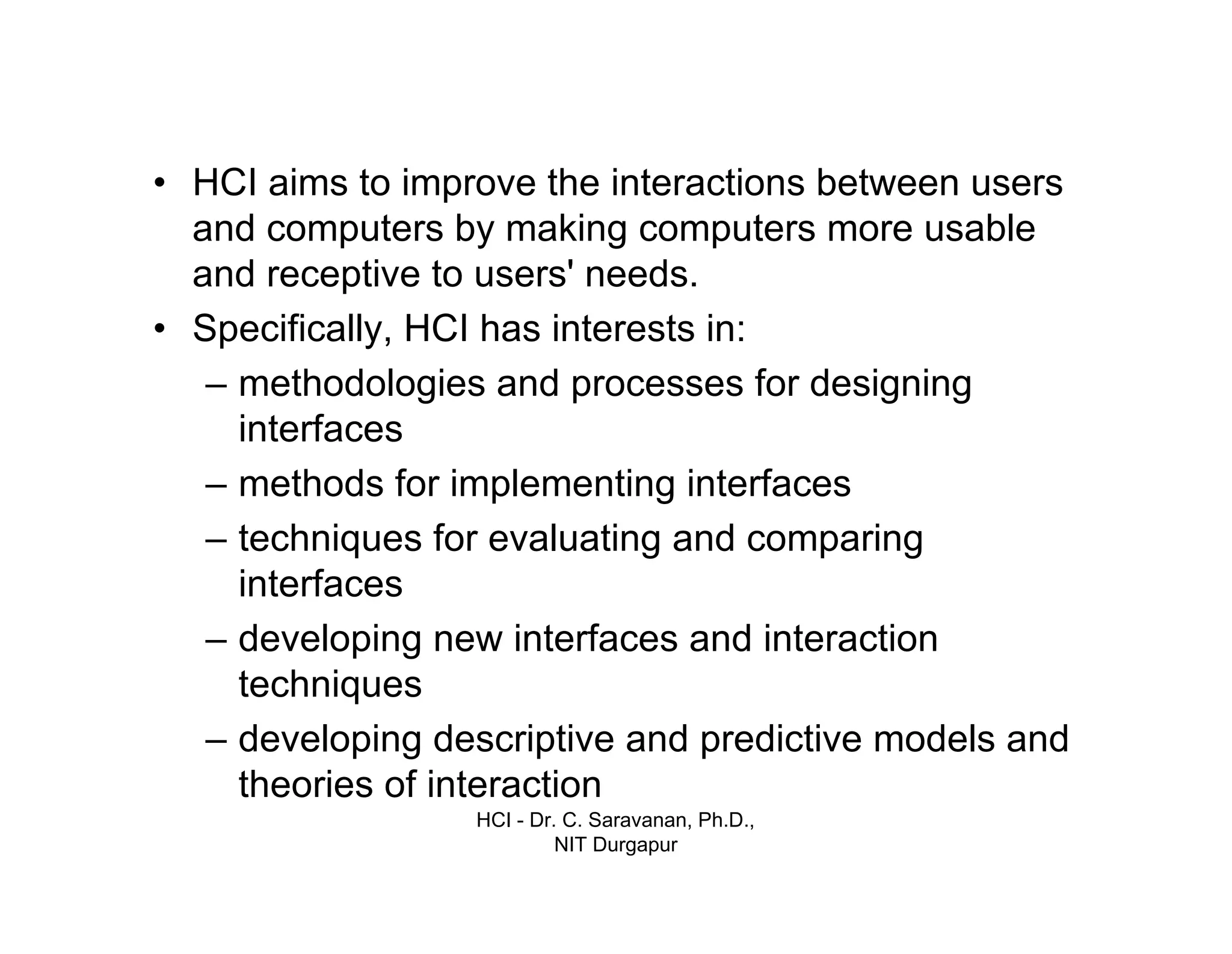
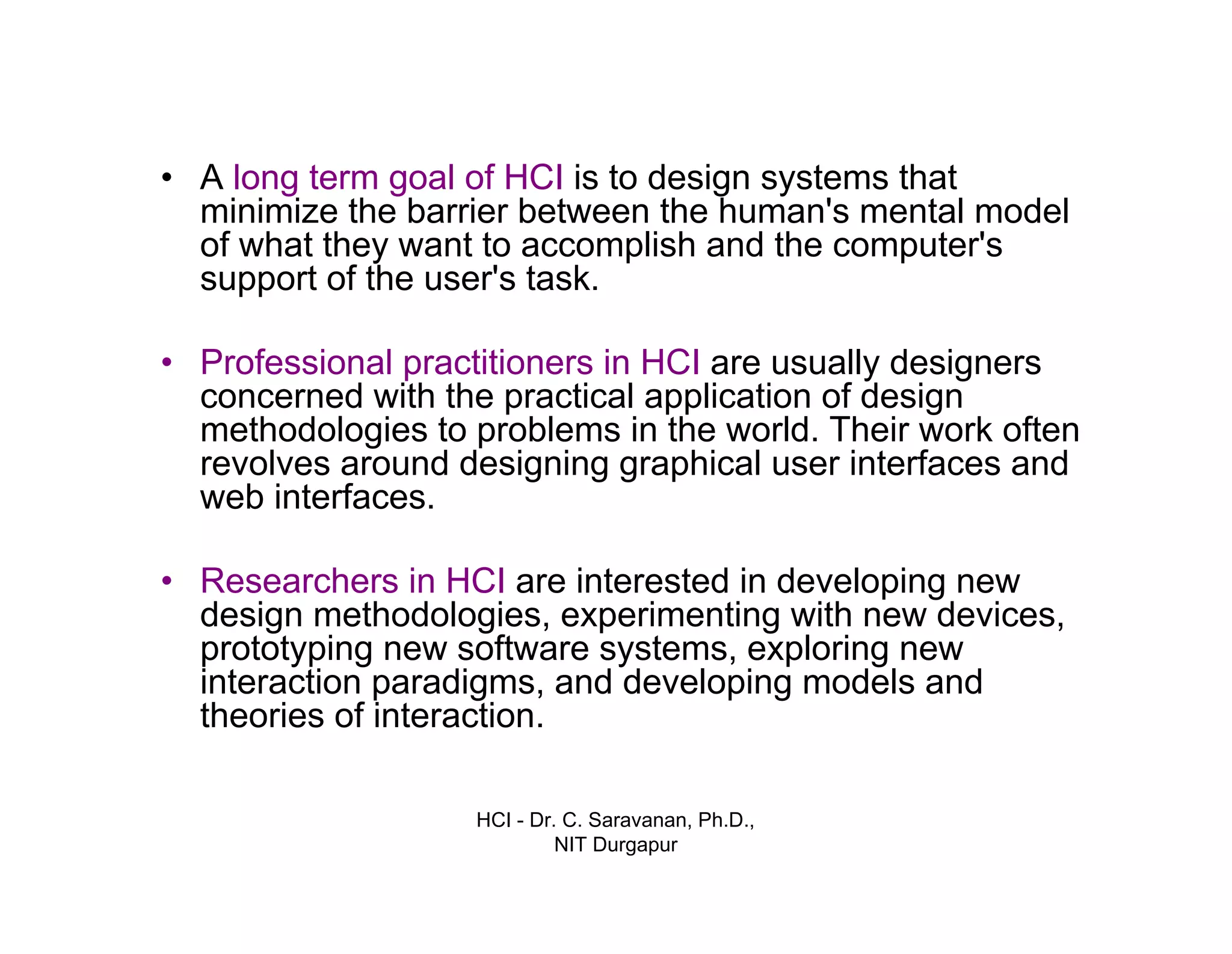
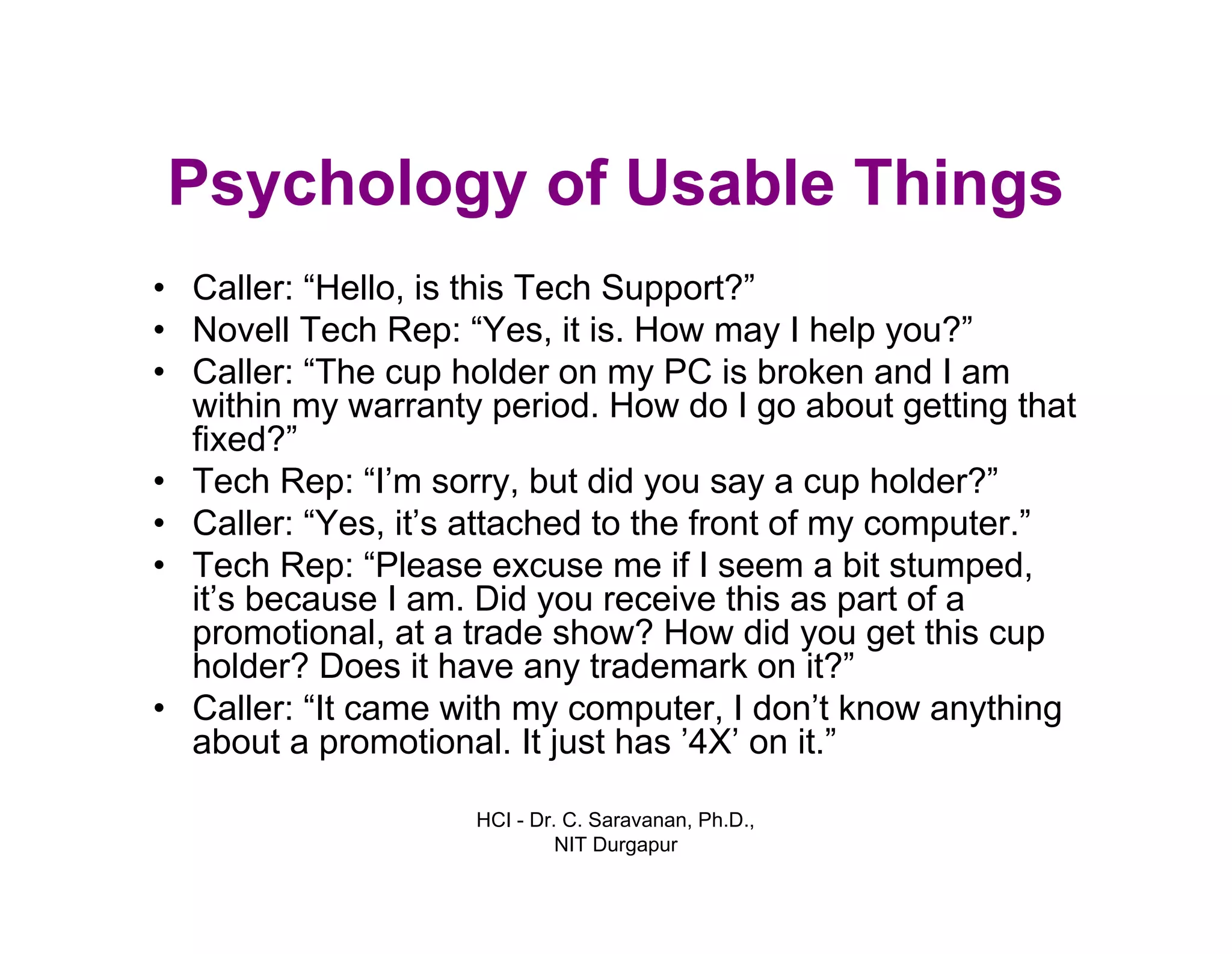
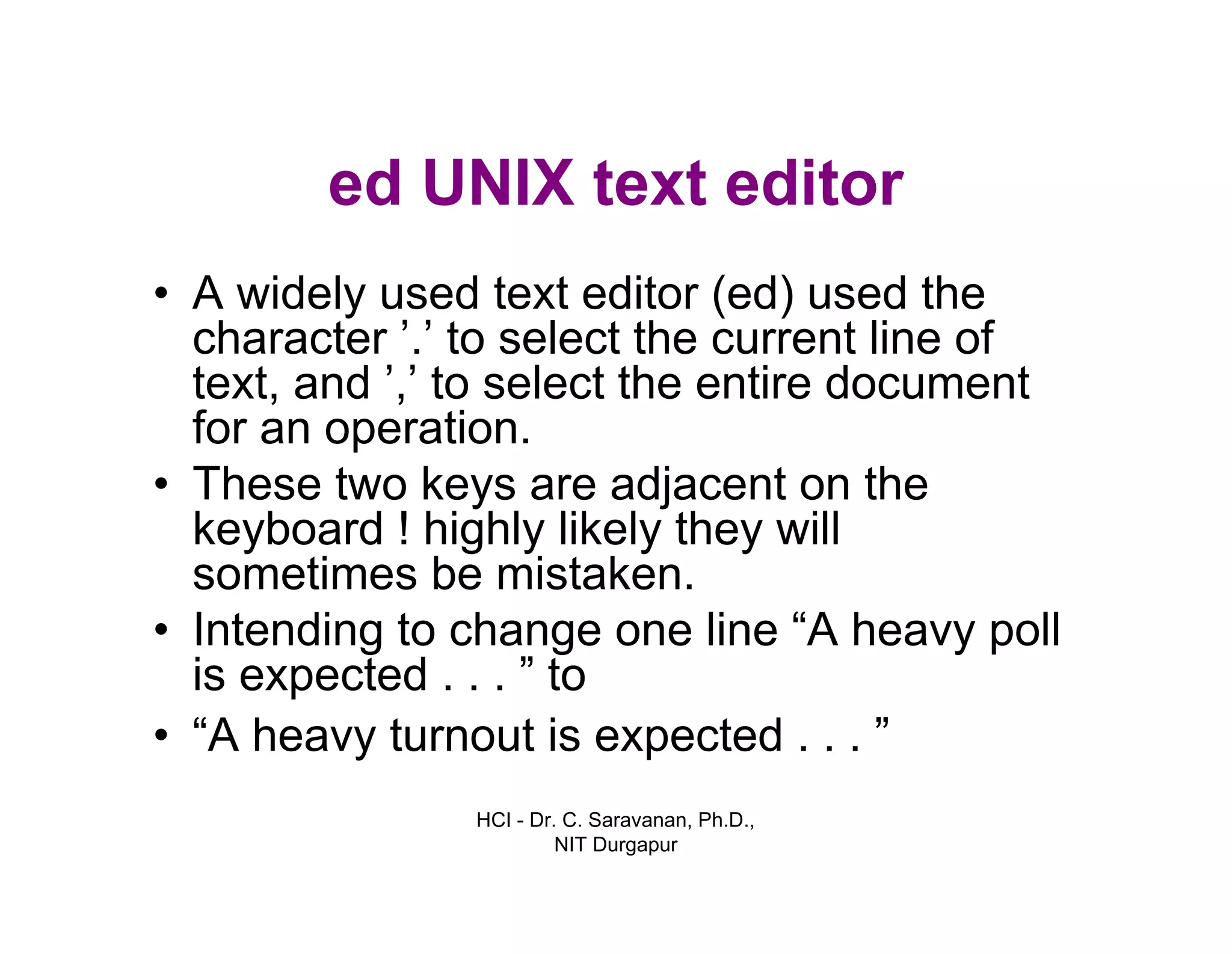
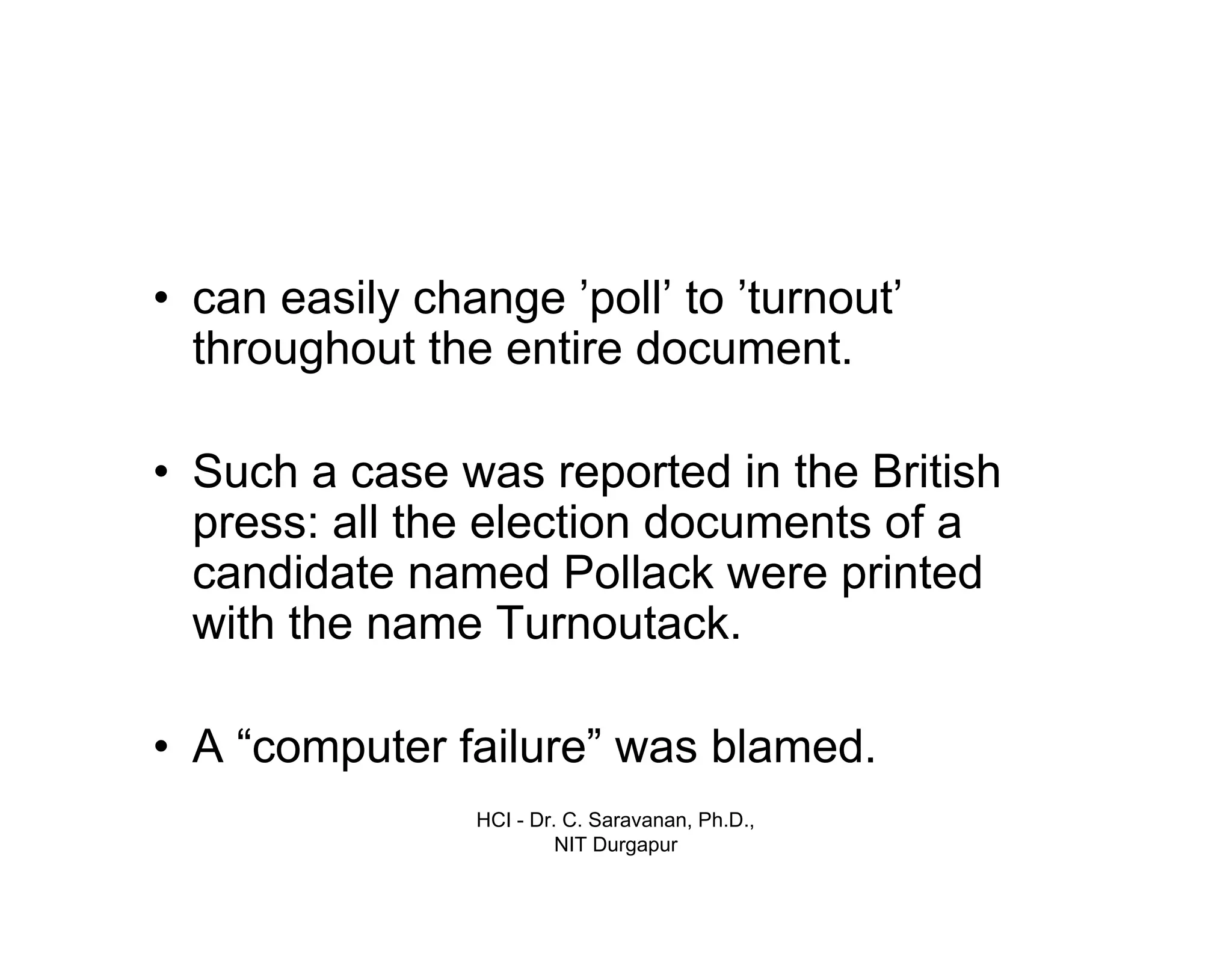
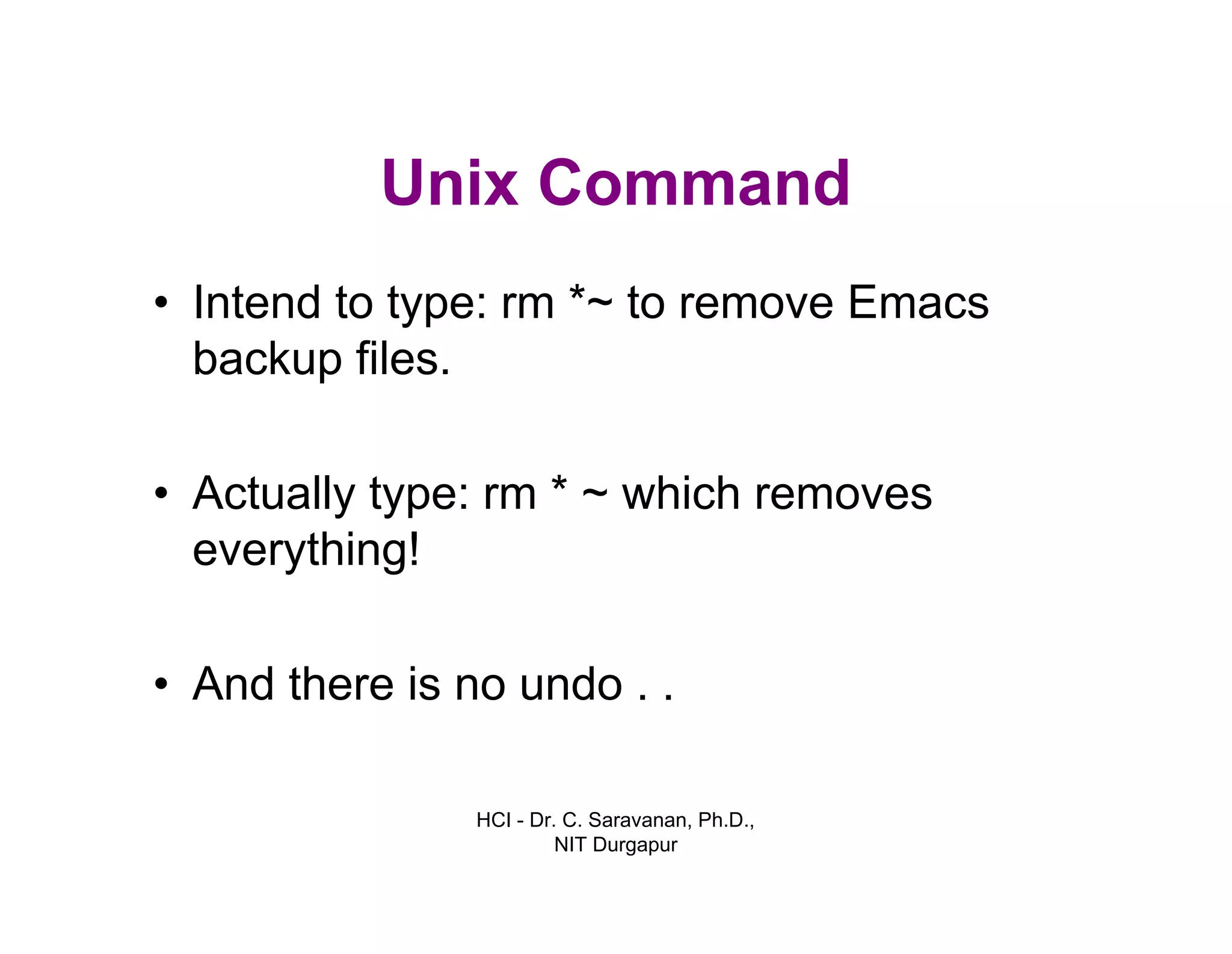
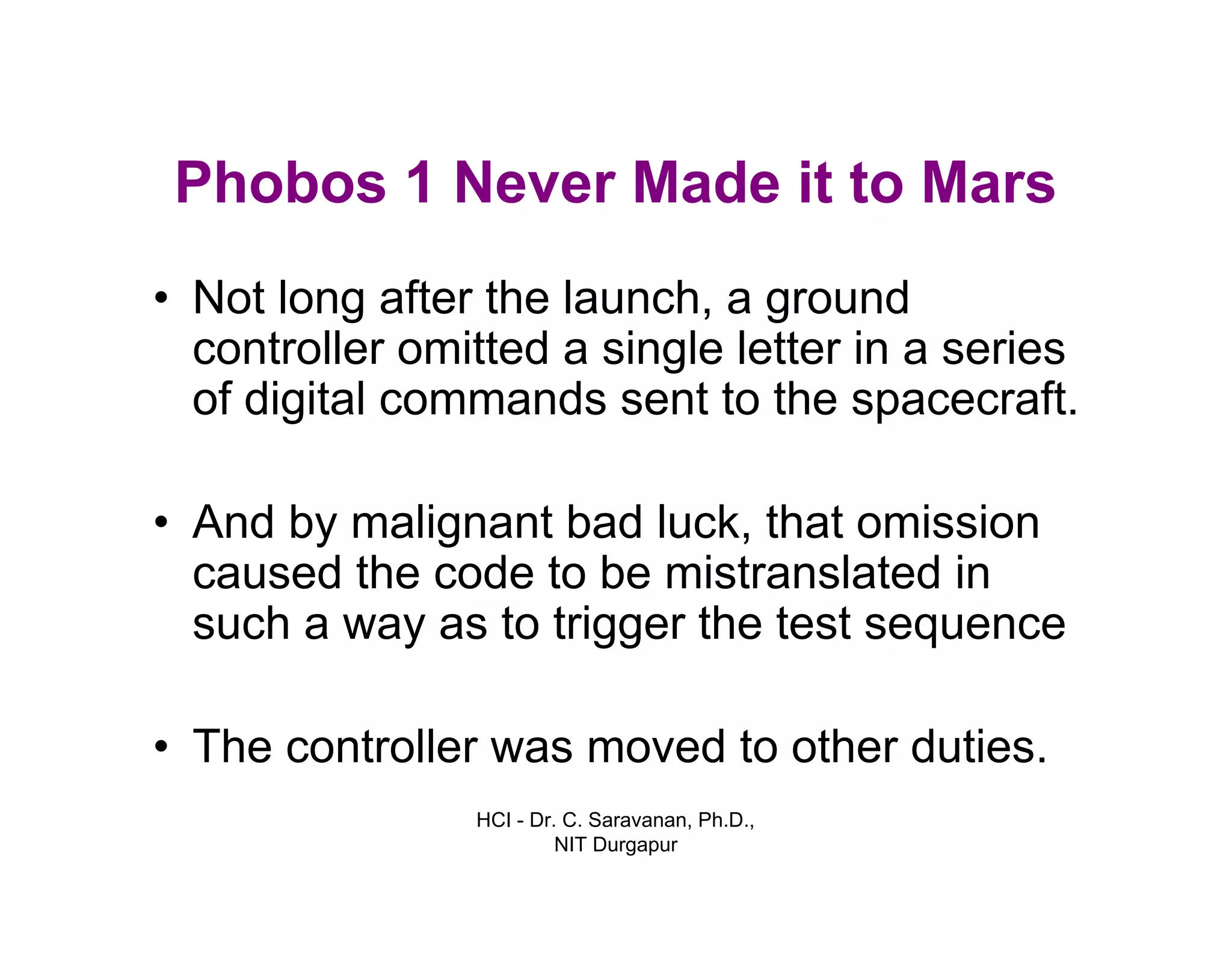

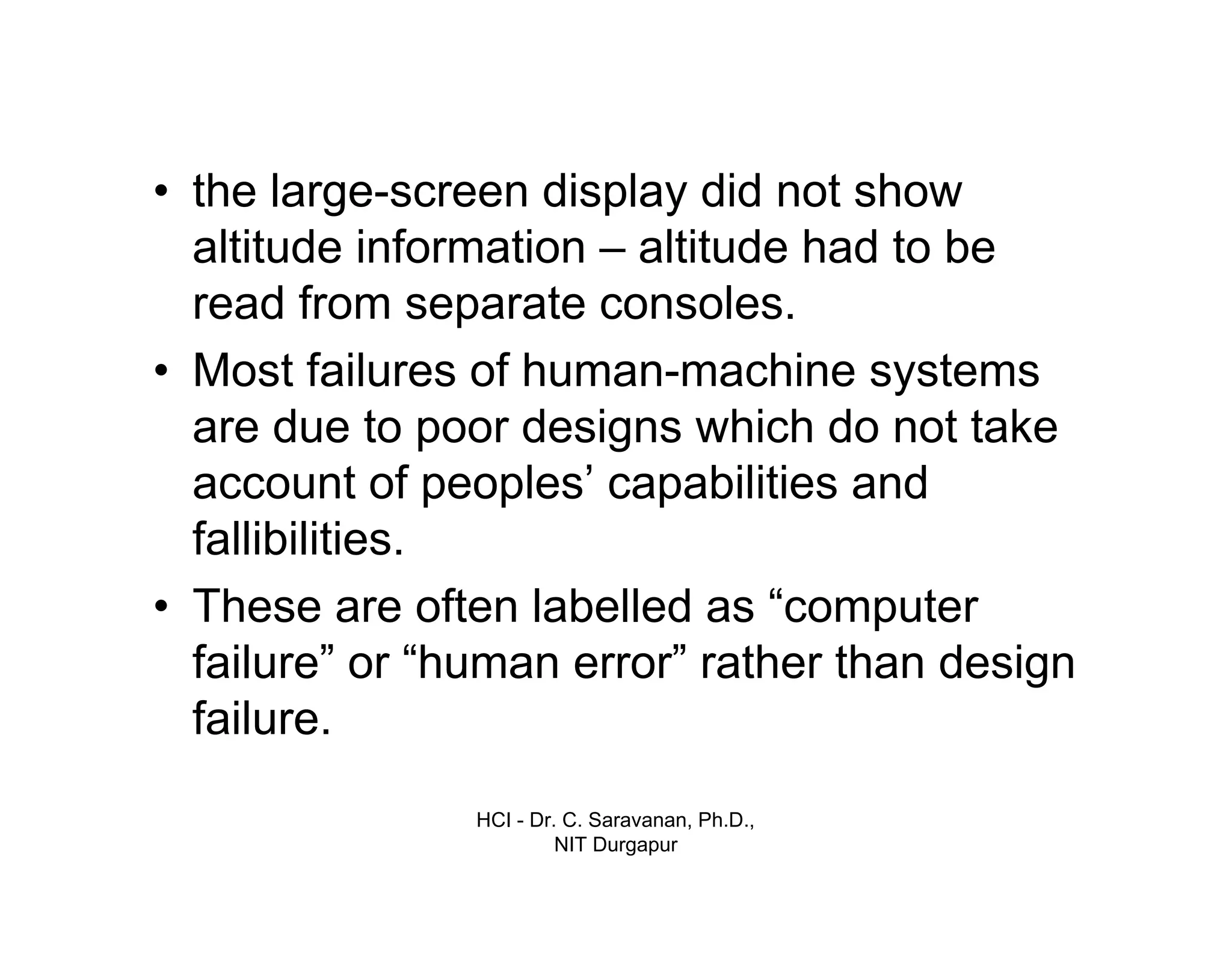
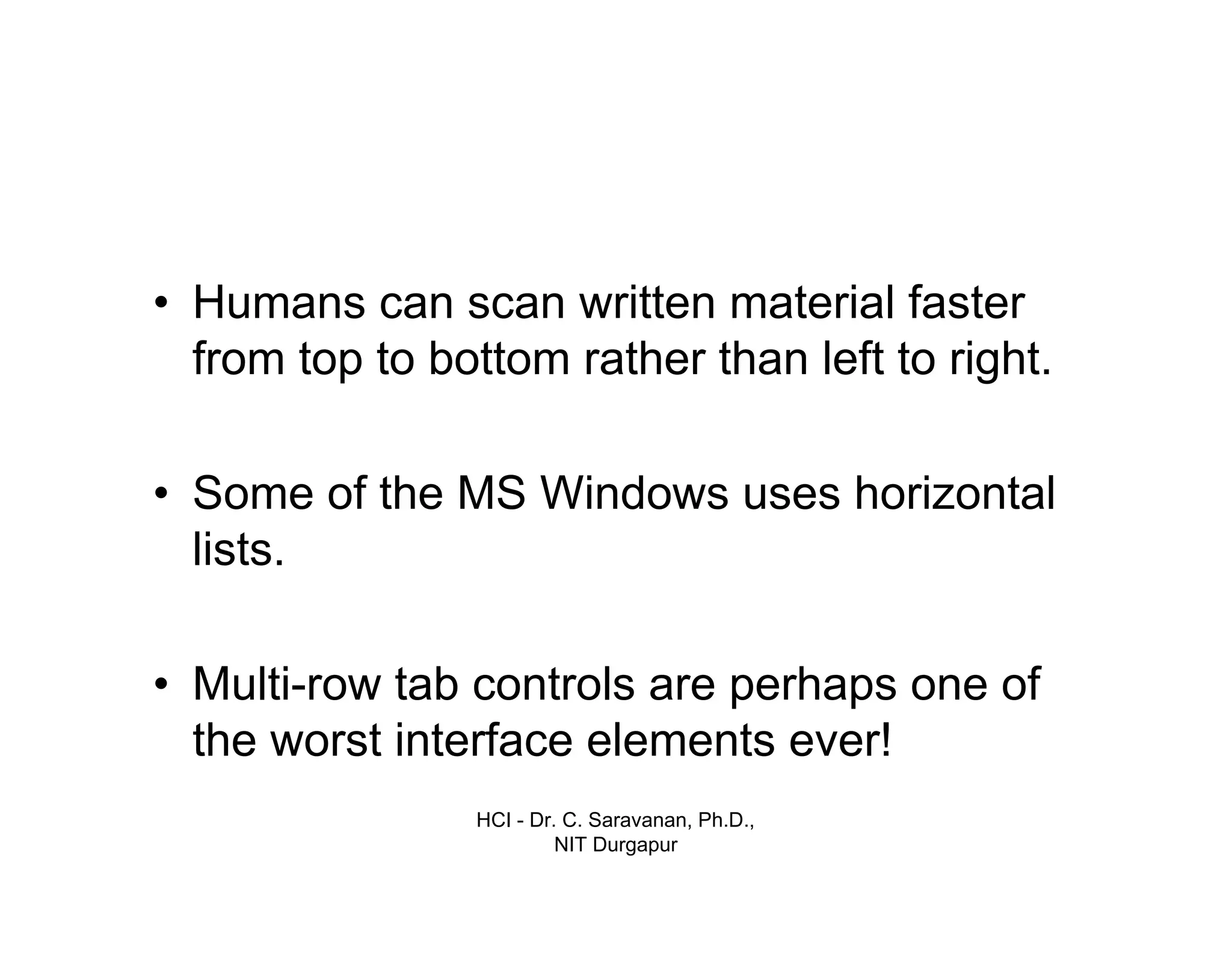
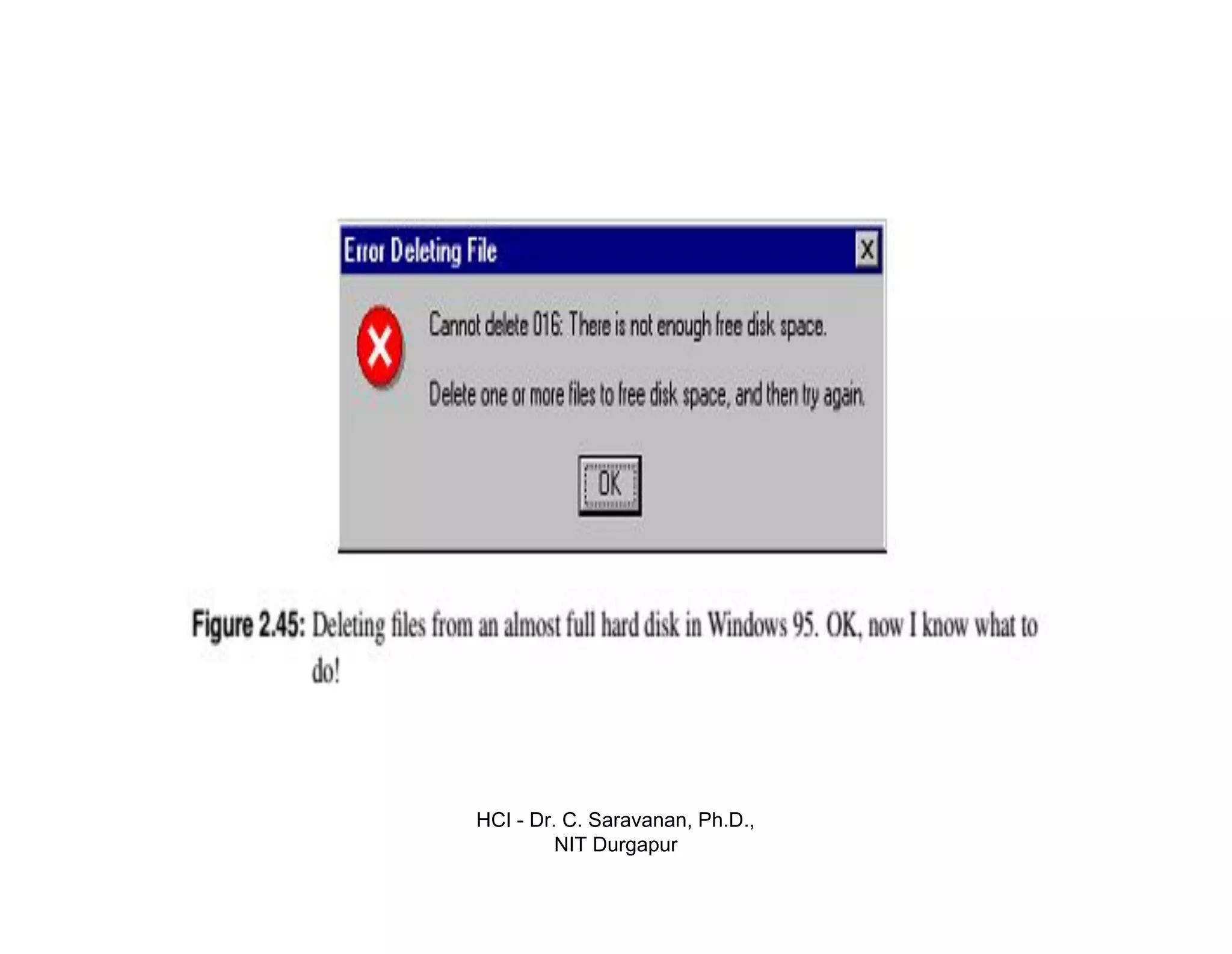
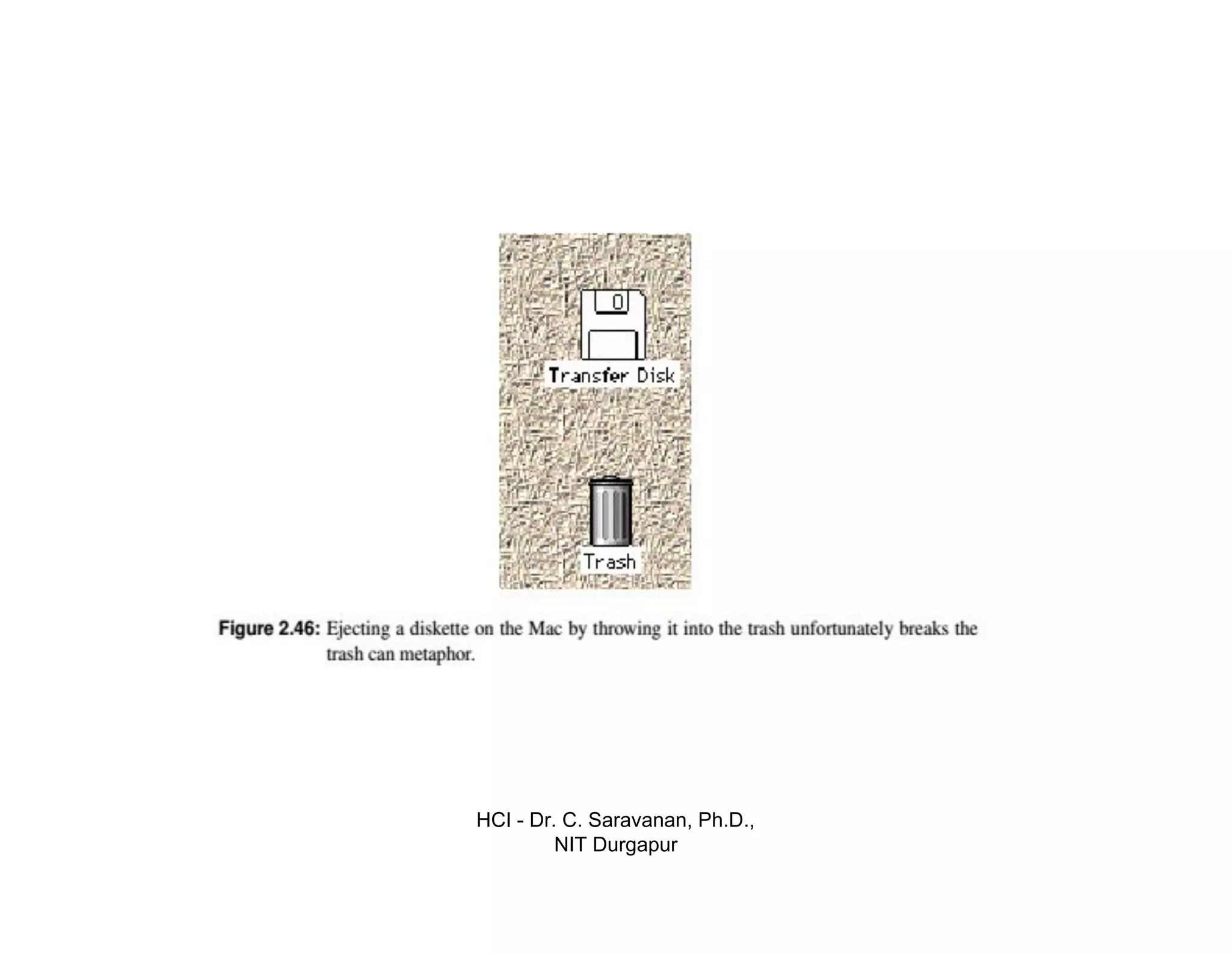
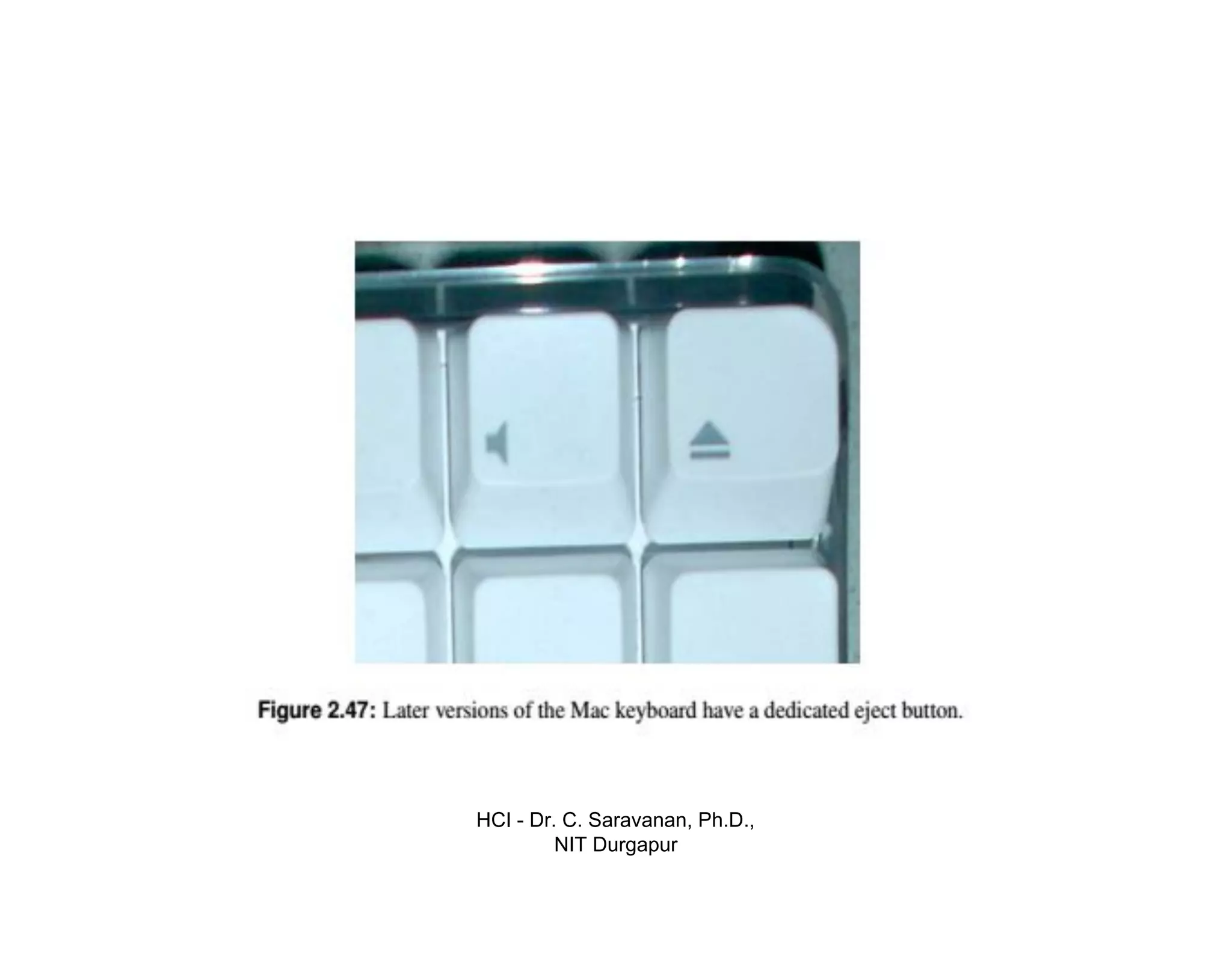
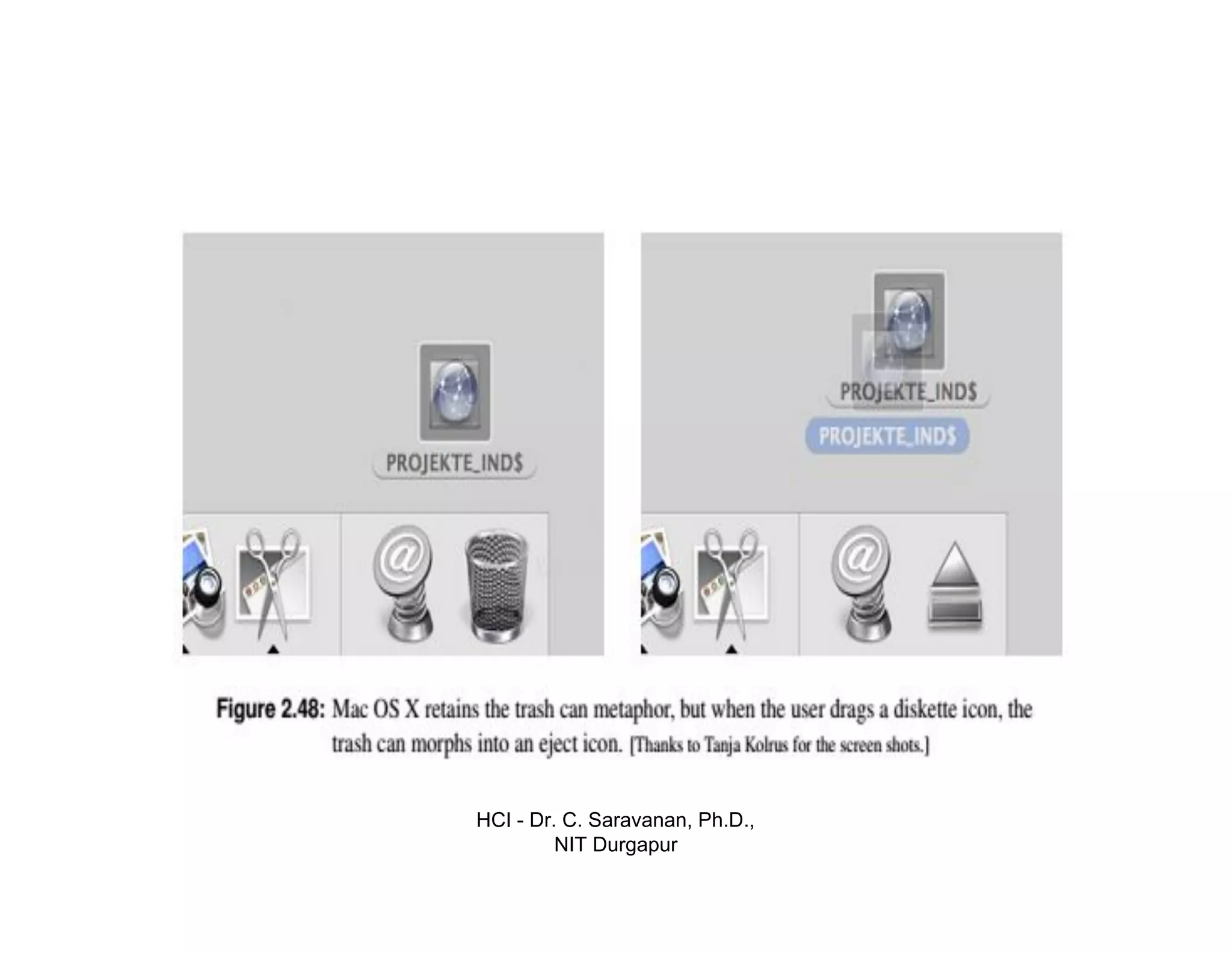
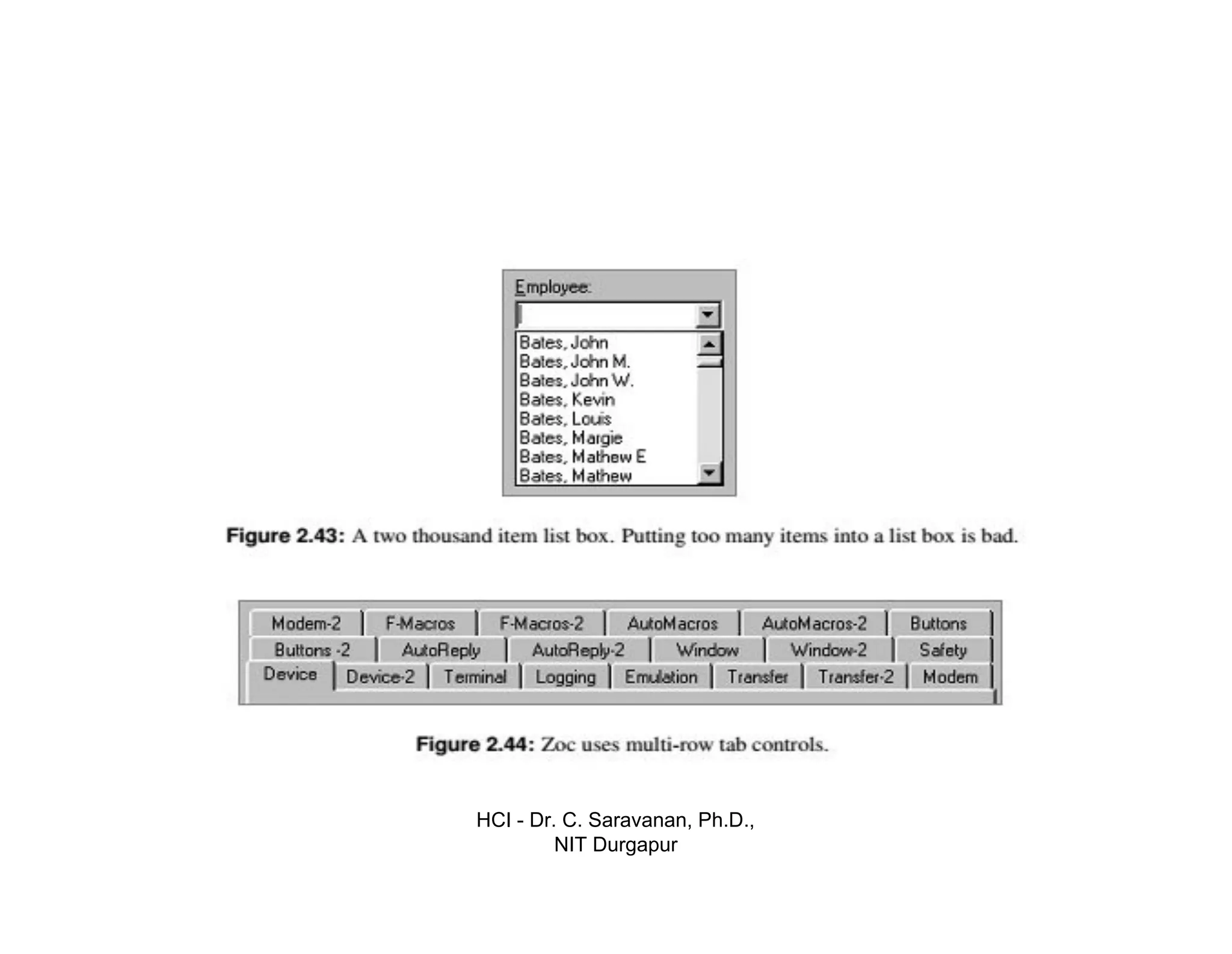
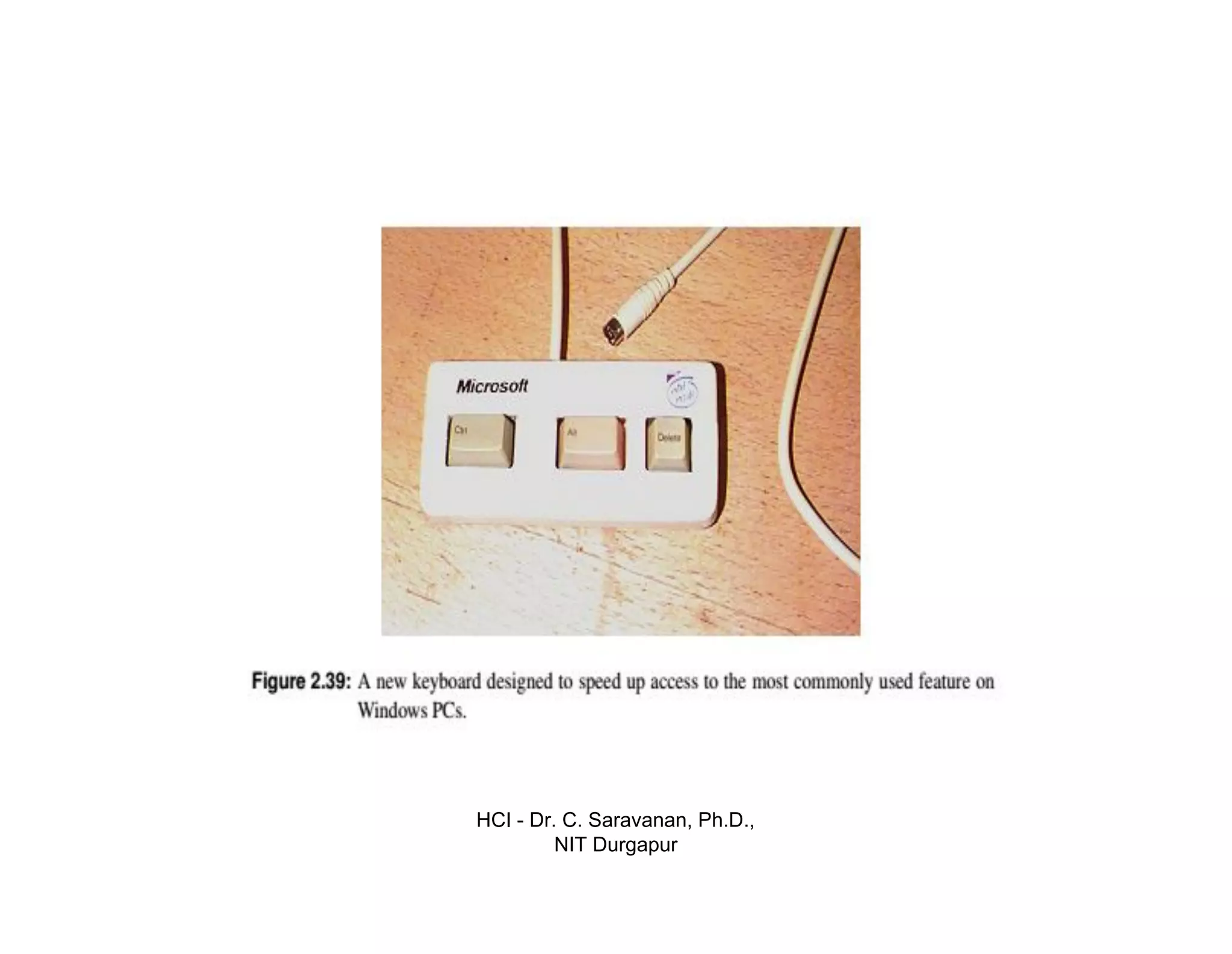
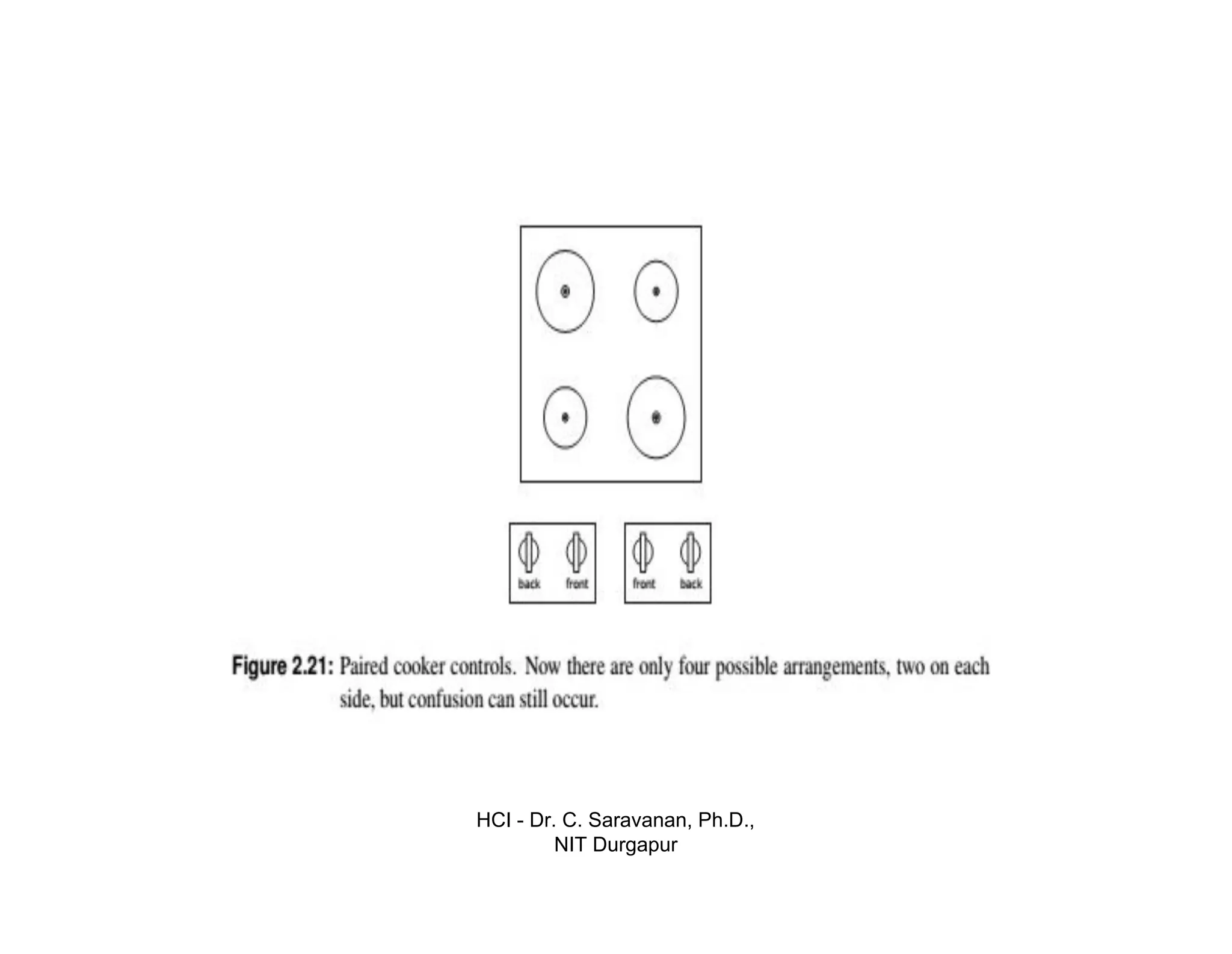
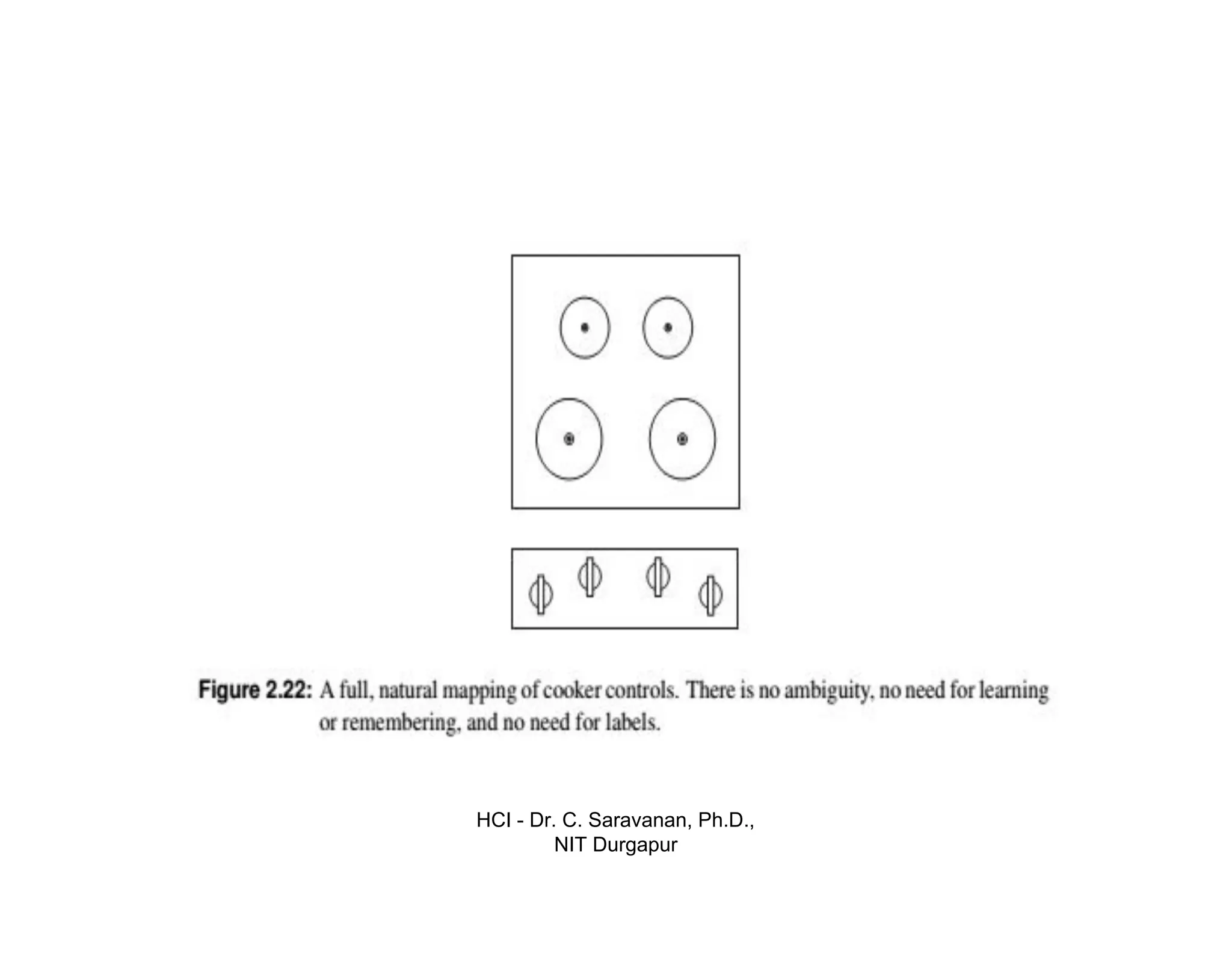

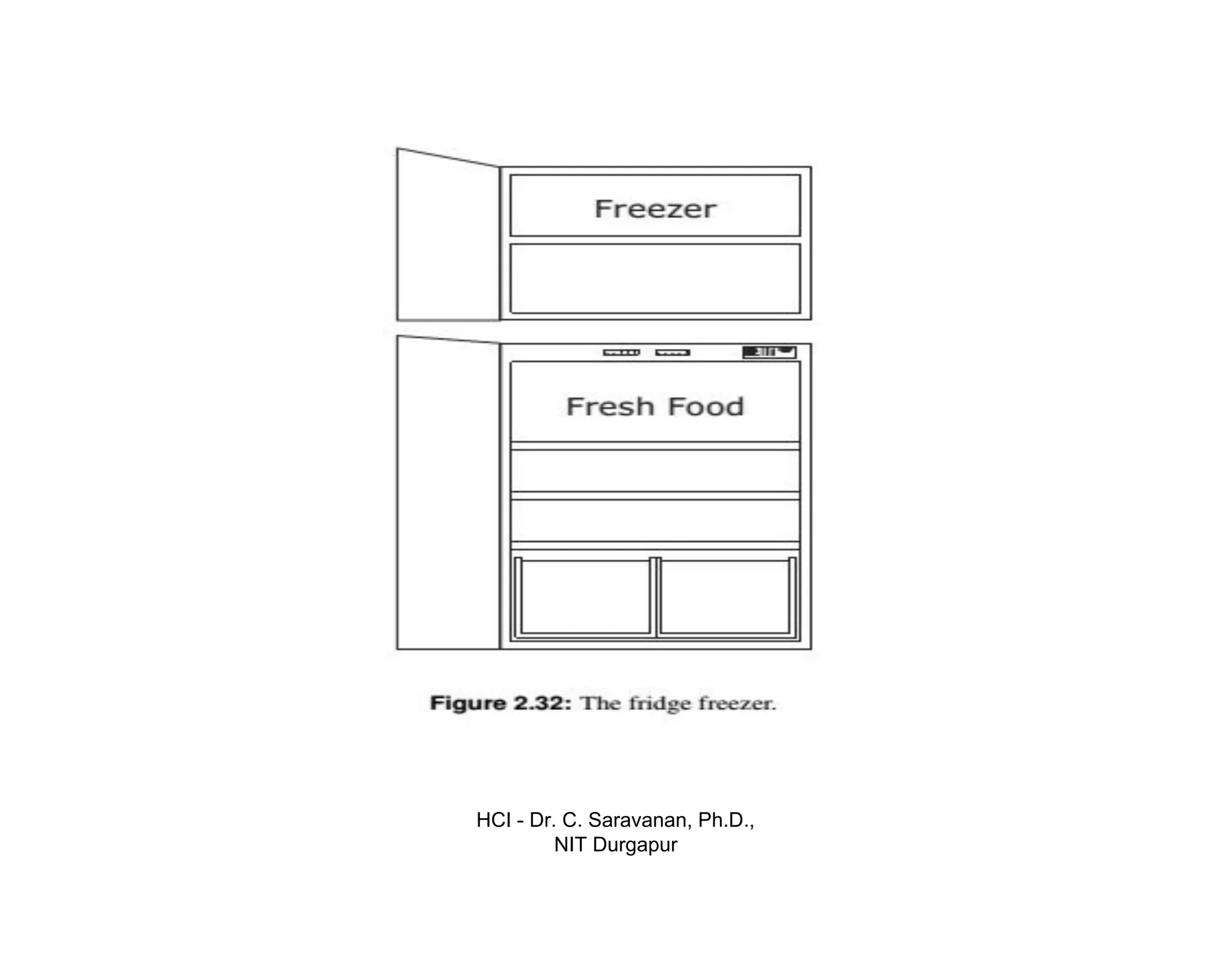

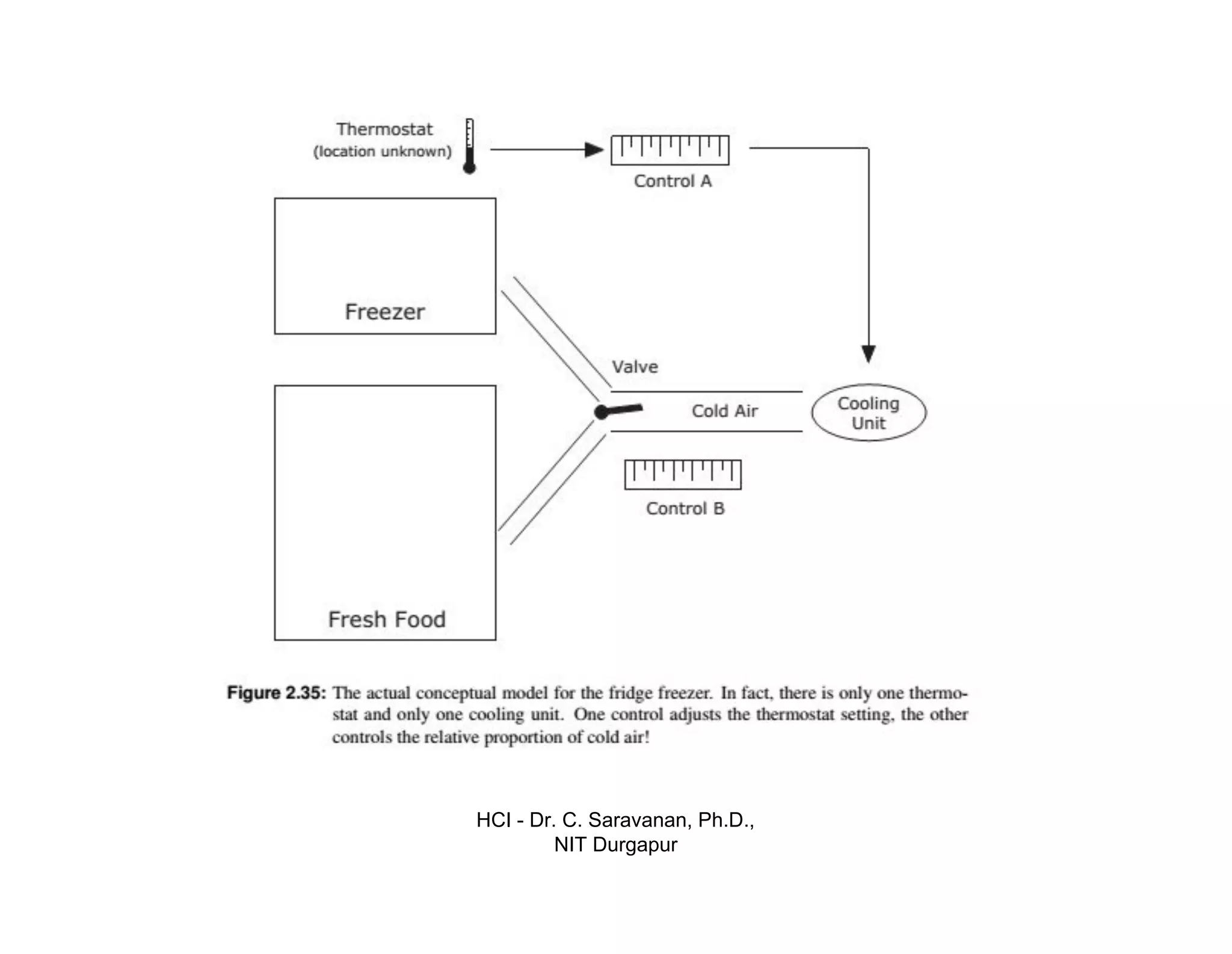


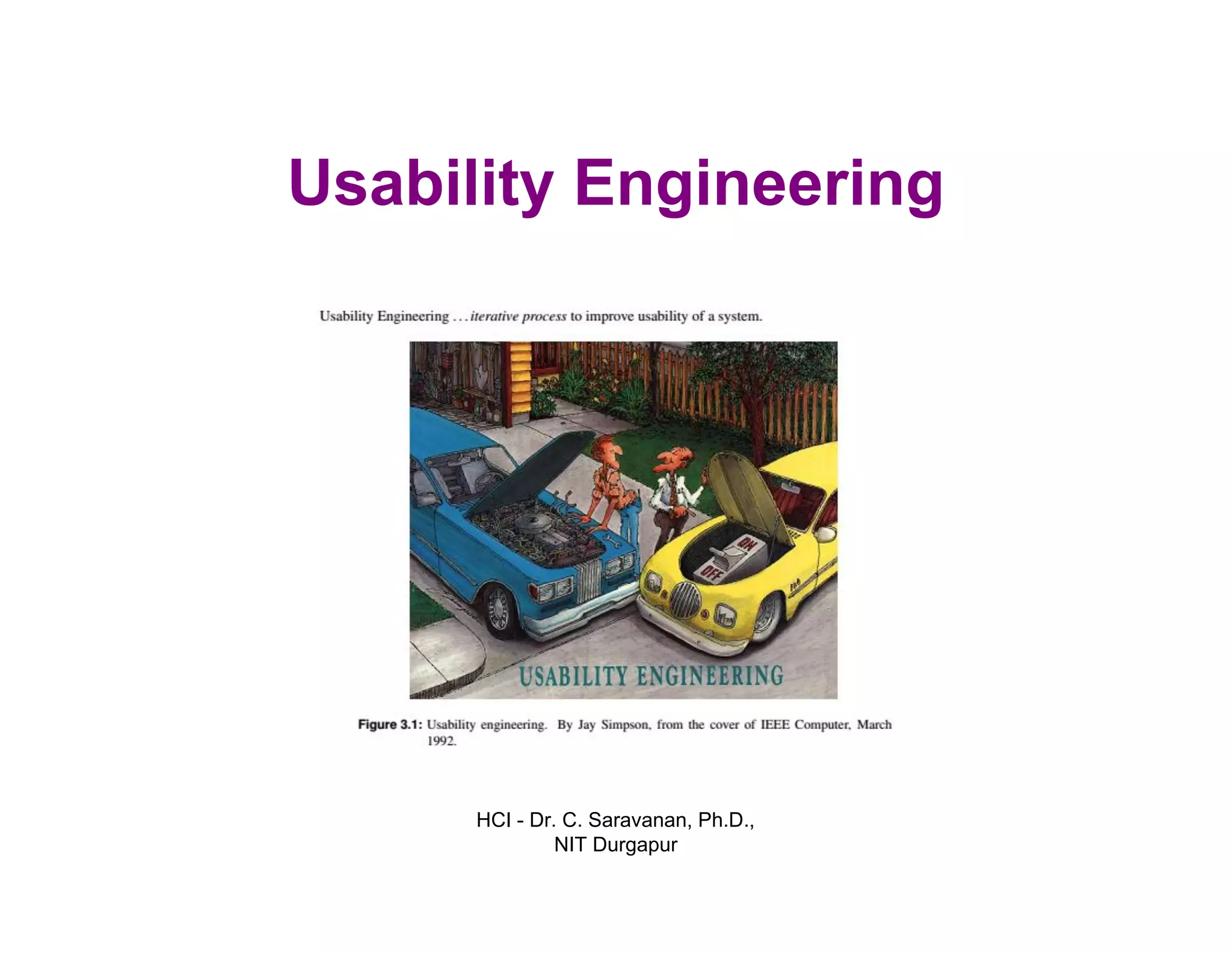
![HCI - Dr. C. Saravanan, Ph.D.,
NIT Durgapur
Usability Definition
• The ISO defines usability as “the extent to
which a product can be used by specified
users to achieve specified goals with
effectiveness, efficiency and satisfaction in
a specified context of use.” [ISO, 1998].](https://image.slidesharecdn.com/humancomputerinteraction-150121201122-conversion-gate02/75/Human-computer-interaction-33-2048.jpg)
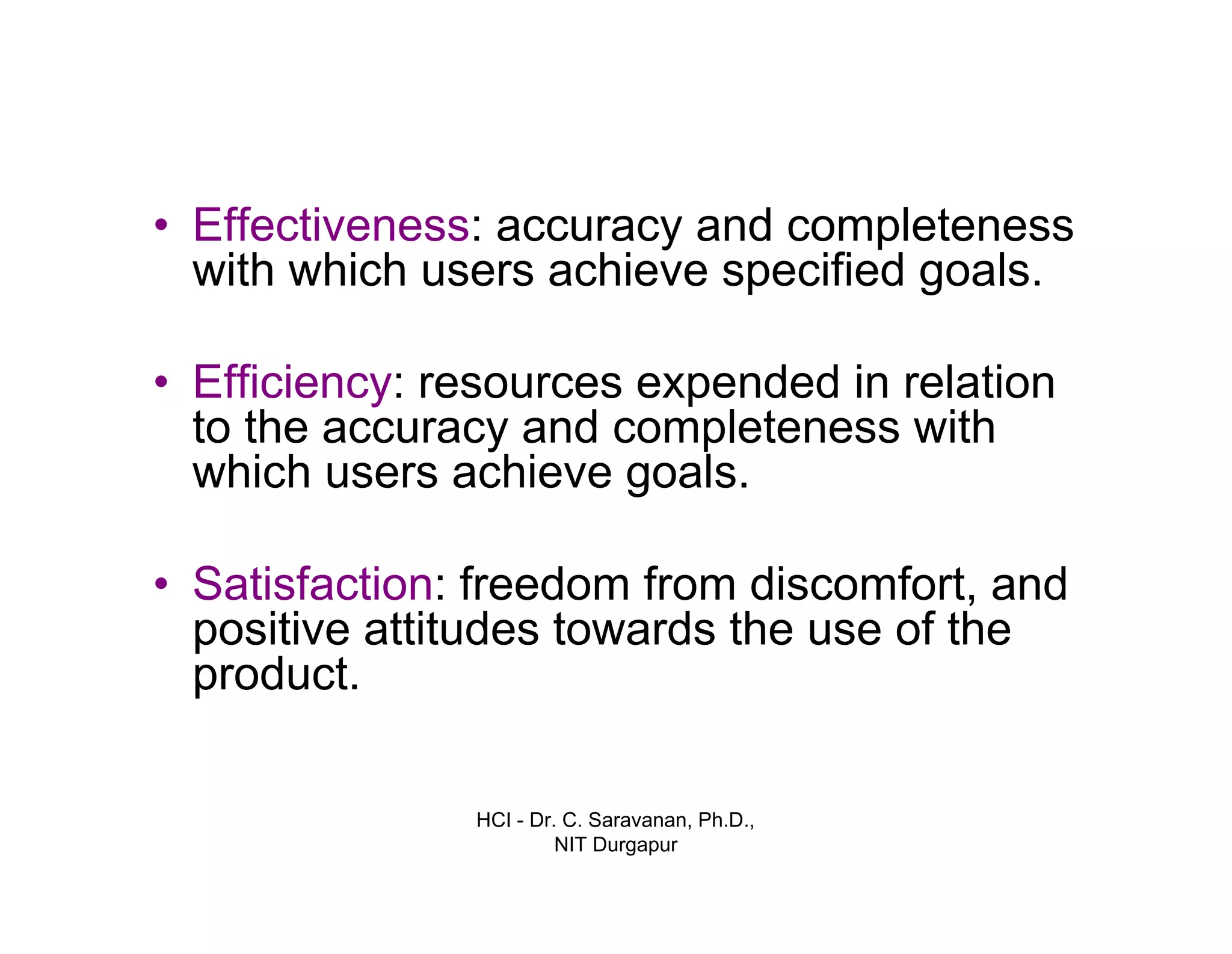



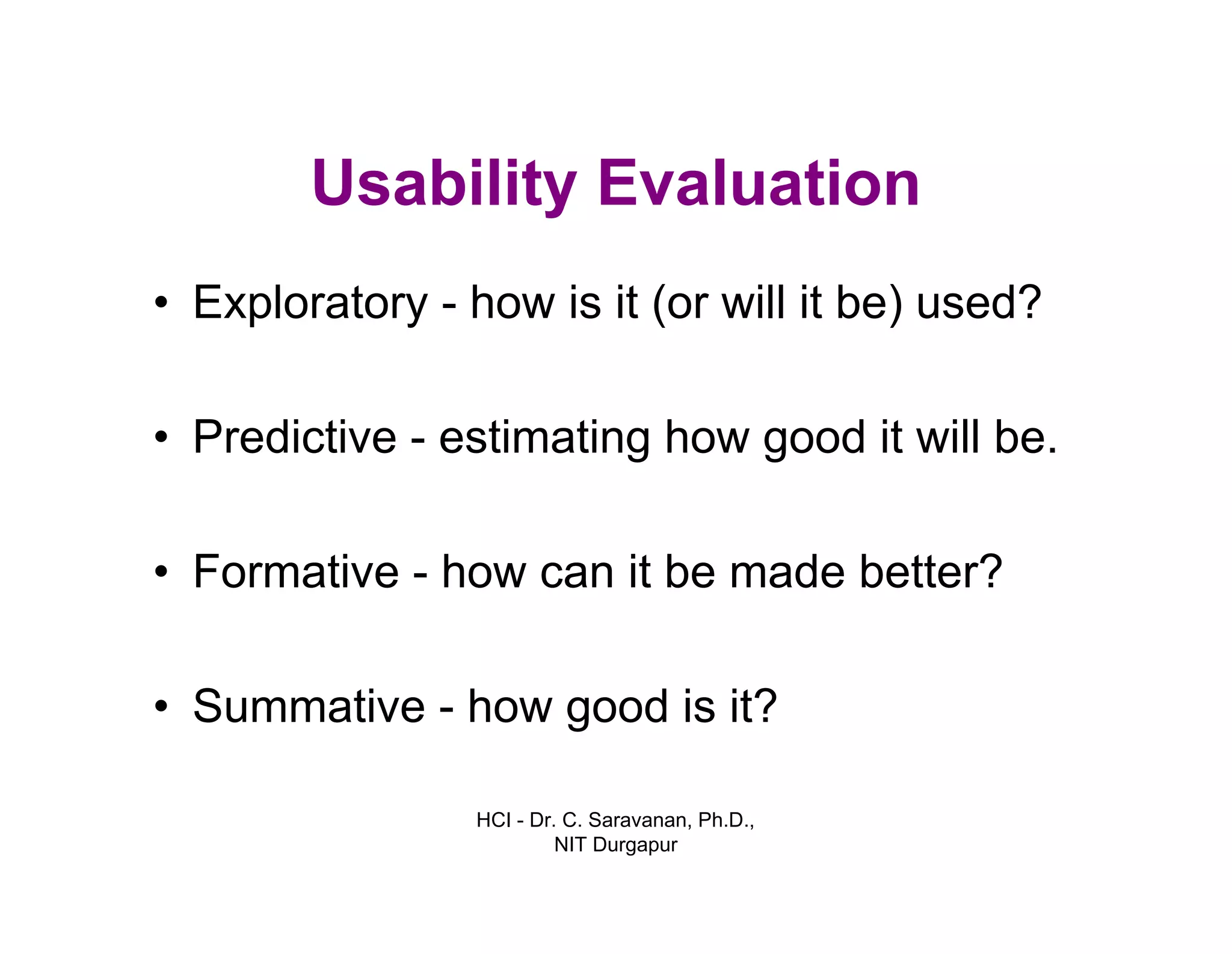
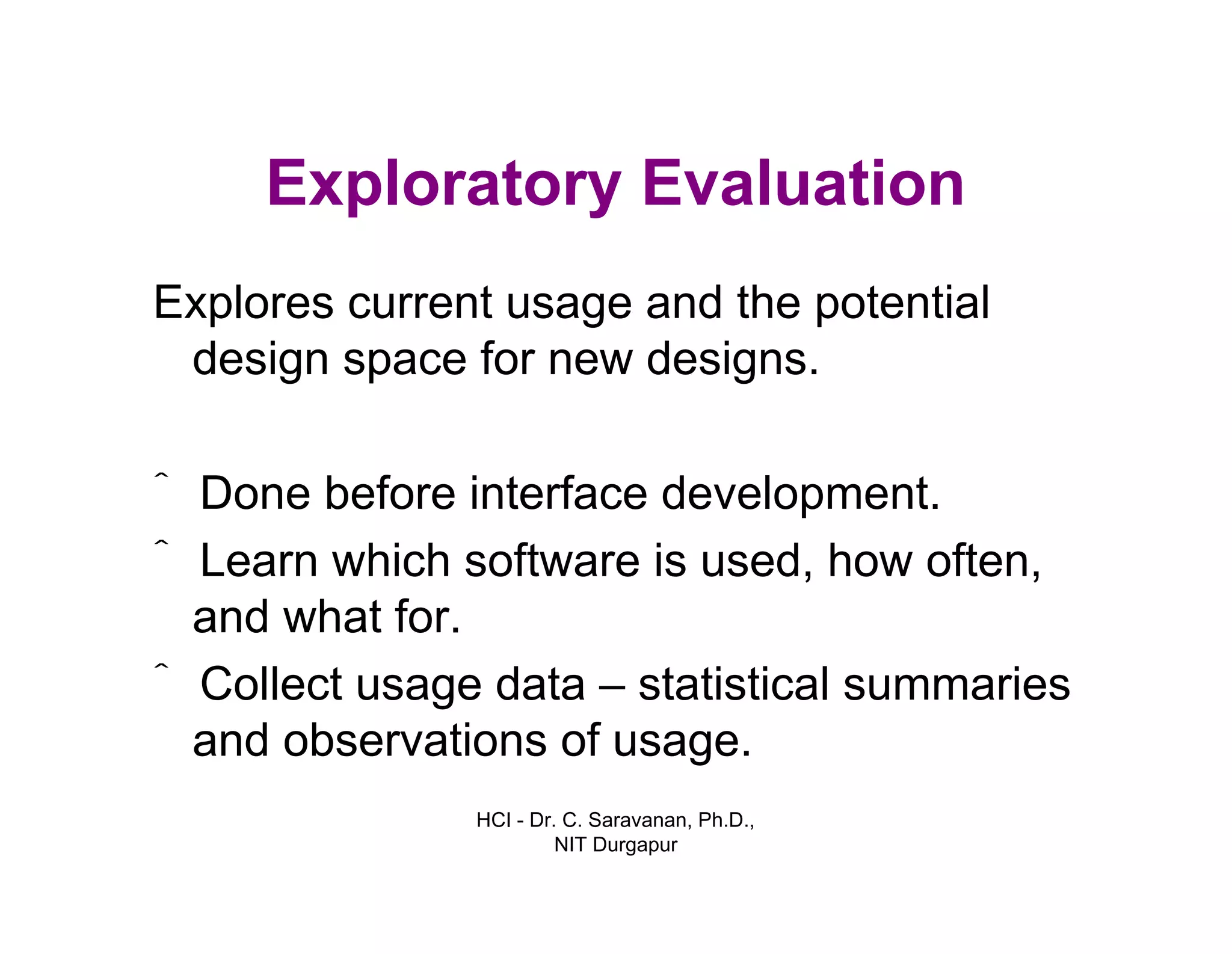
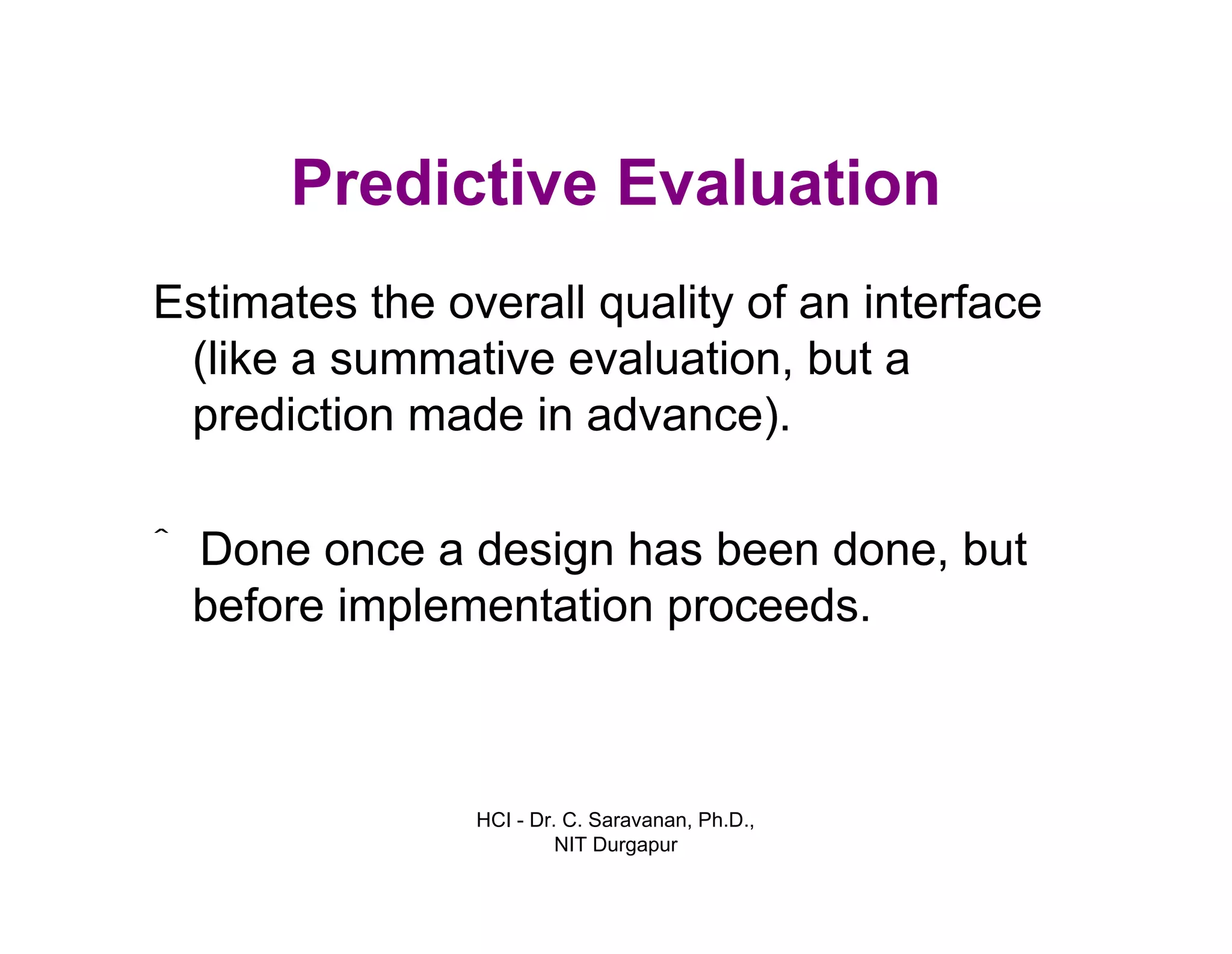
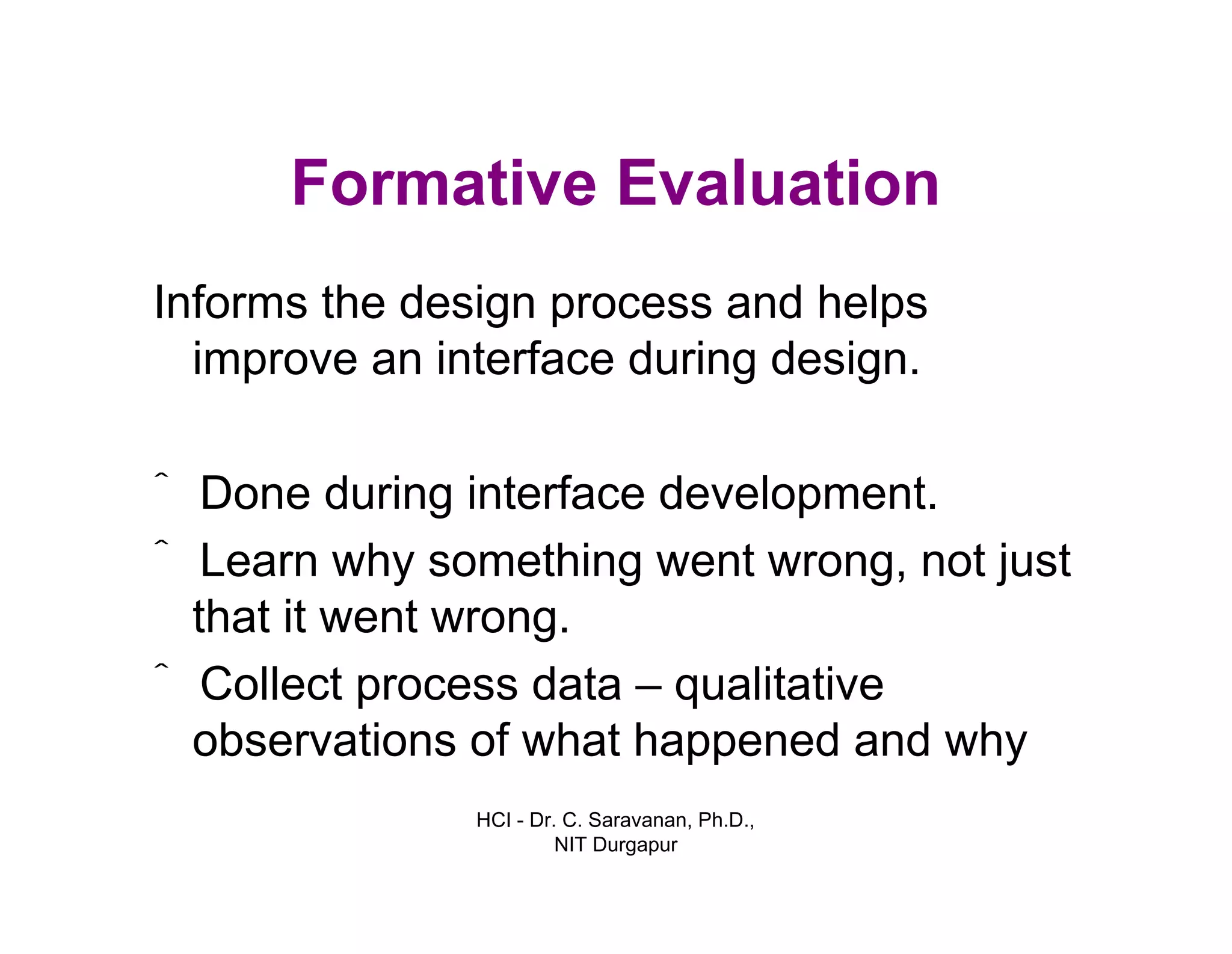
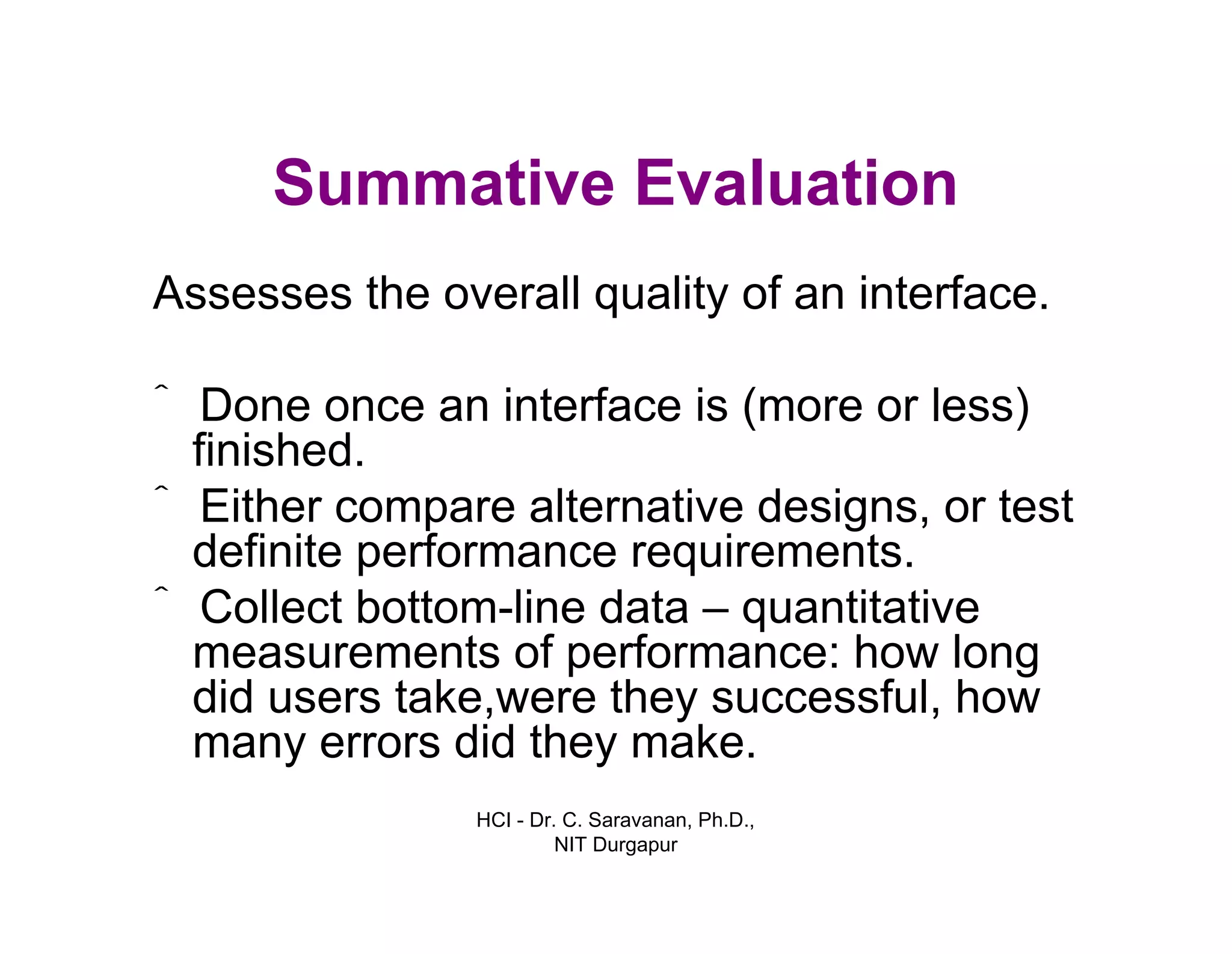
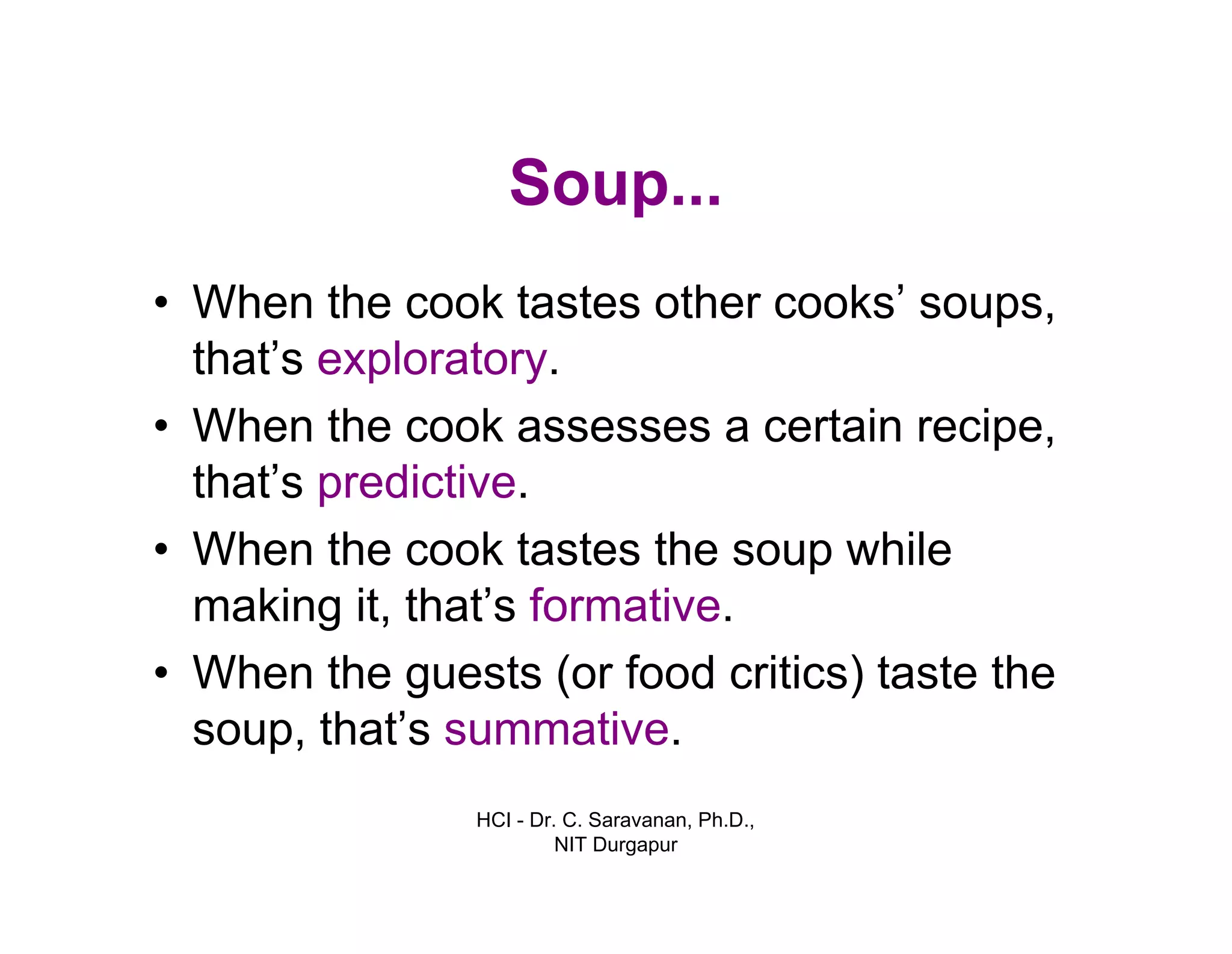
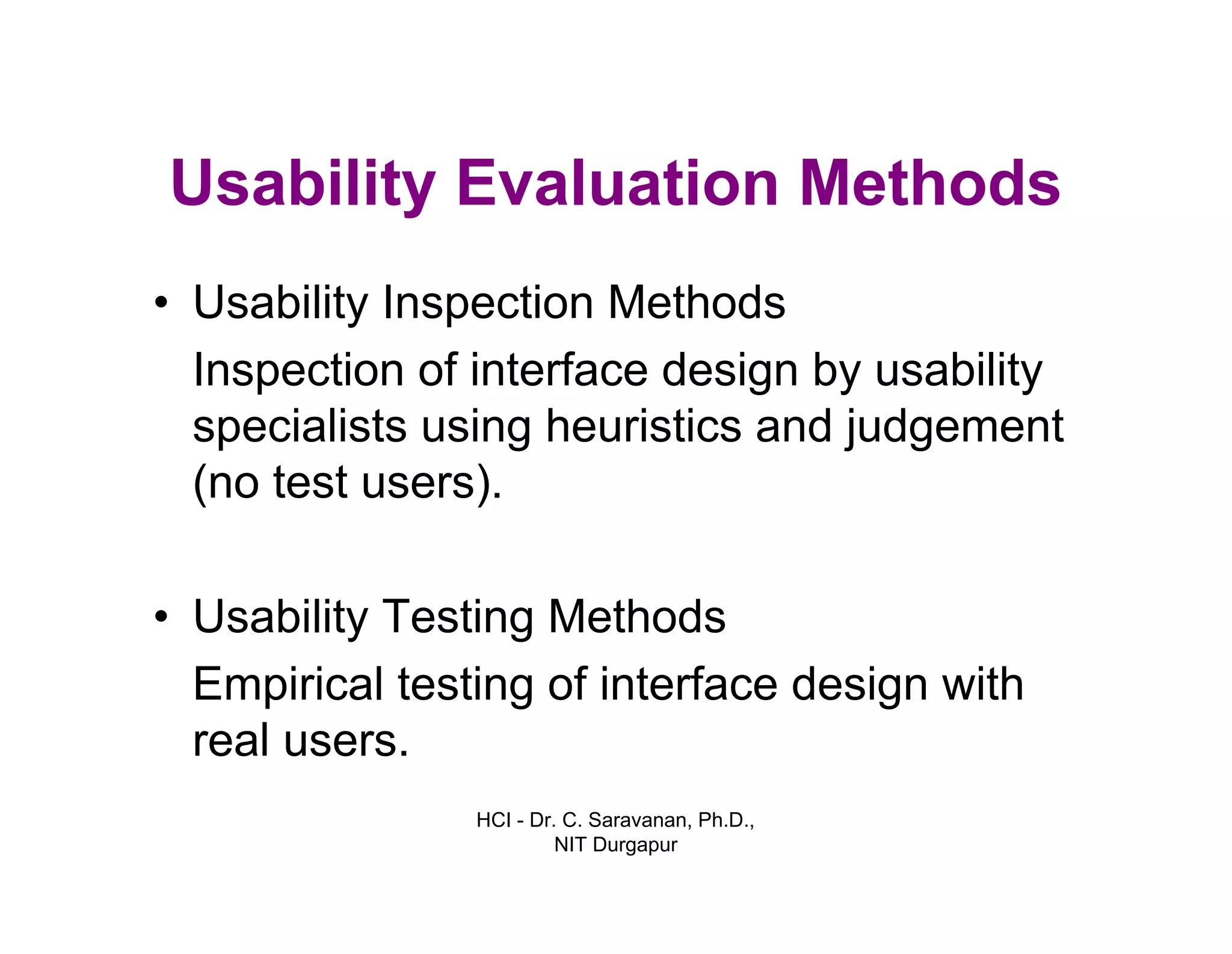
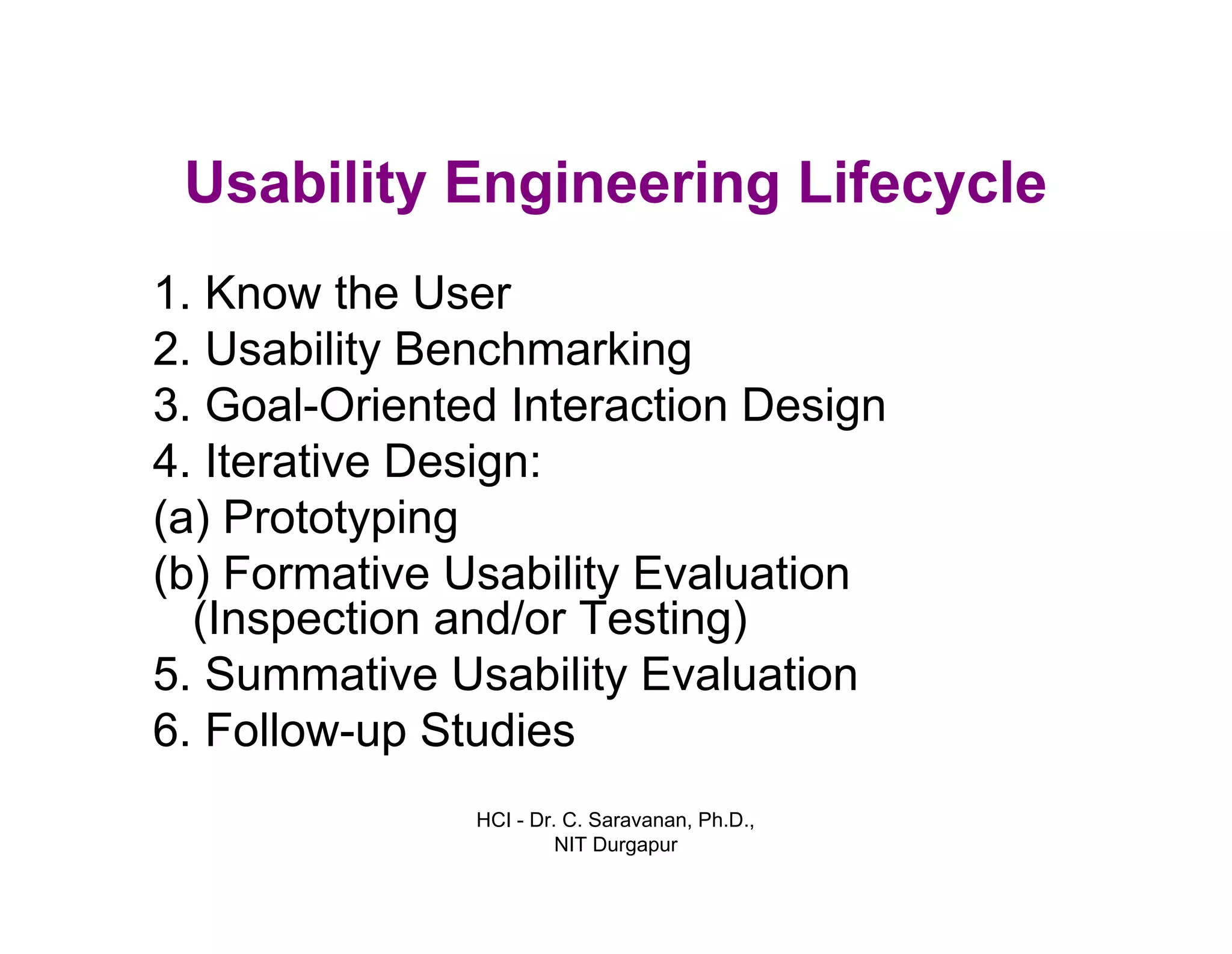
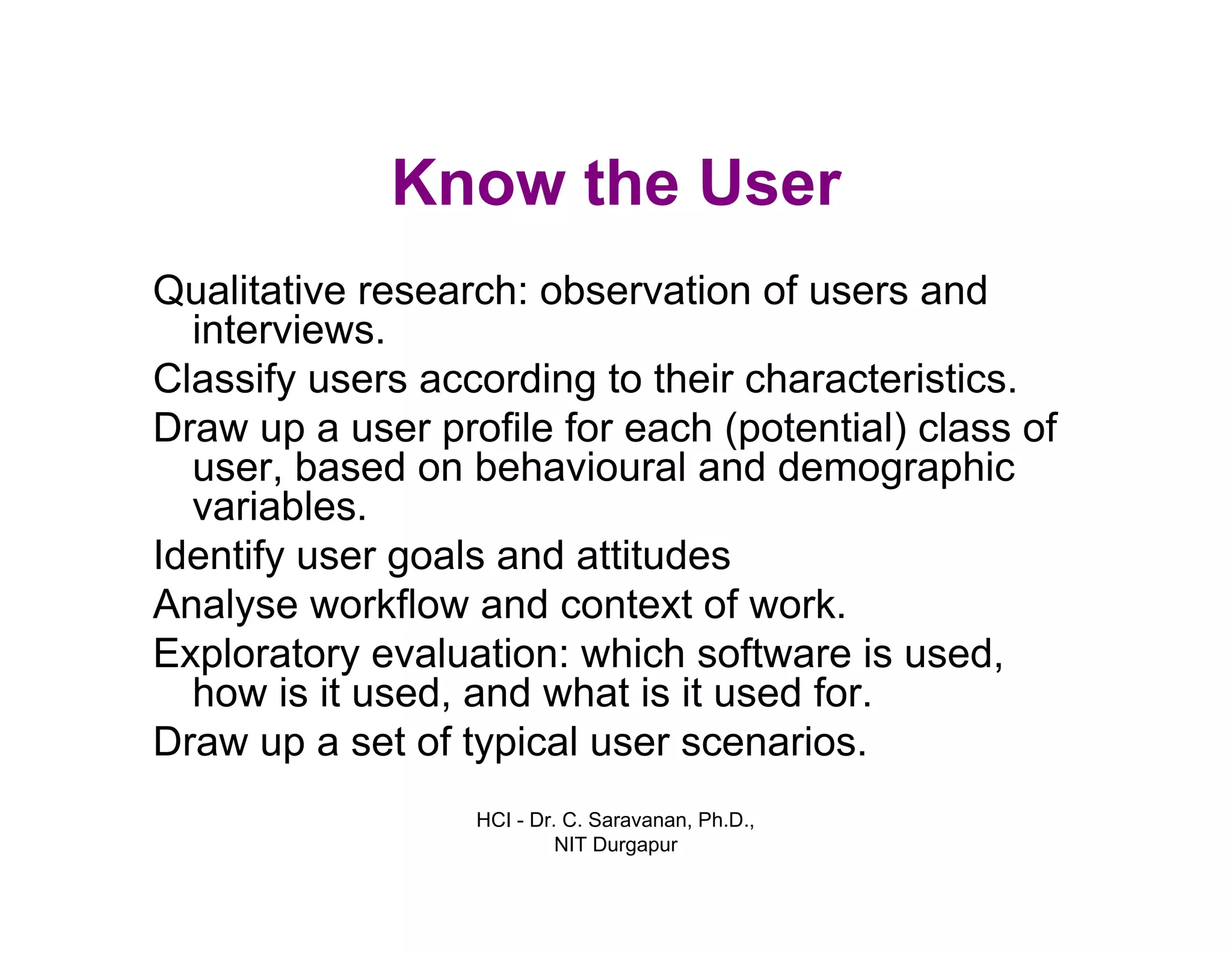

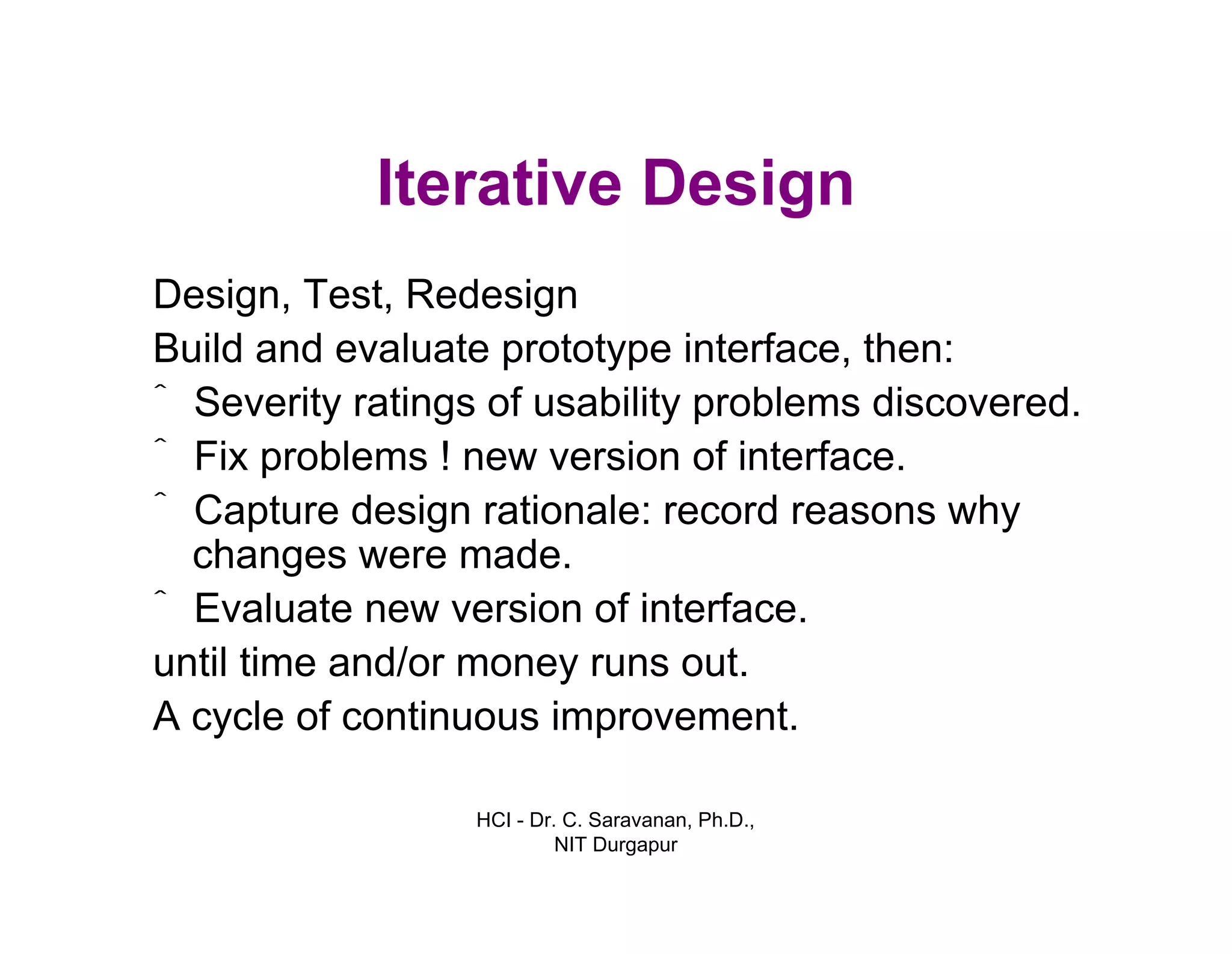
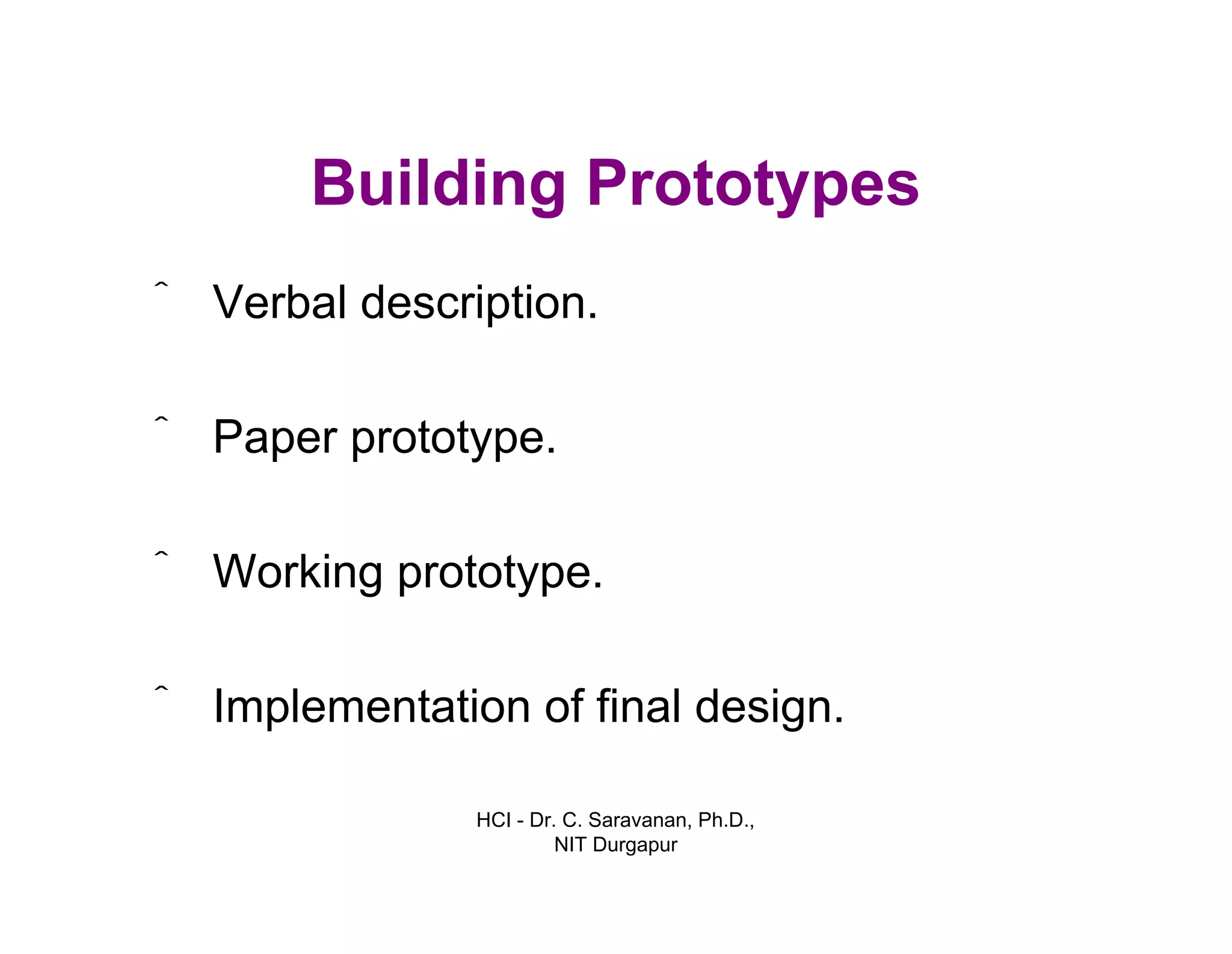
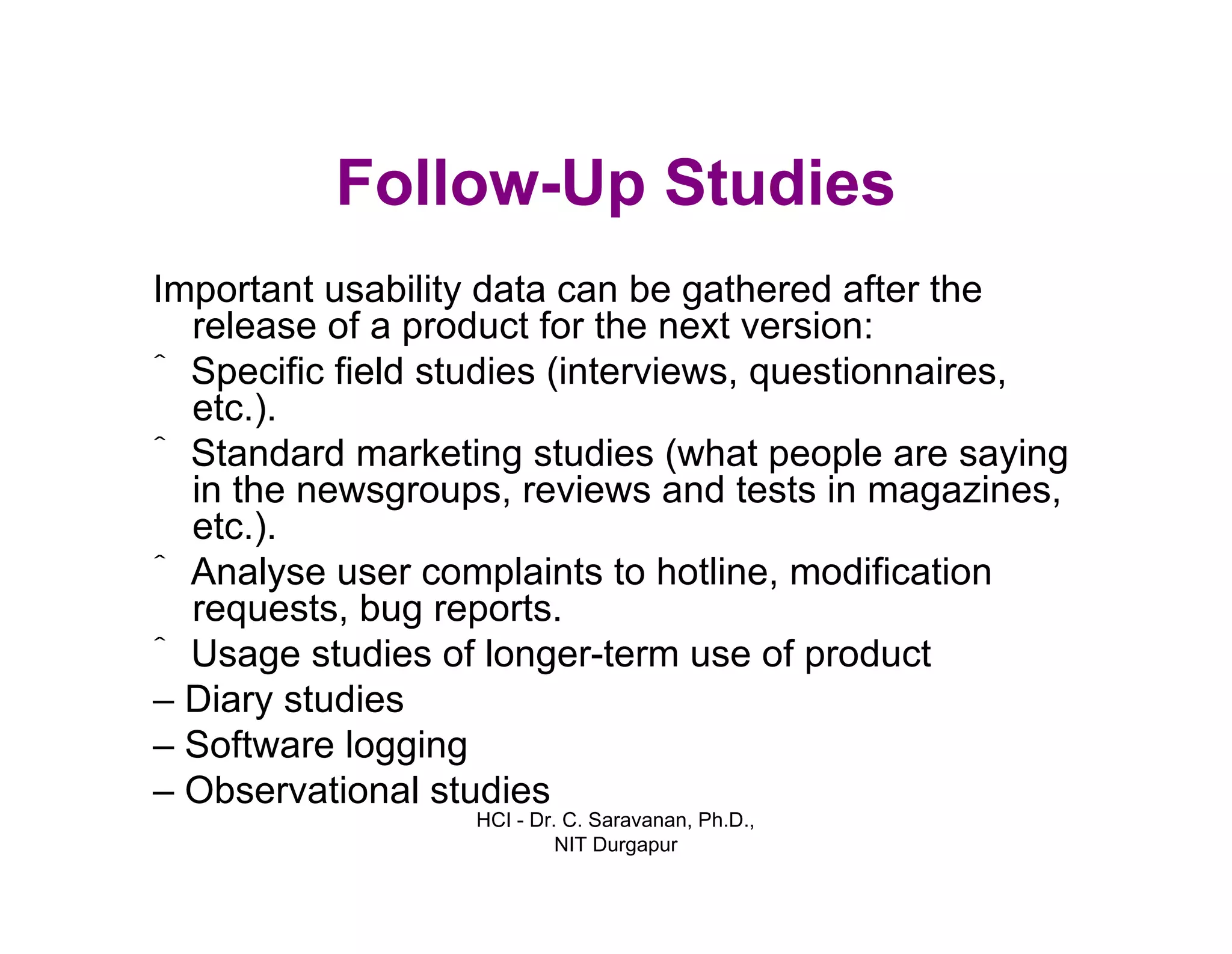
![HCI - Dr. C. Saravanan, Ph.D.,
NIT Durgapur
Planning Usability Activities
1.Prioritise activities.
2. Write down explicit plan for each activity.
3.Subject plan to independent review (e.g.
colleague from different project).
4.Perform pilot activity with about 10% of
total resources, then revise plan for
remaining 90%. [Always perform a pilot
study!]](https://image.slidesharecdn.com/humancomputerinteraction-150121201122-conversion-gate02/75/Human-computer-interaction-51-2048.jpg)
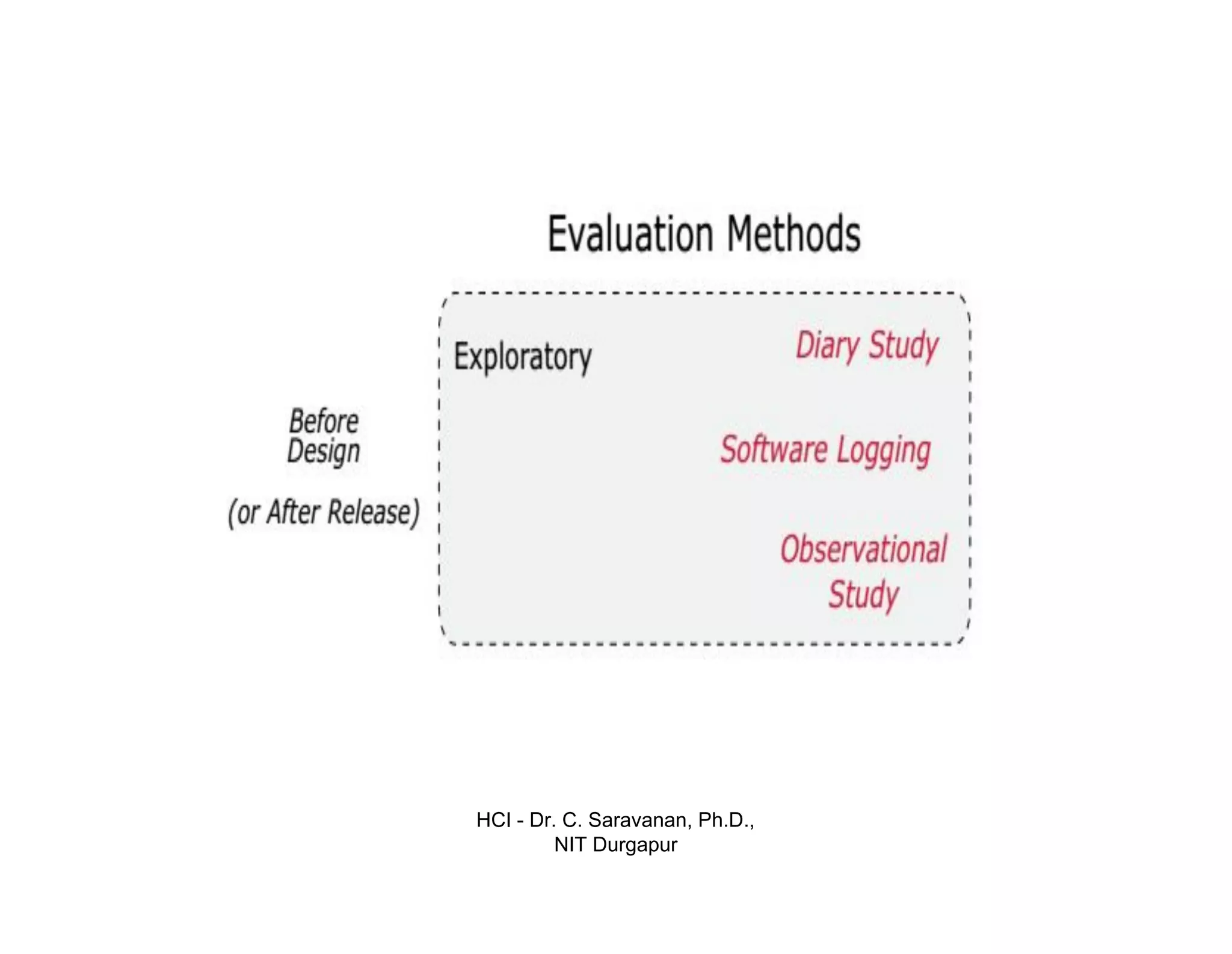
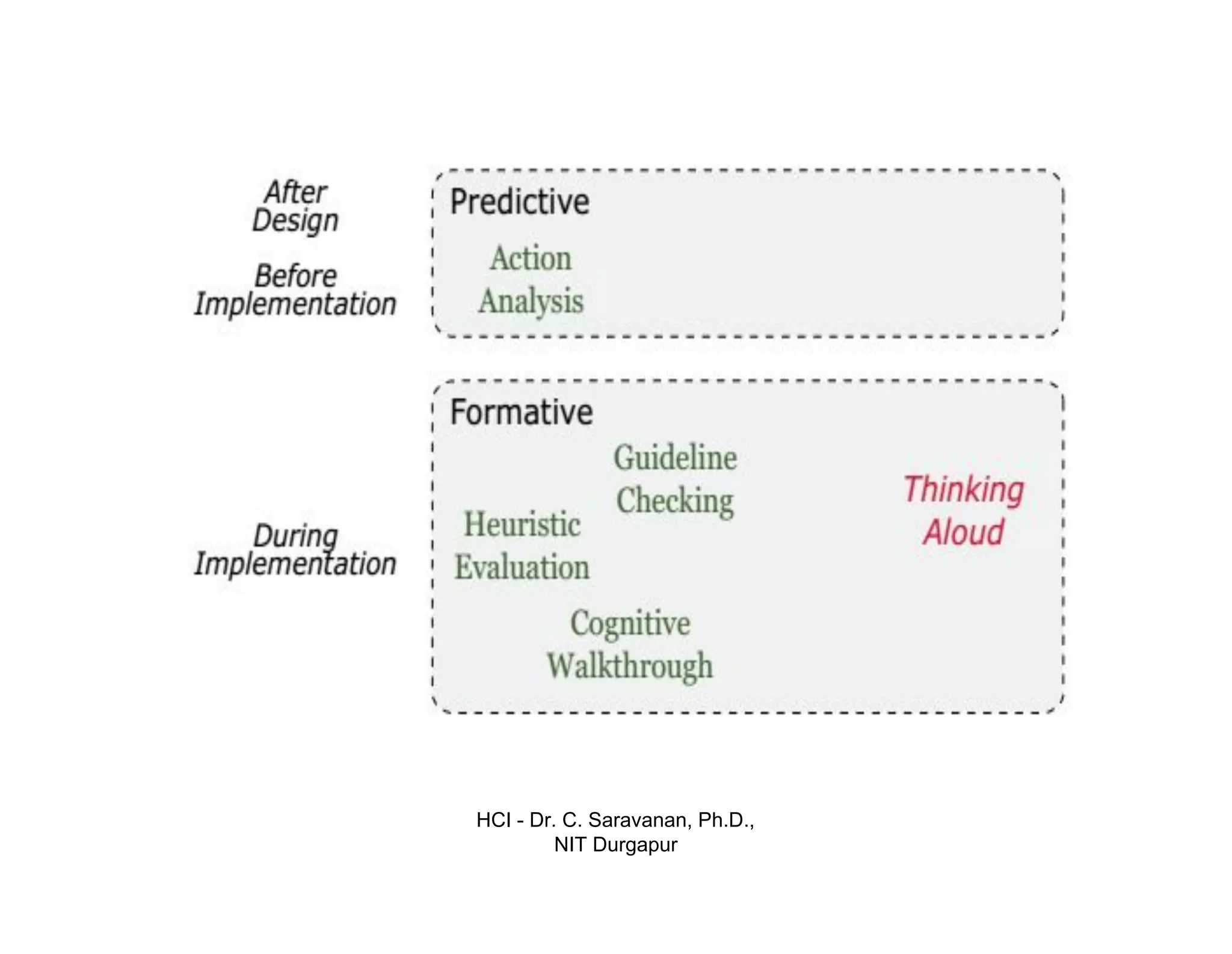

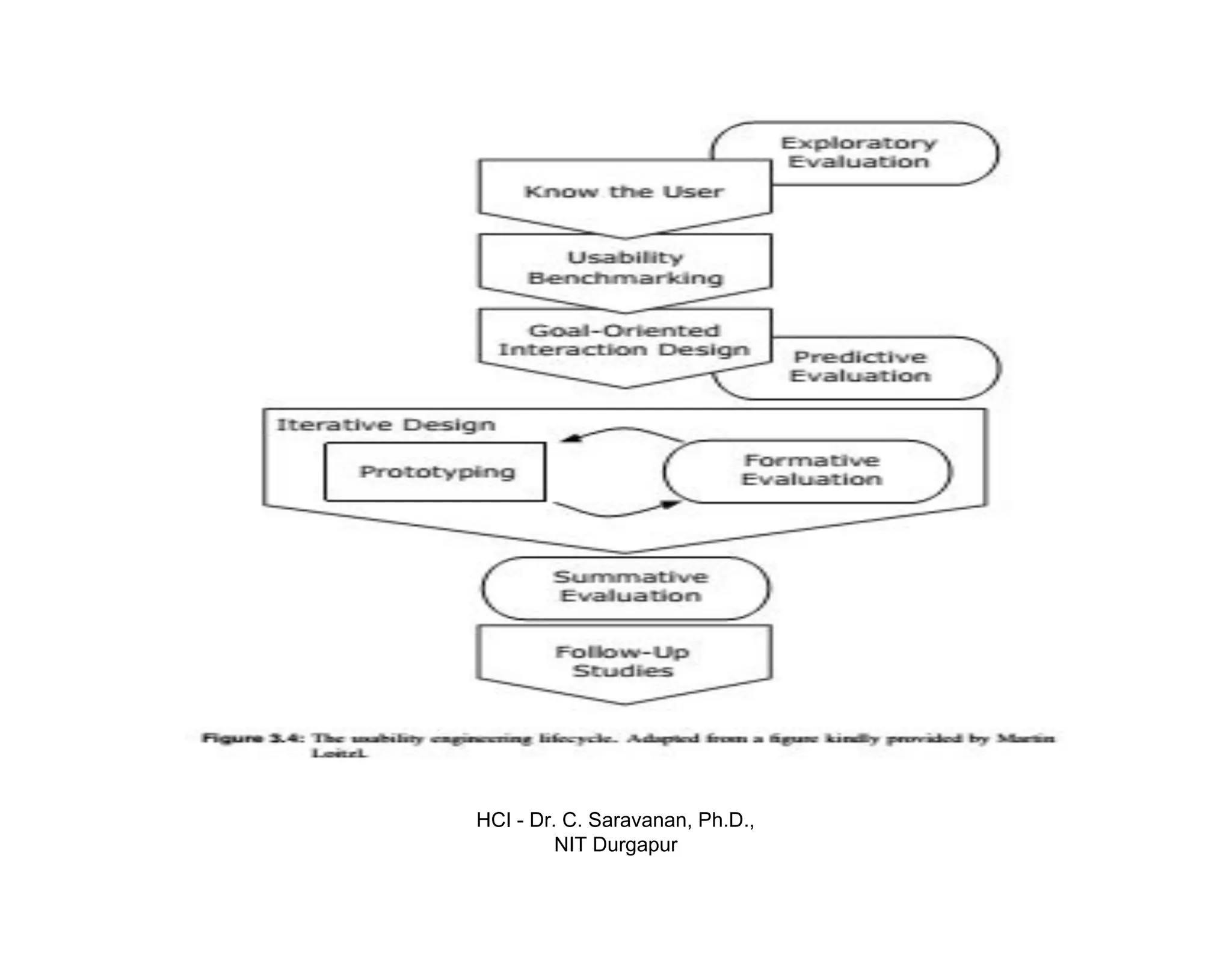
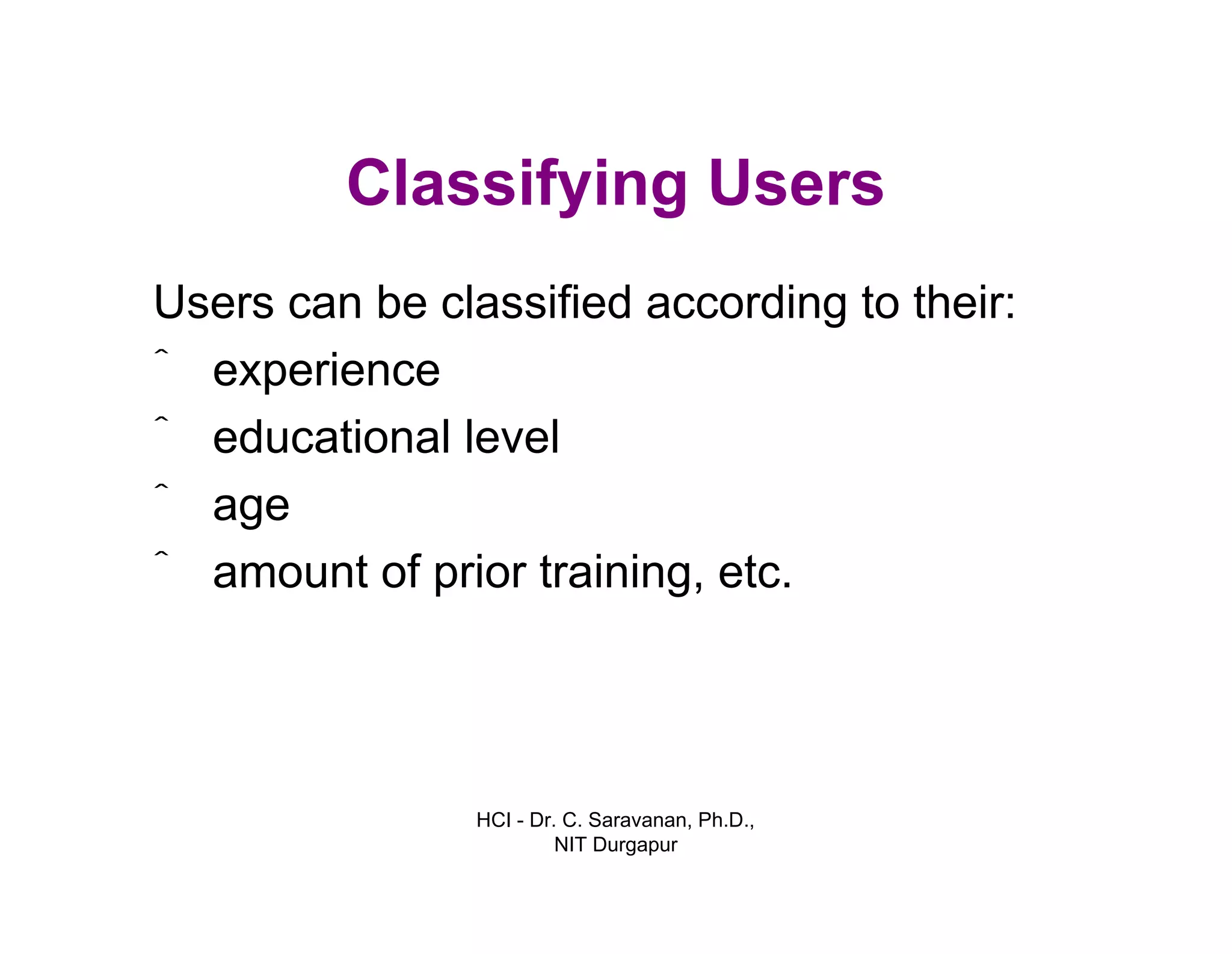
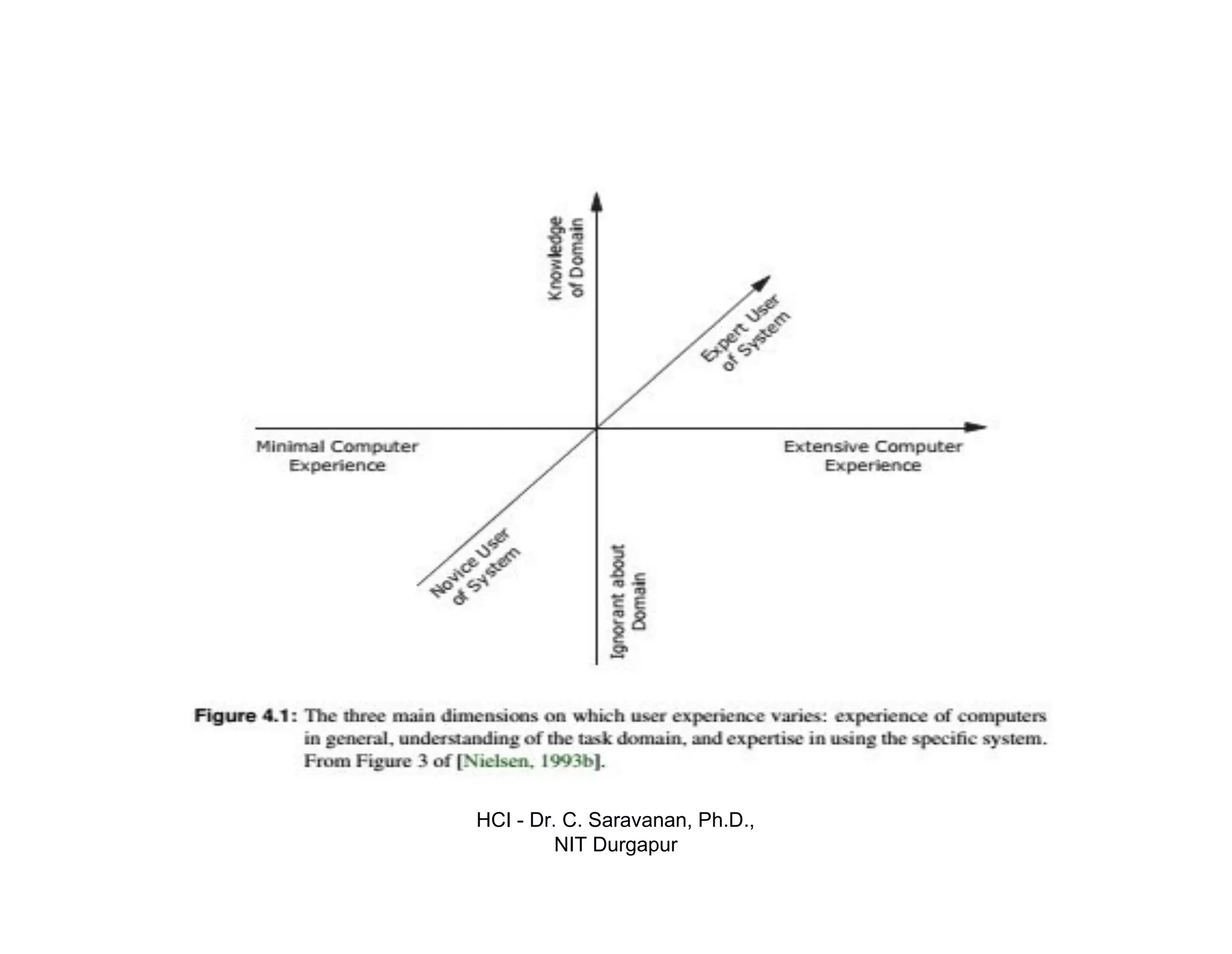
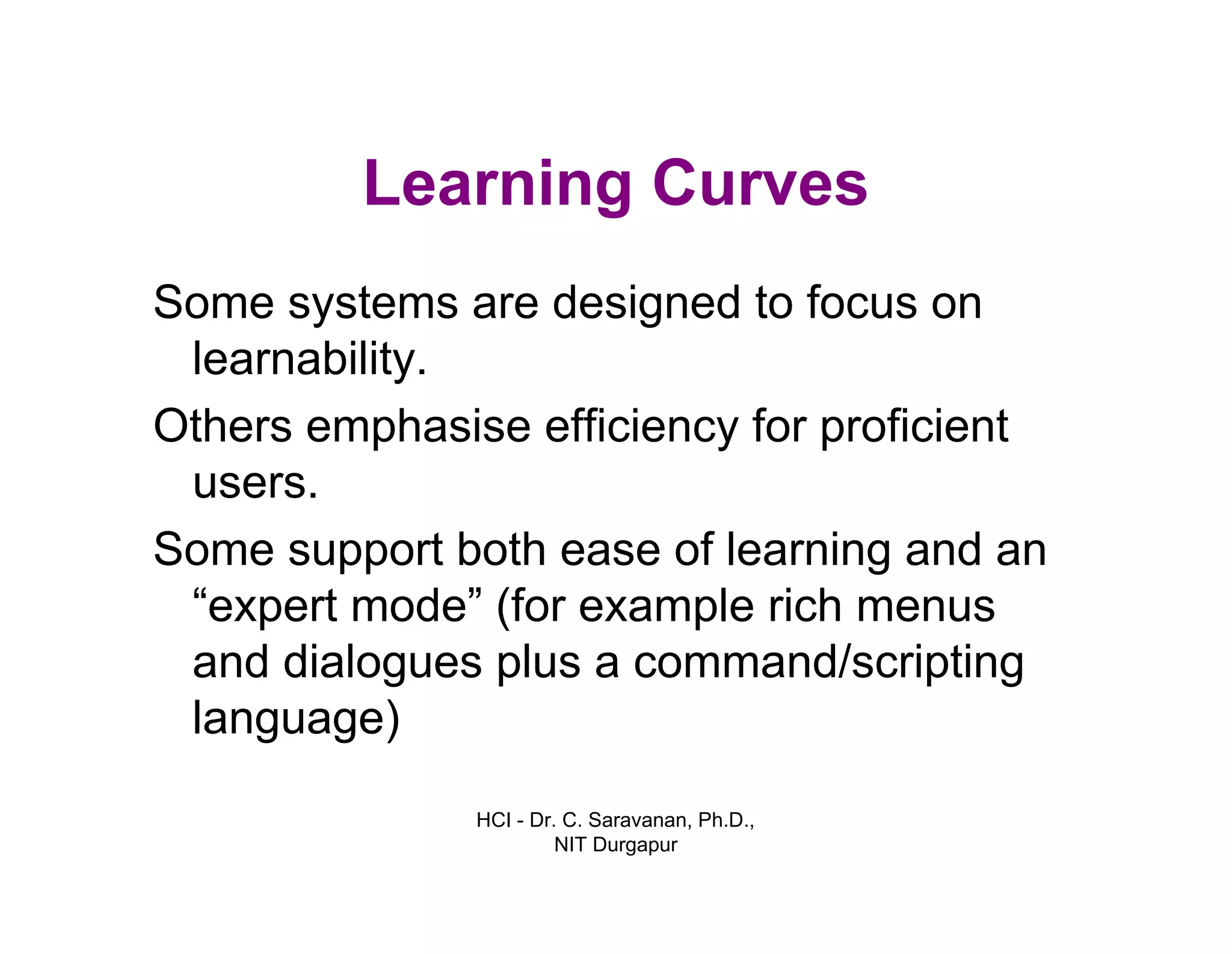
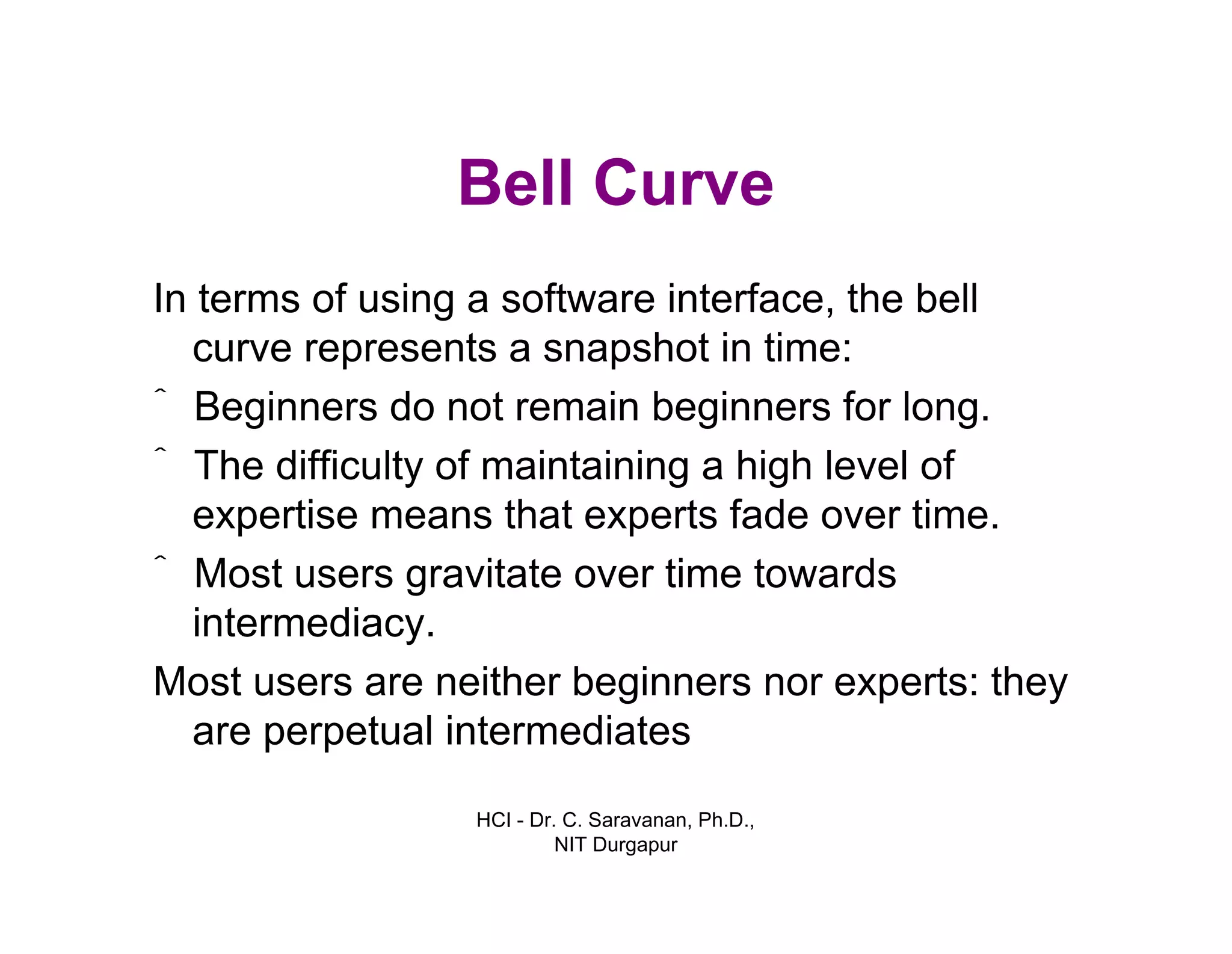
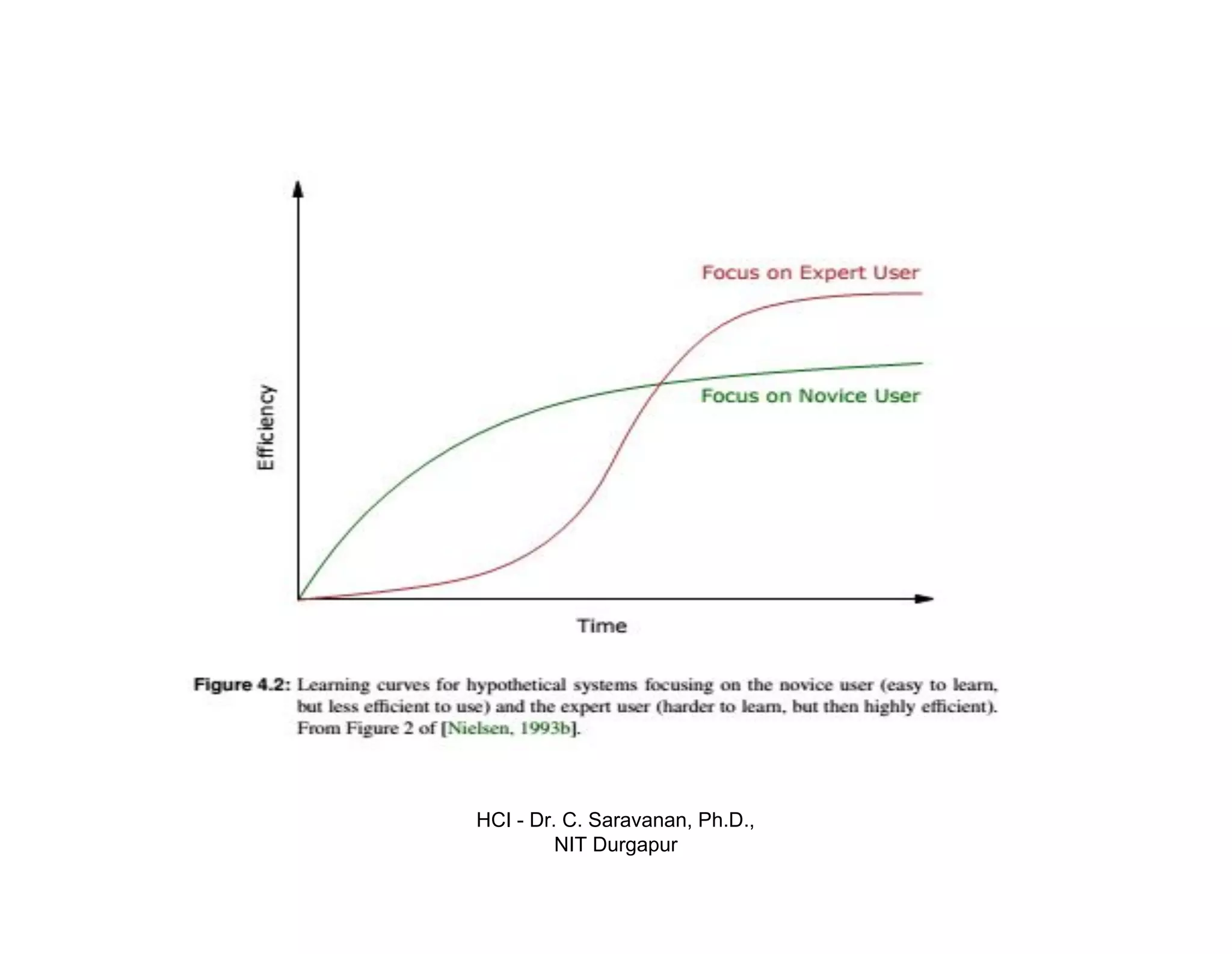
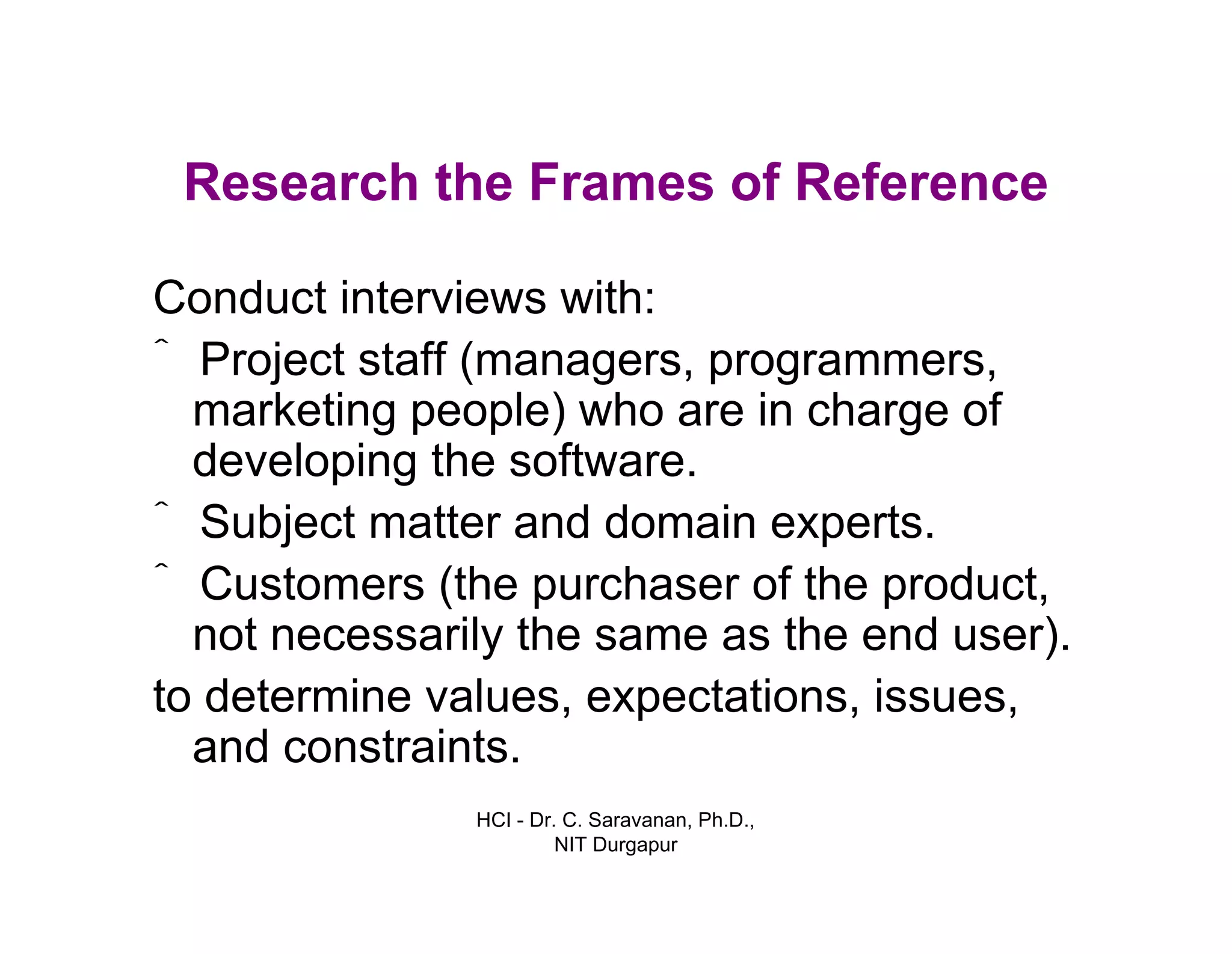
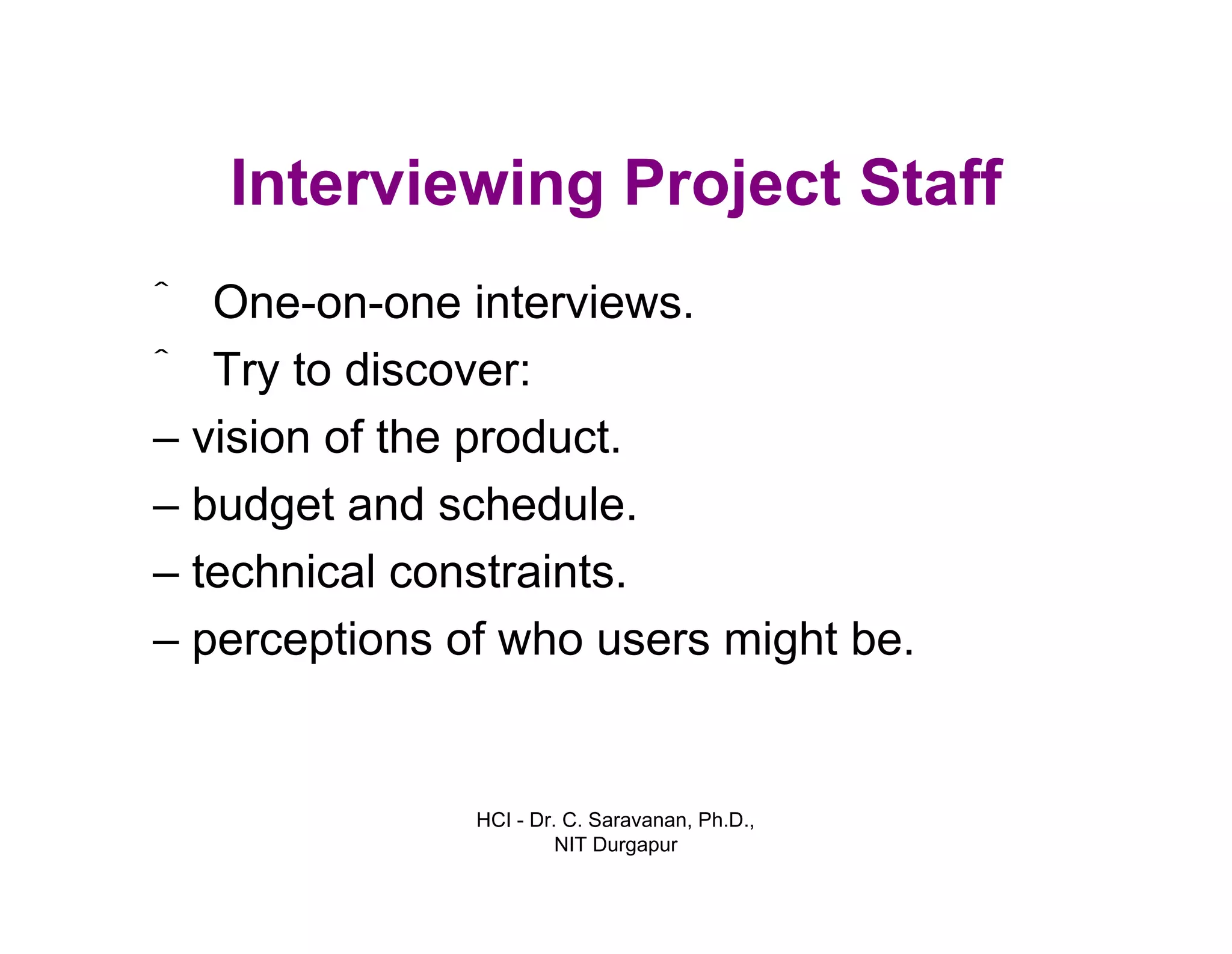
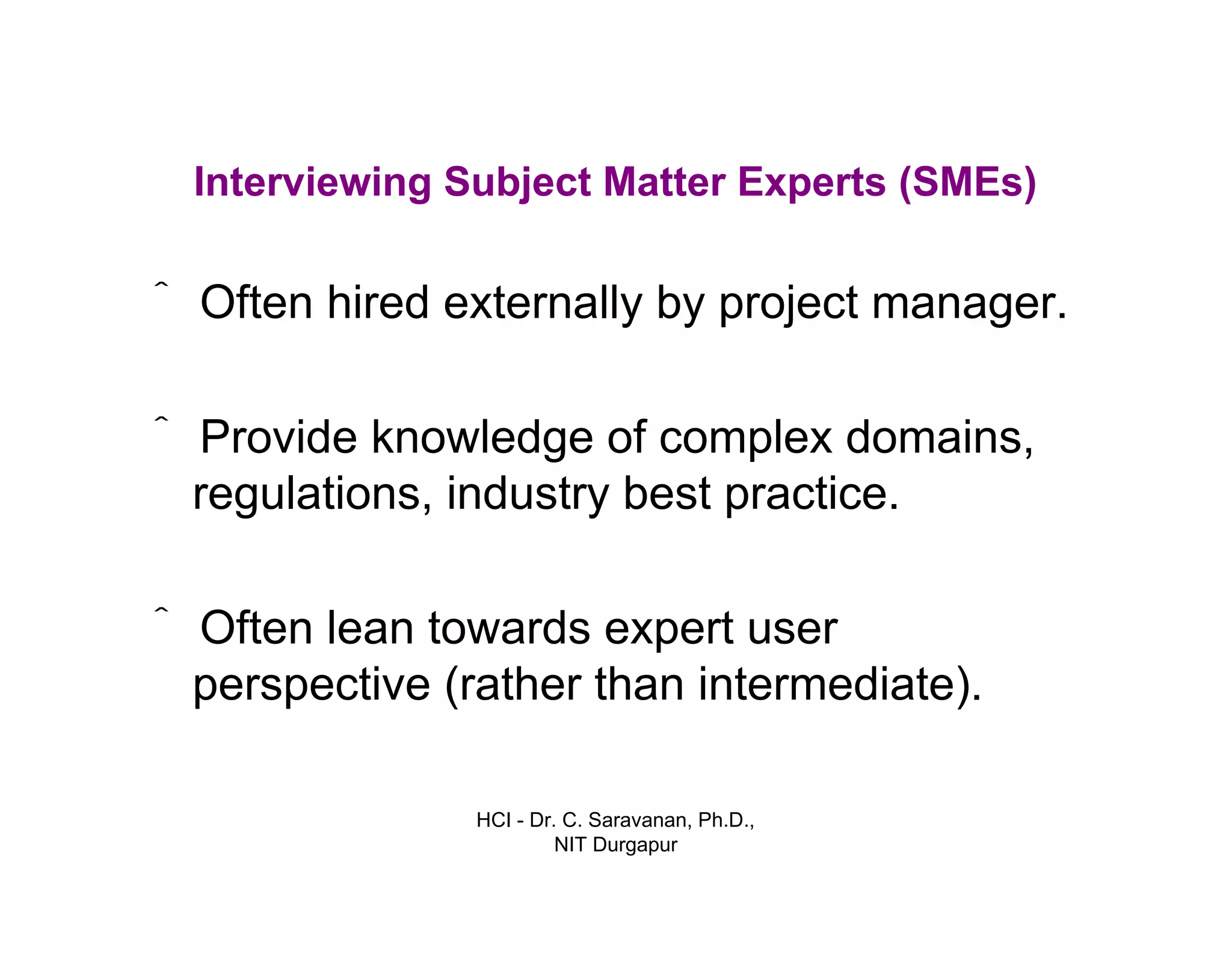
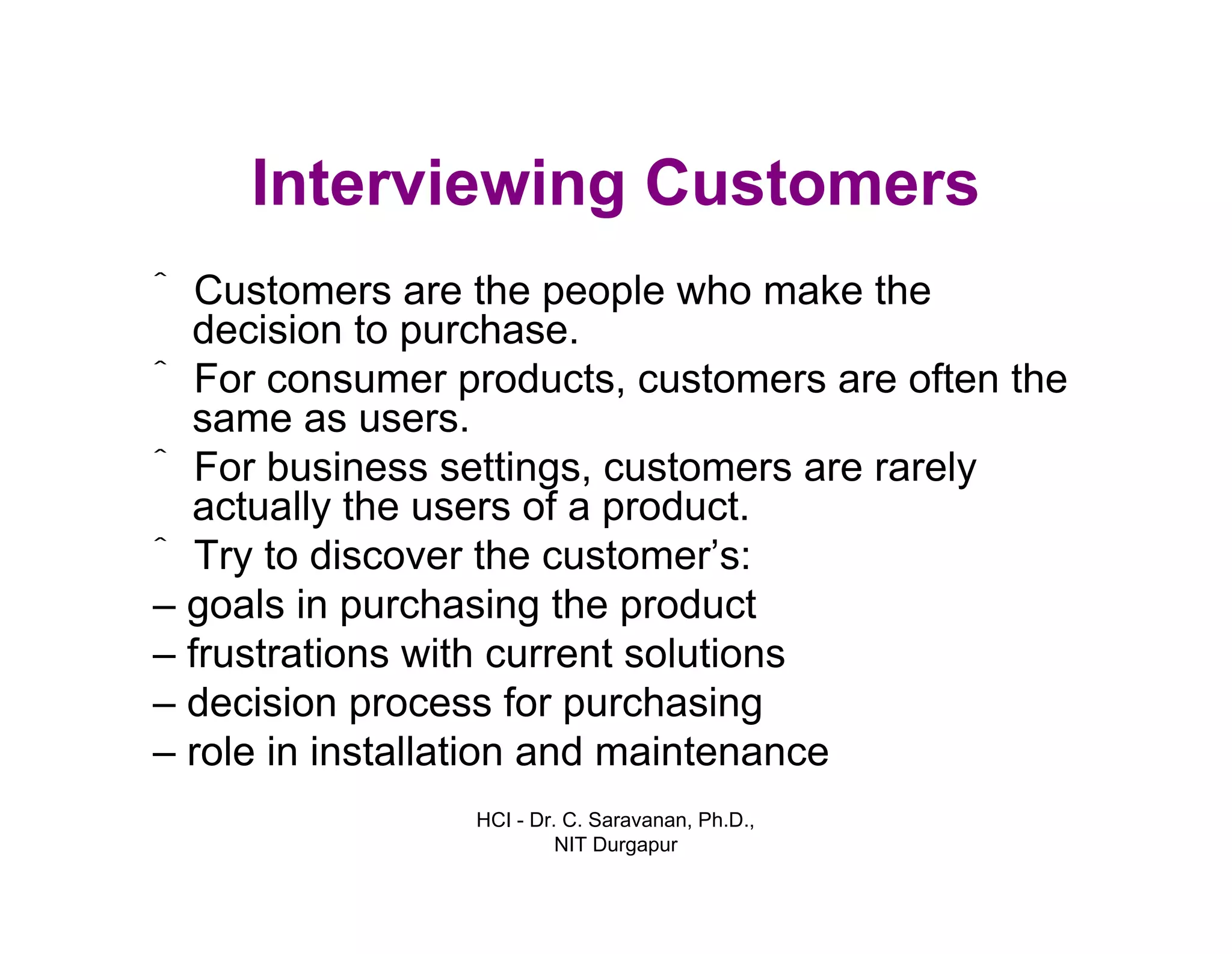
![HCI - Dr. C. Saravanan, Ph.D.,
NIT Durgapur
Research the End User
The actual users of a product should always be the
main focus of the design effort.
ˆ Most people are incapable of accurately
assessing their own behaviour [Pinker, 1999].
ˆ Rather than talk to users about how they think
they behave, it is better to observe their
behaviour first-hand.
ˆ And then ask clarifying questions in the context
of use.](https://image.slidesharecdn.com/humancomputerinteraction-150121201122-conversion-gate02/75/Human-computer-interaction-65-2048.jpg)




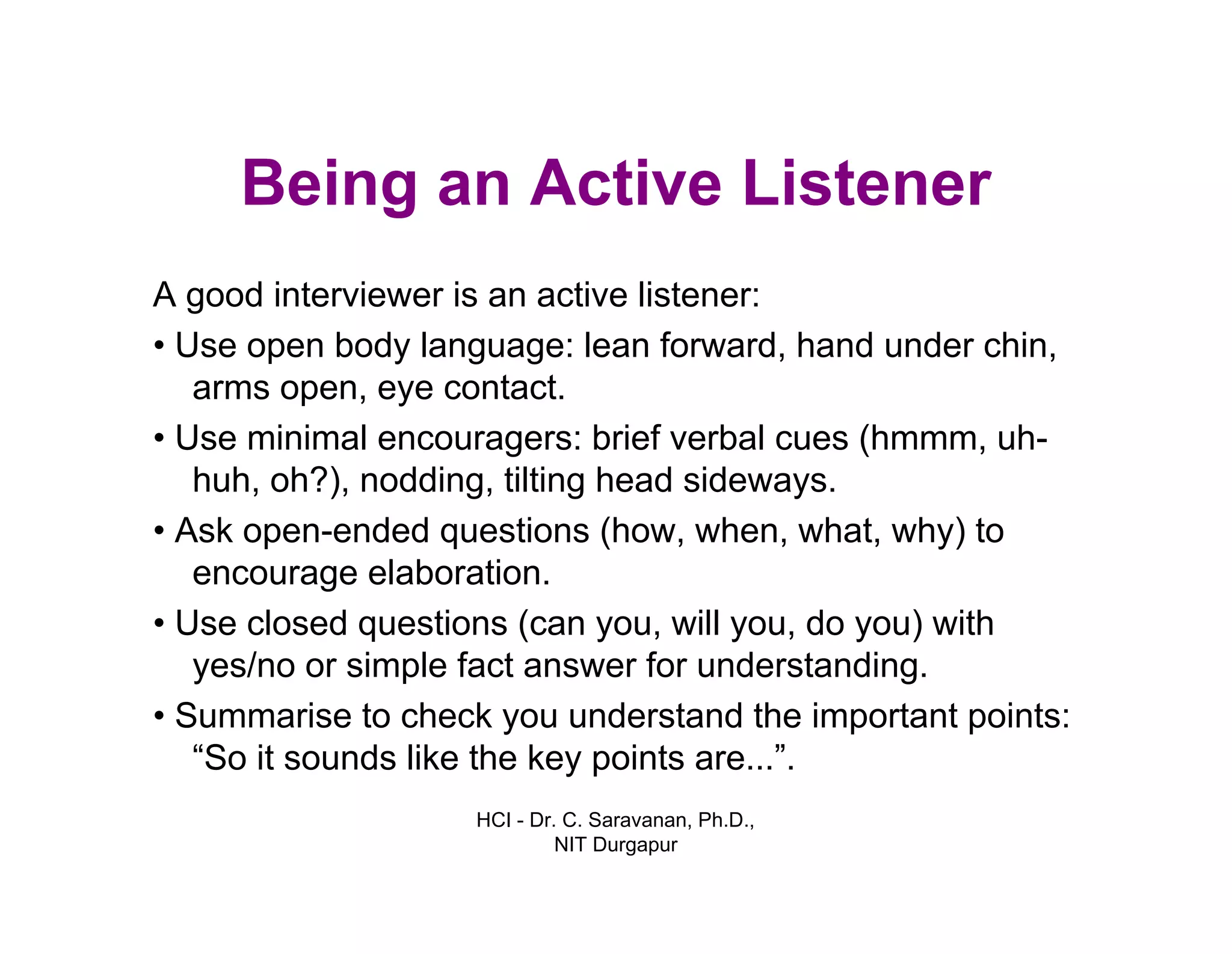

![HCI - Dr. C. Saravanan, Ph.D.,
NIT Durgapur
Good General Questions
• What do you spend most of your time on? [task priority]
• What things waste your time? [opportunity]
• Where does it hurt? [opportunity]
• What makes a good work day? A bad one? [goals]
• What kind of training do you have? [support to provide]
• What are the most important things you do? [priorities,
goals]
• What information helps you make decisions? [info to
provide]](https://image.slidesharecdn.com/humancomputerinteraction-150121201122-conversion-gate02/75/Human-computer-interaction-72-2048.jpg)

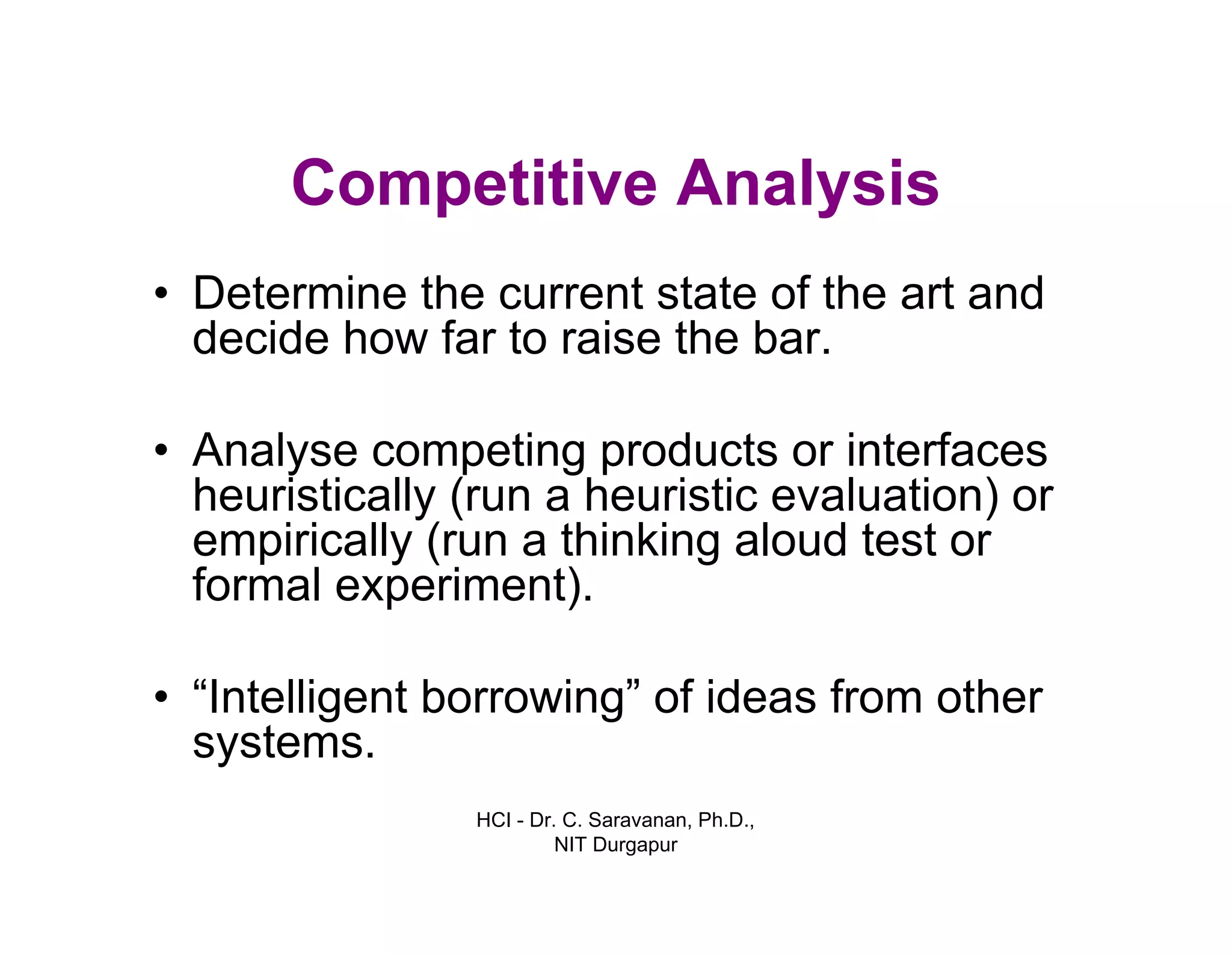
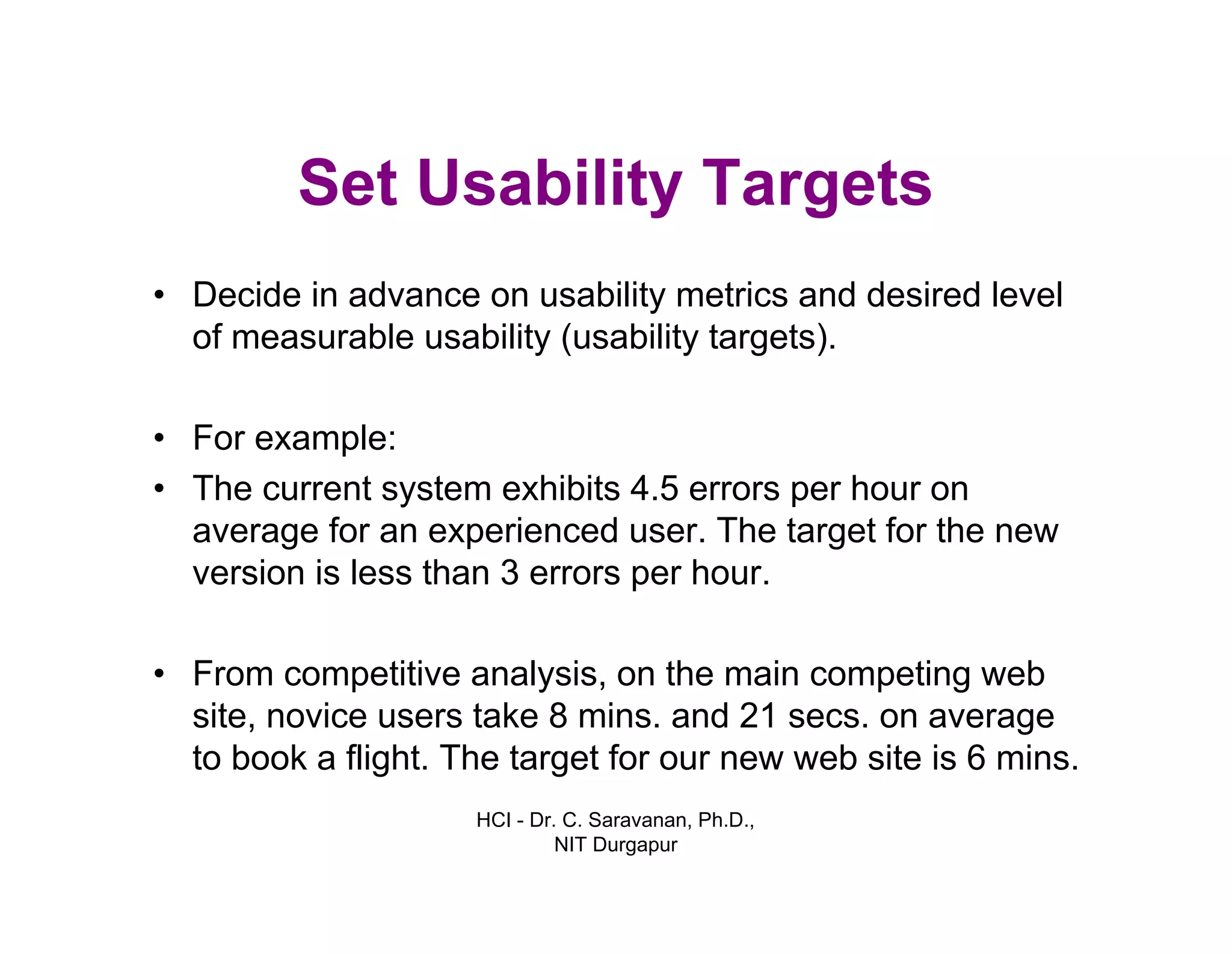
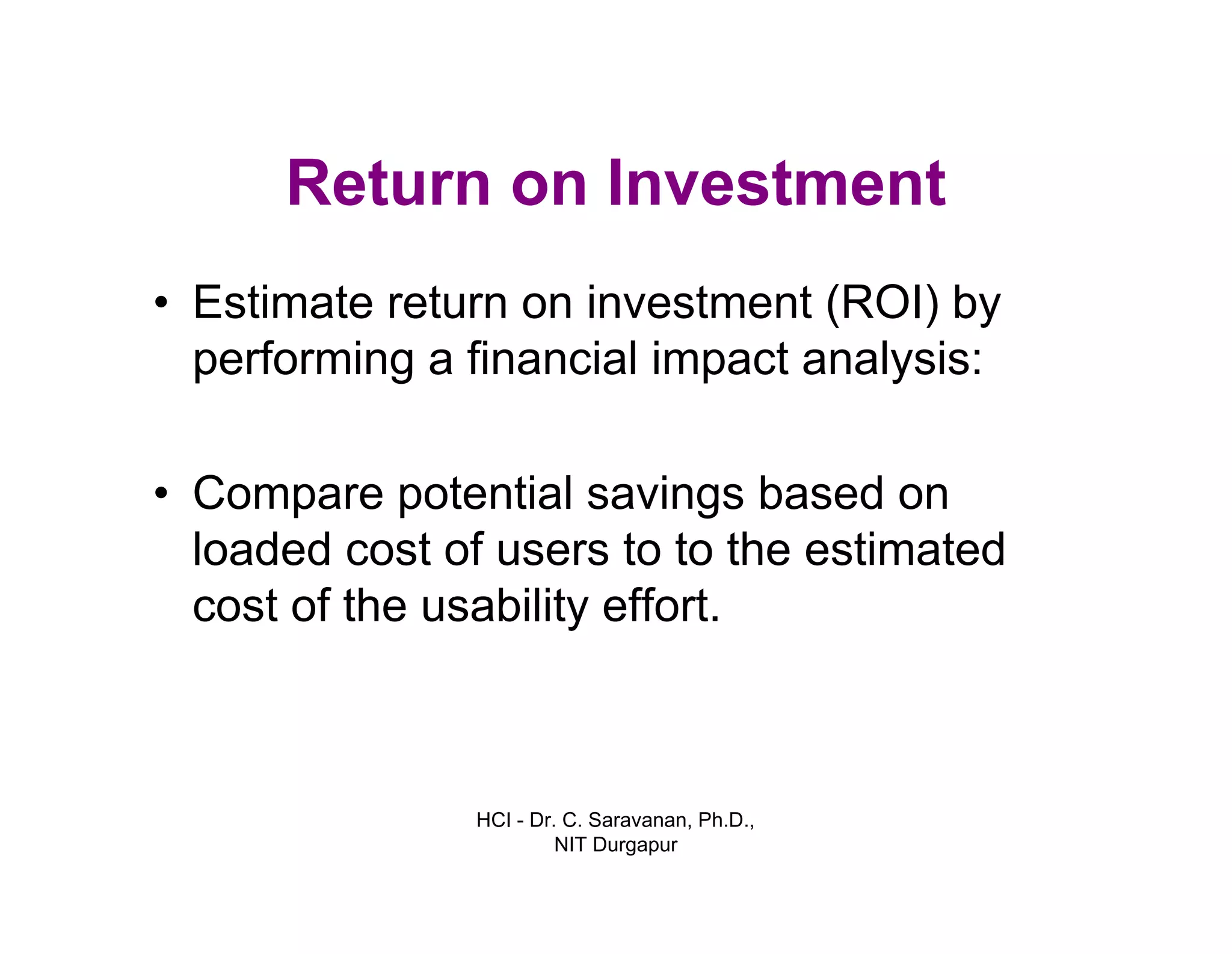

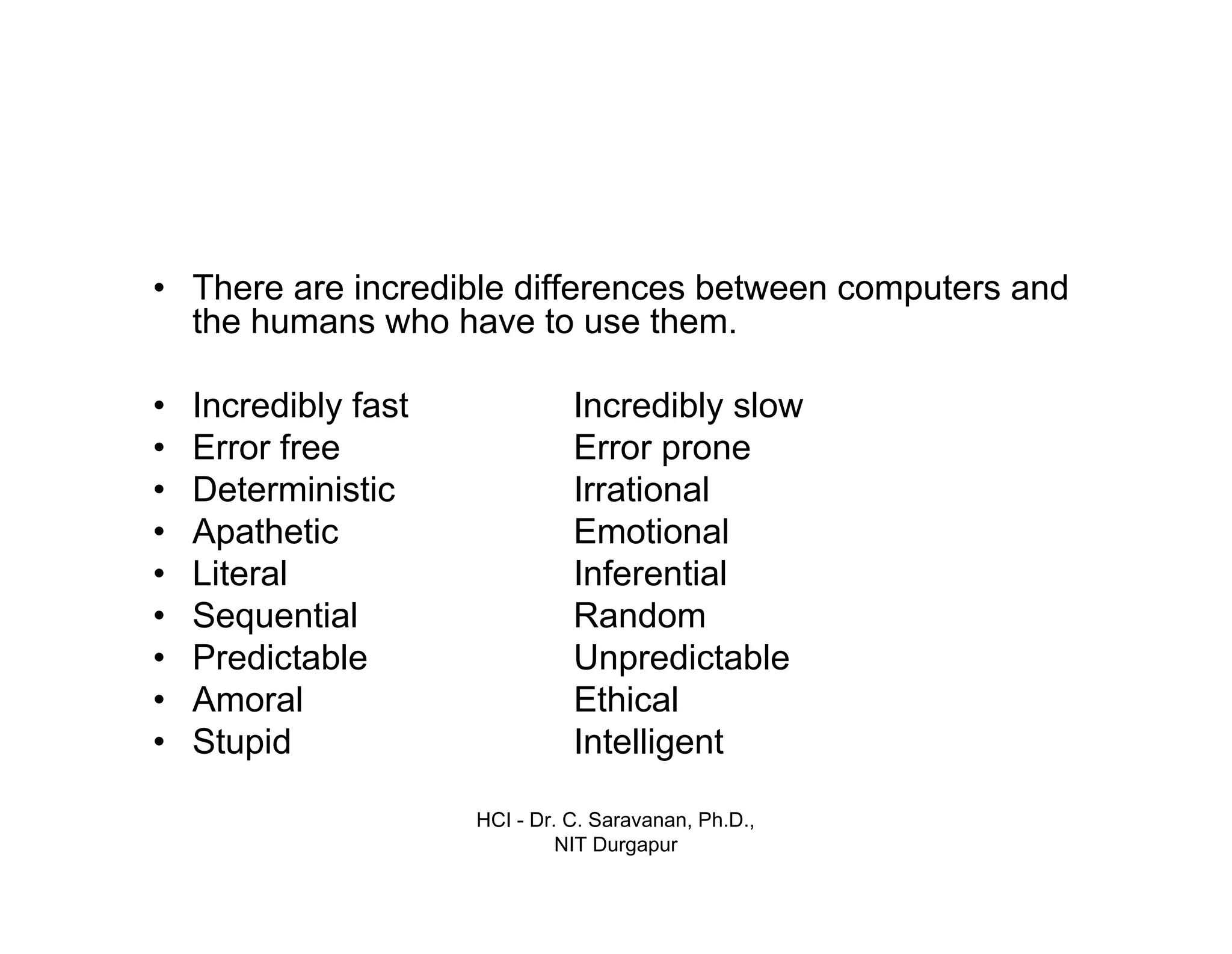
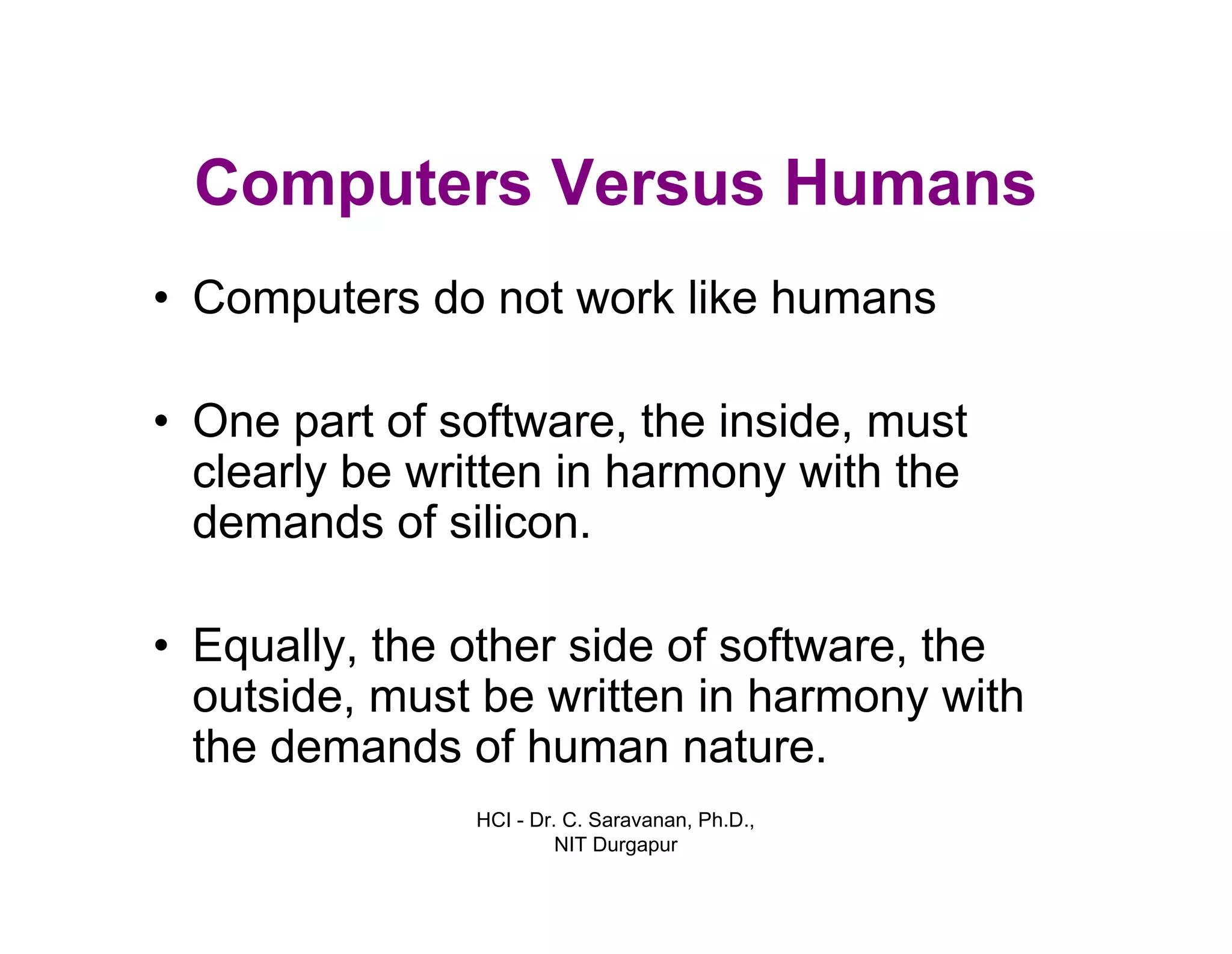
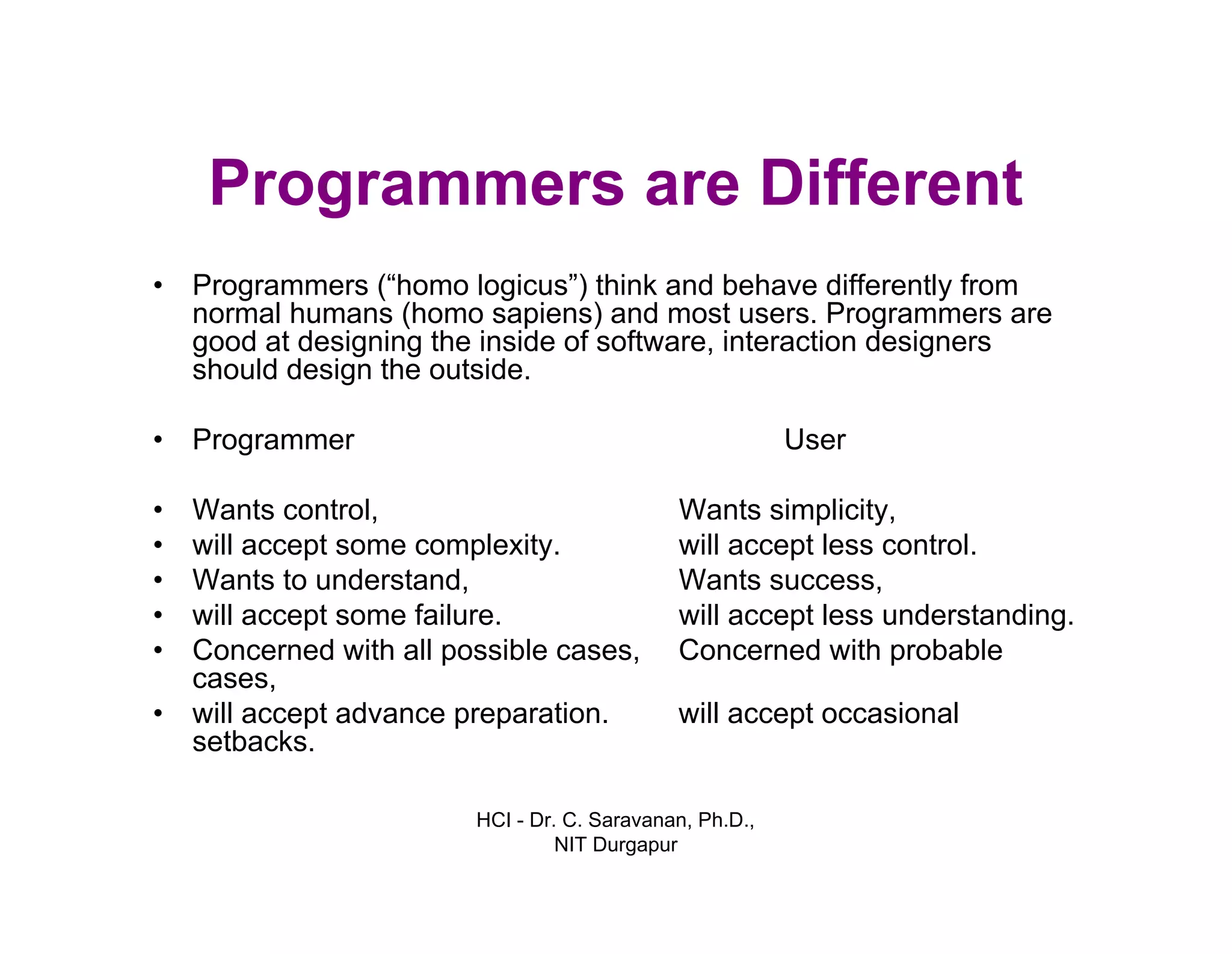
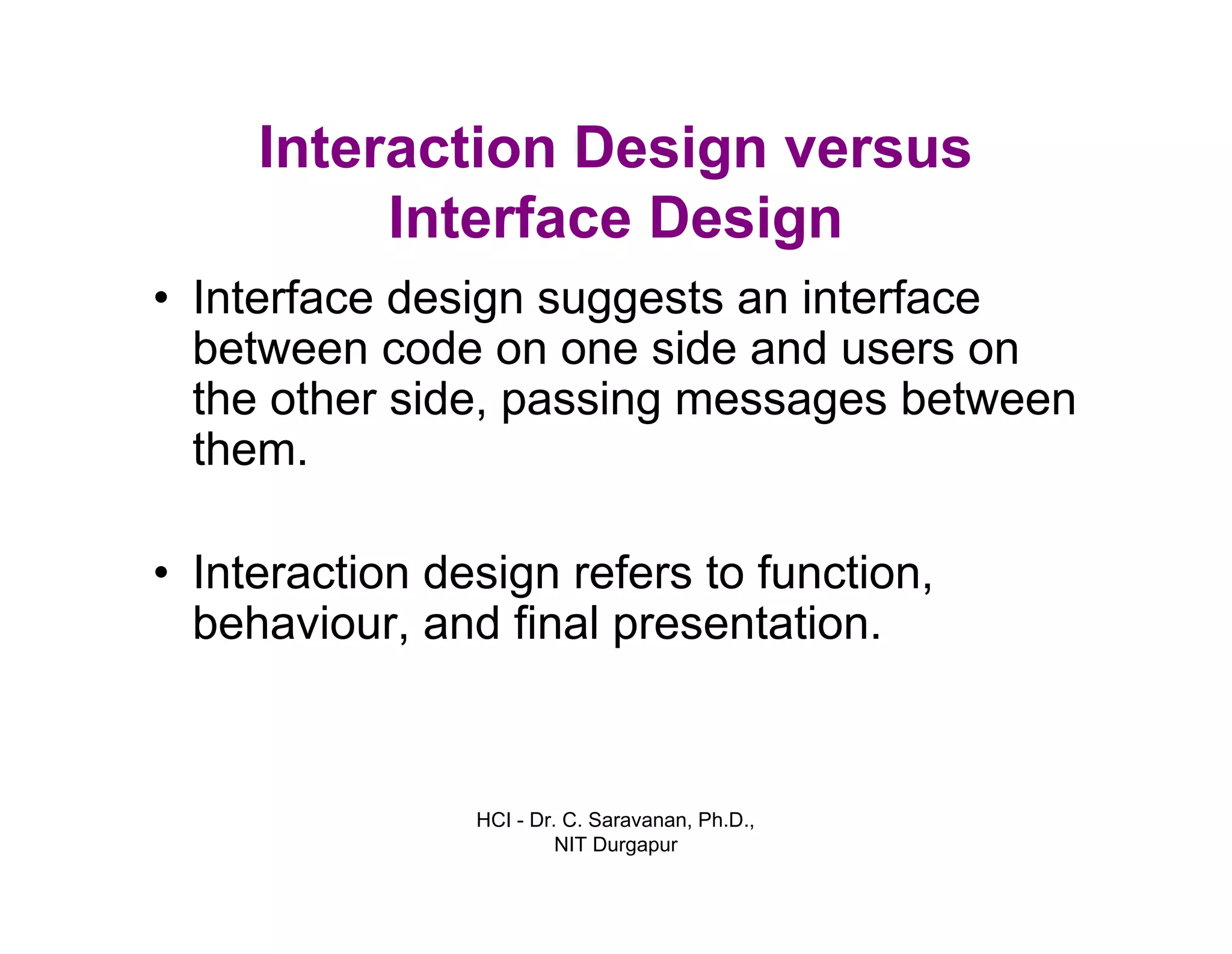

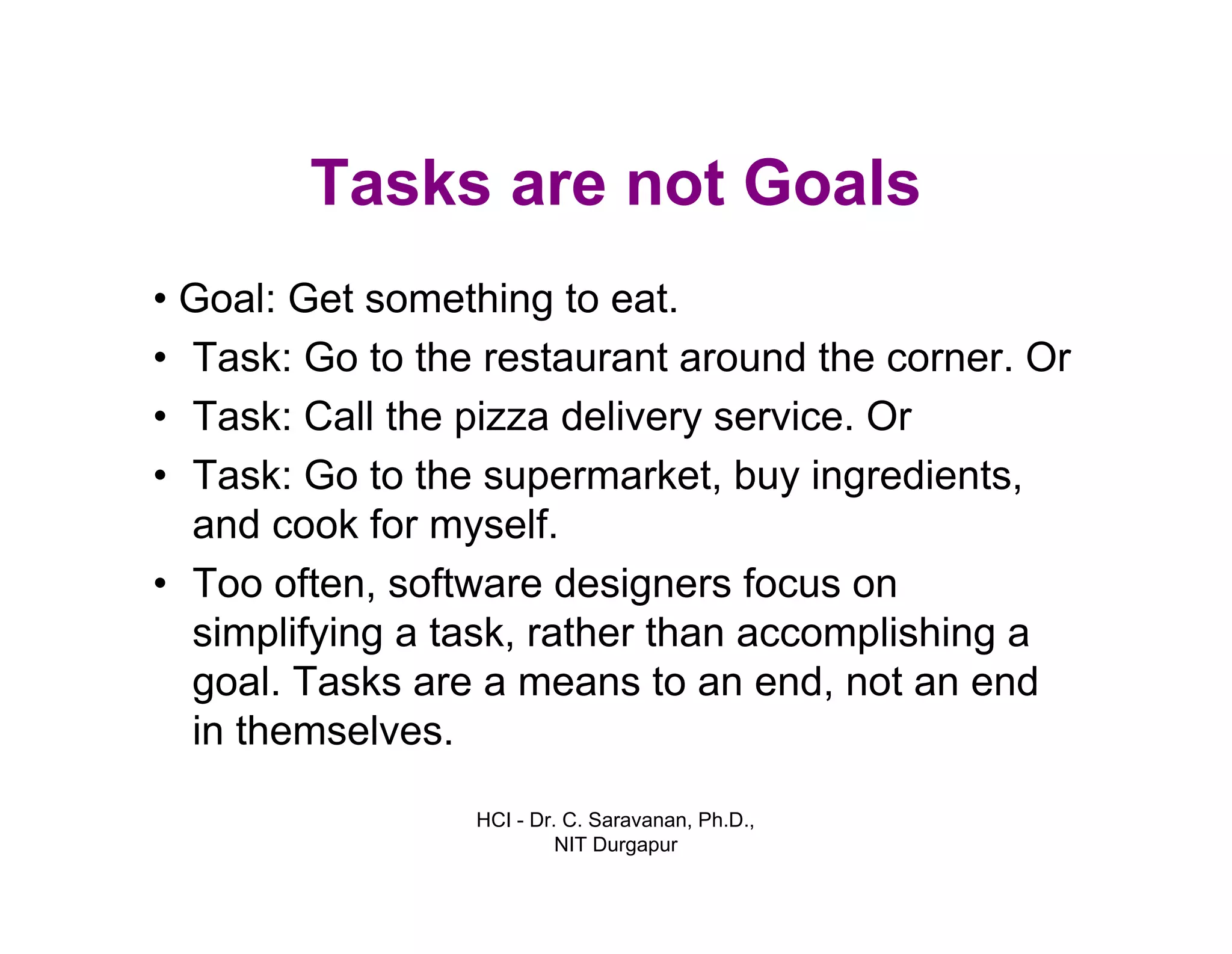
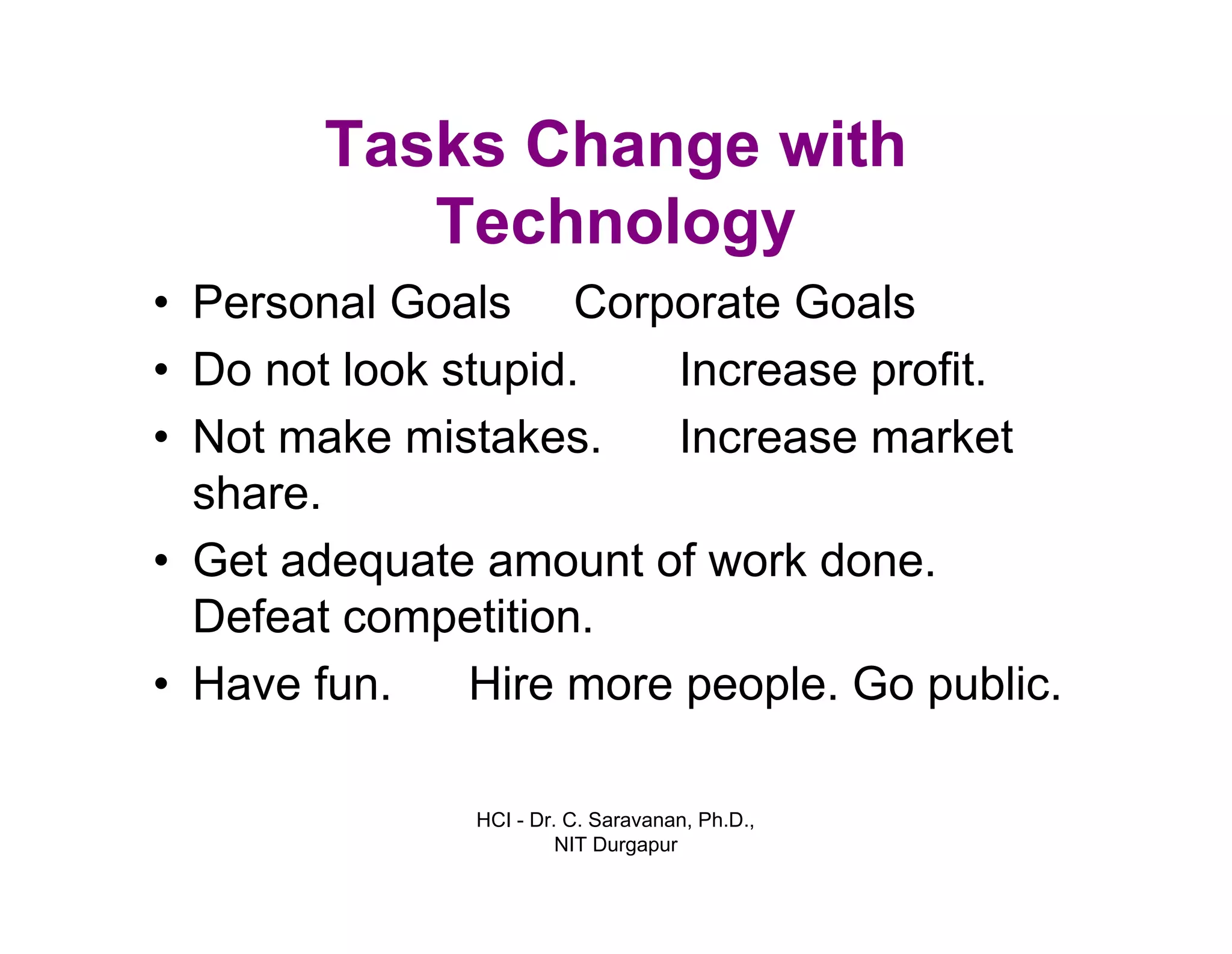
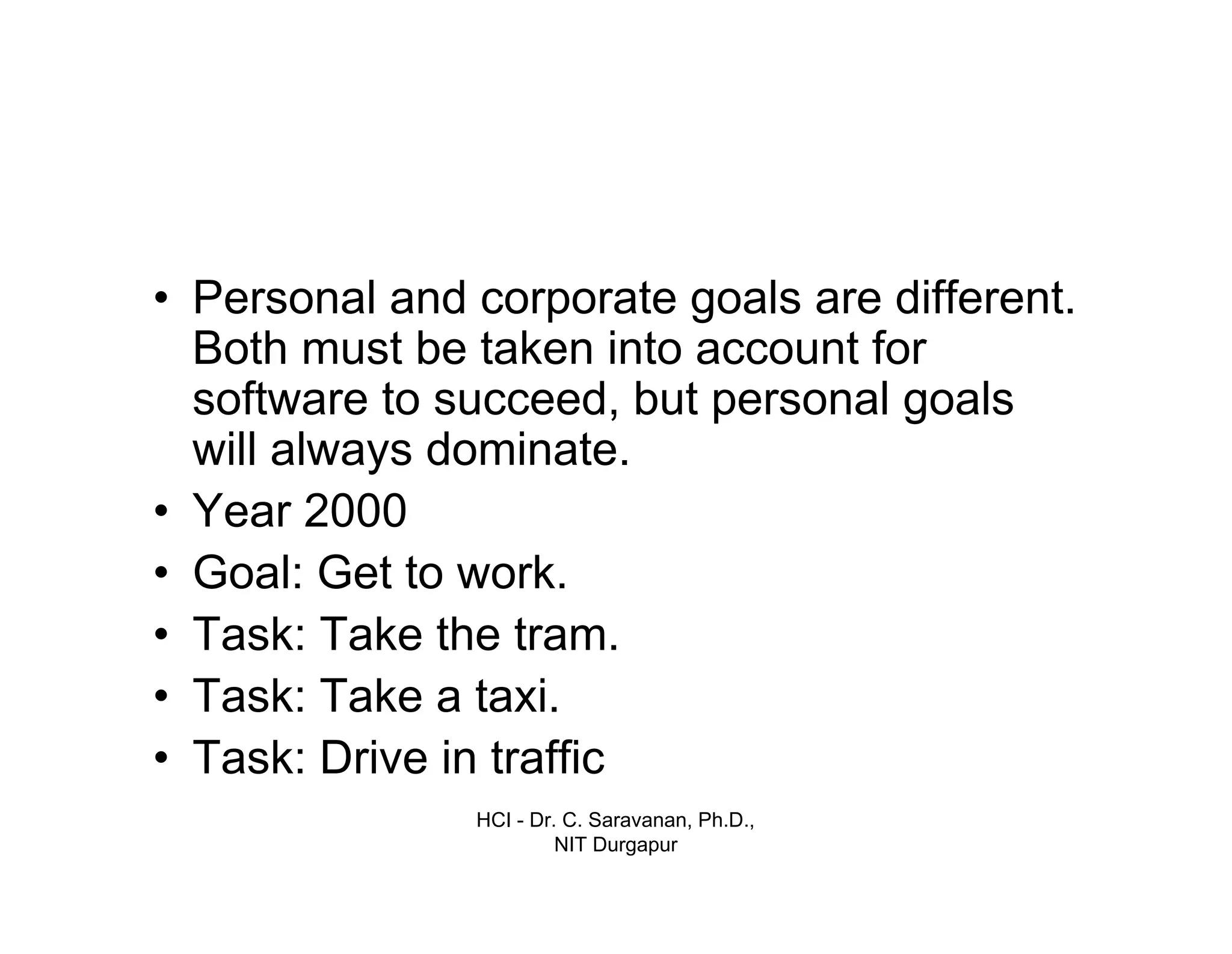
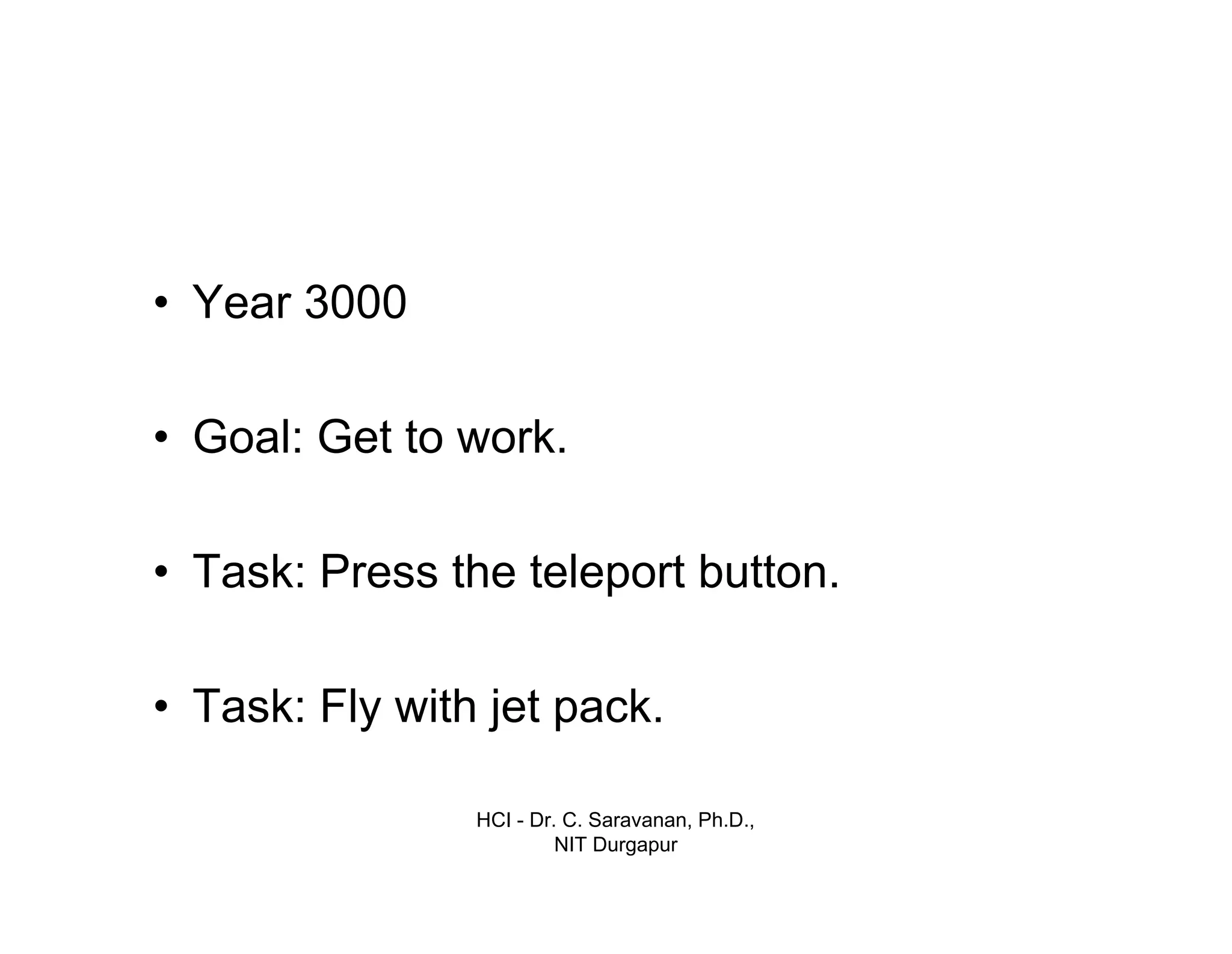
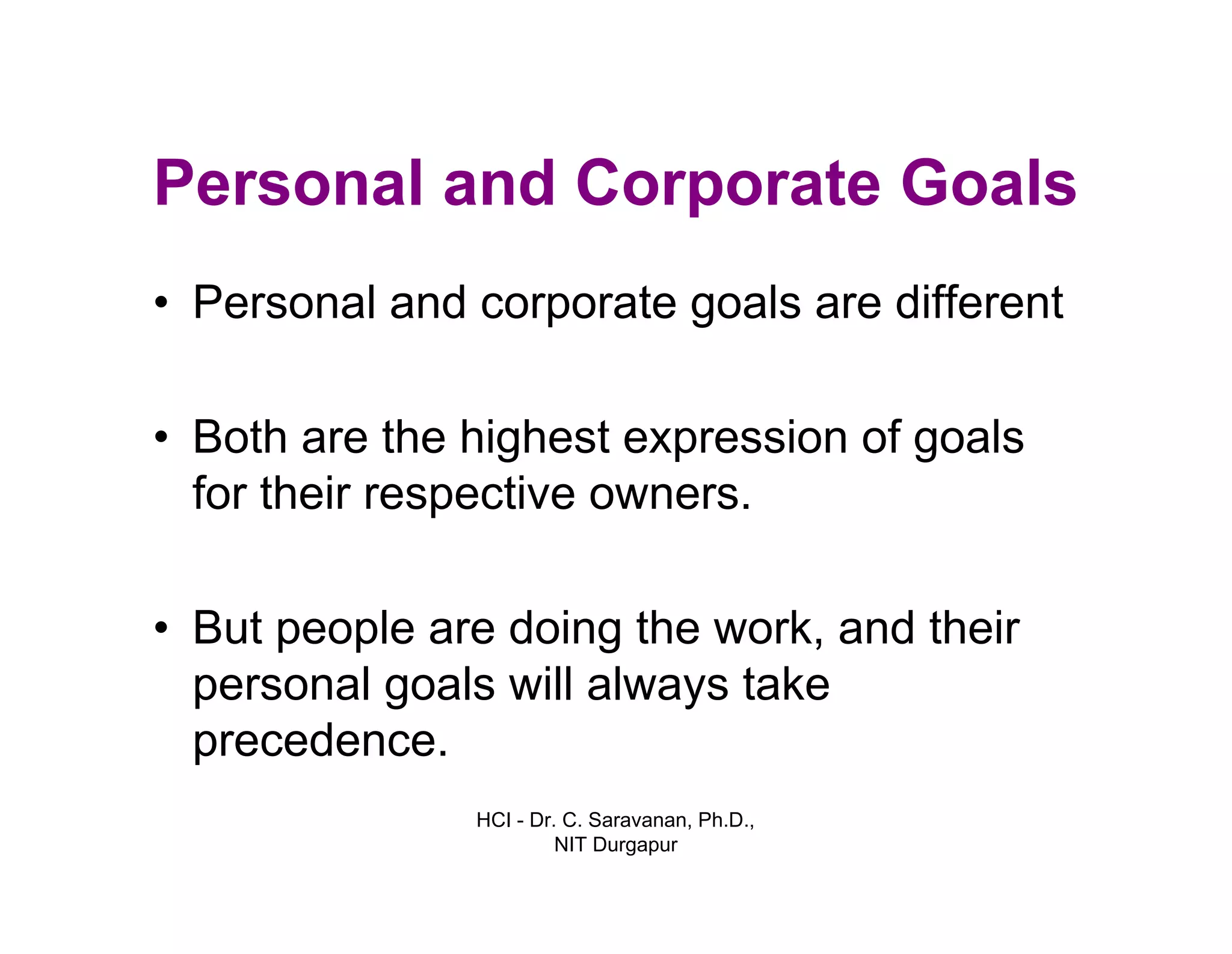
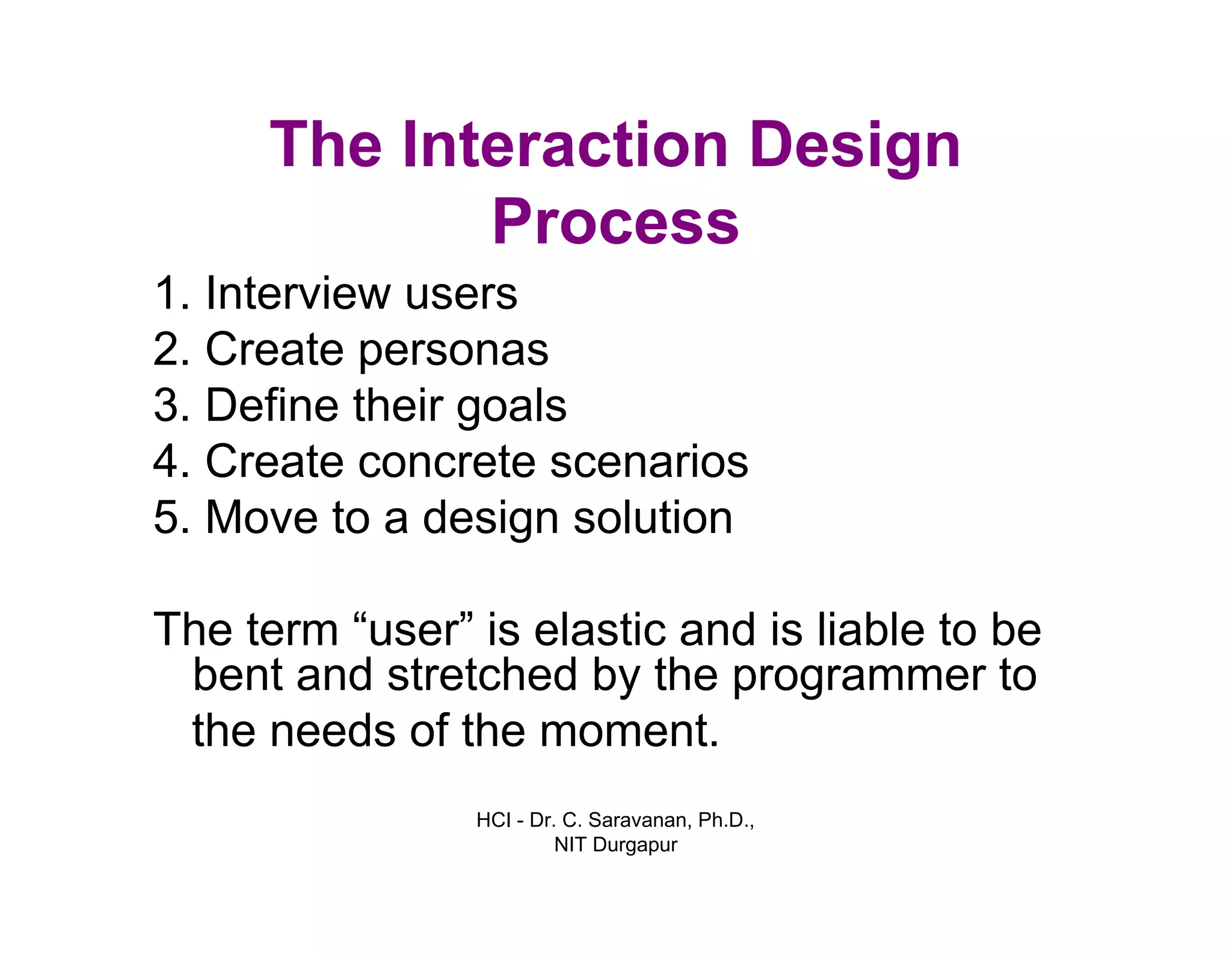
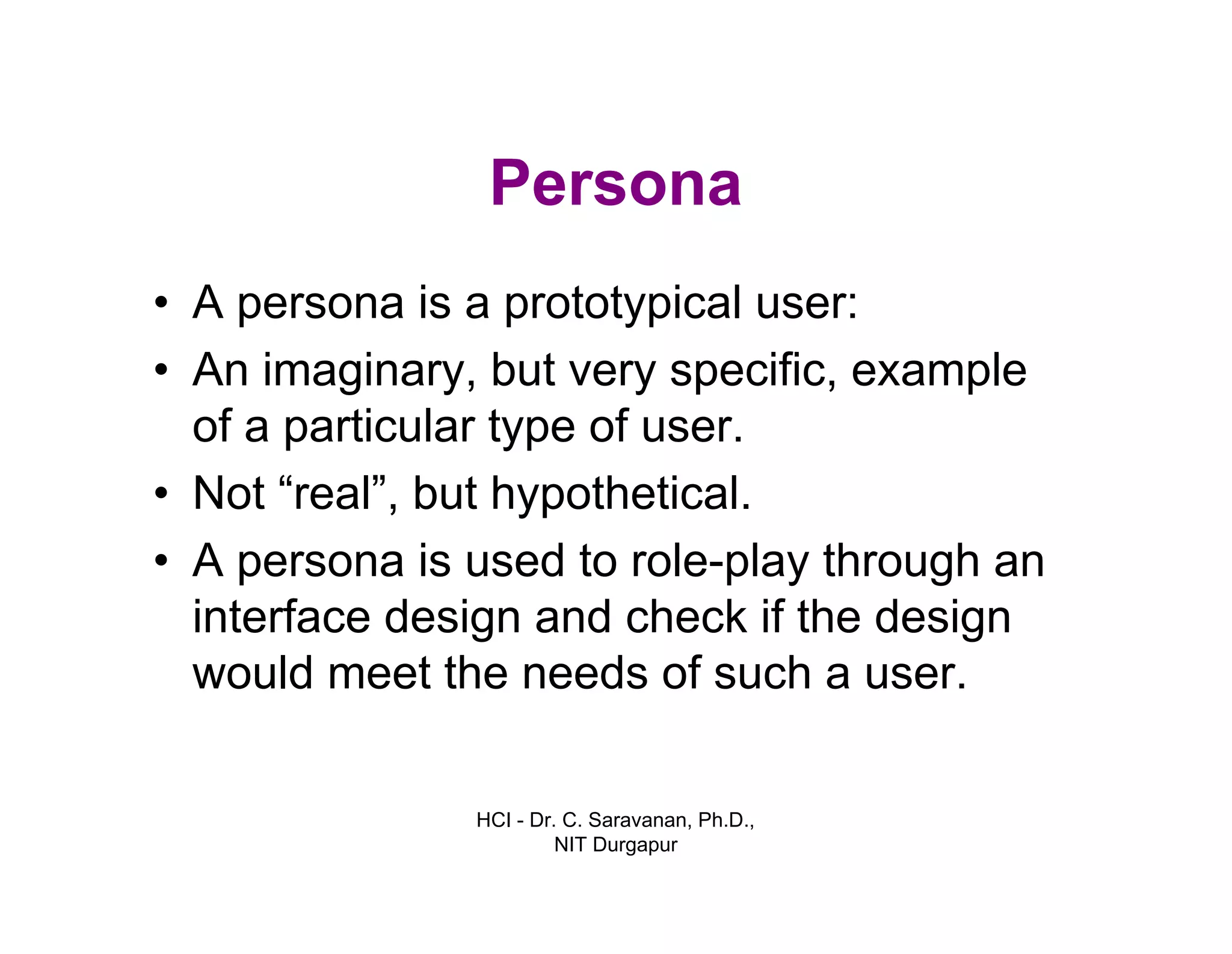
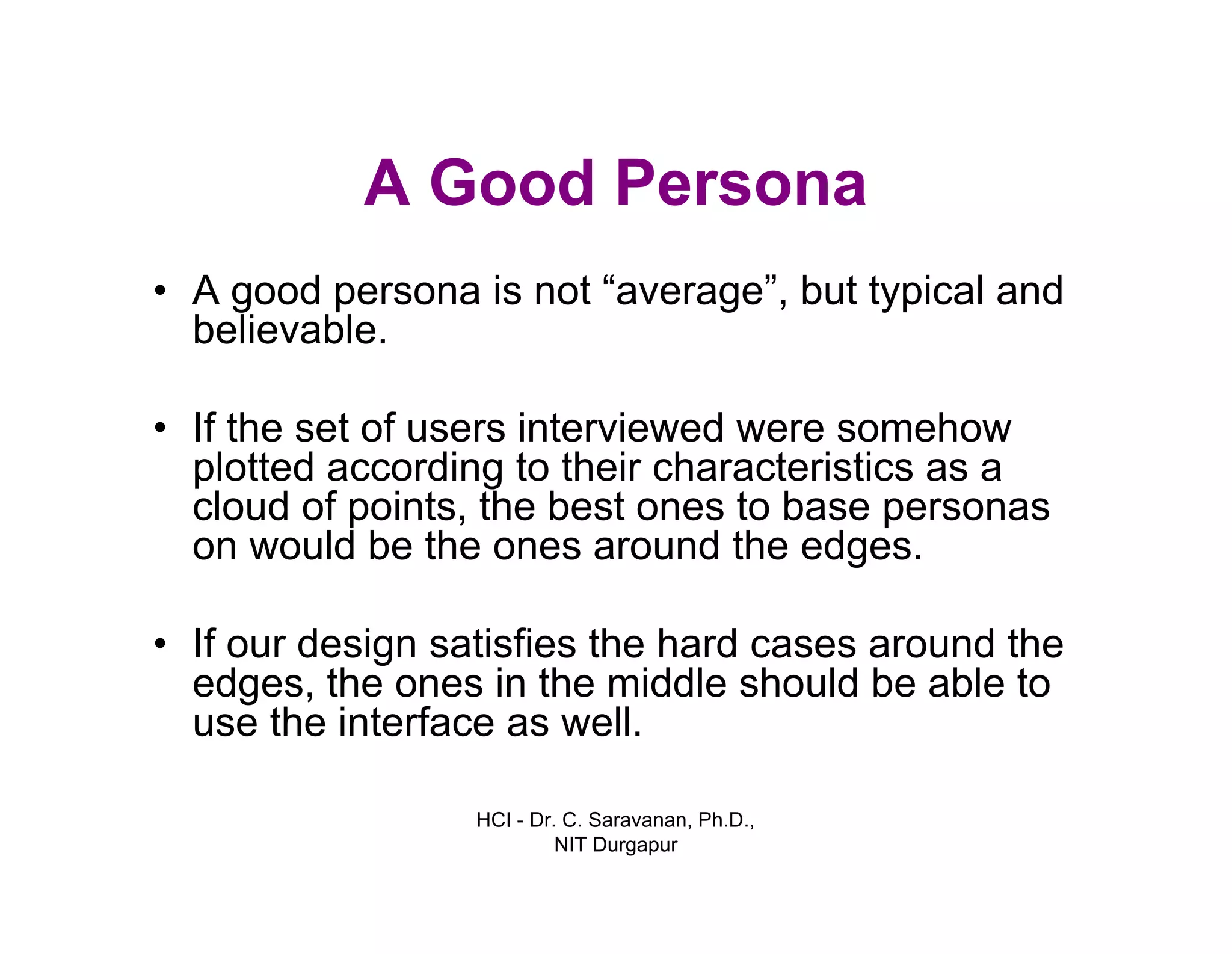
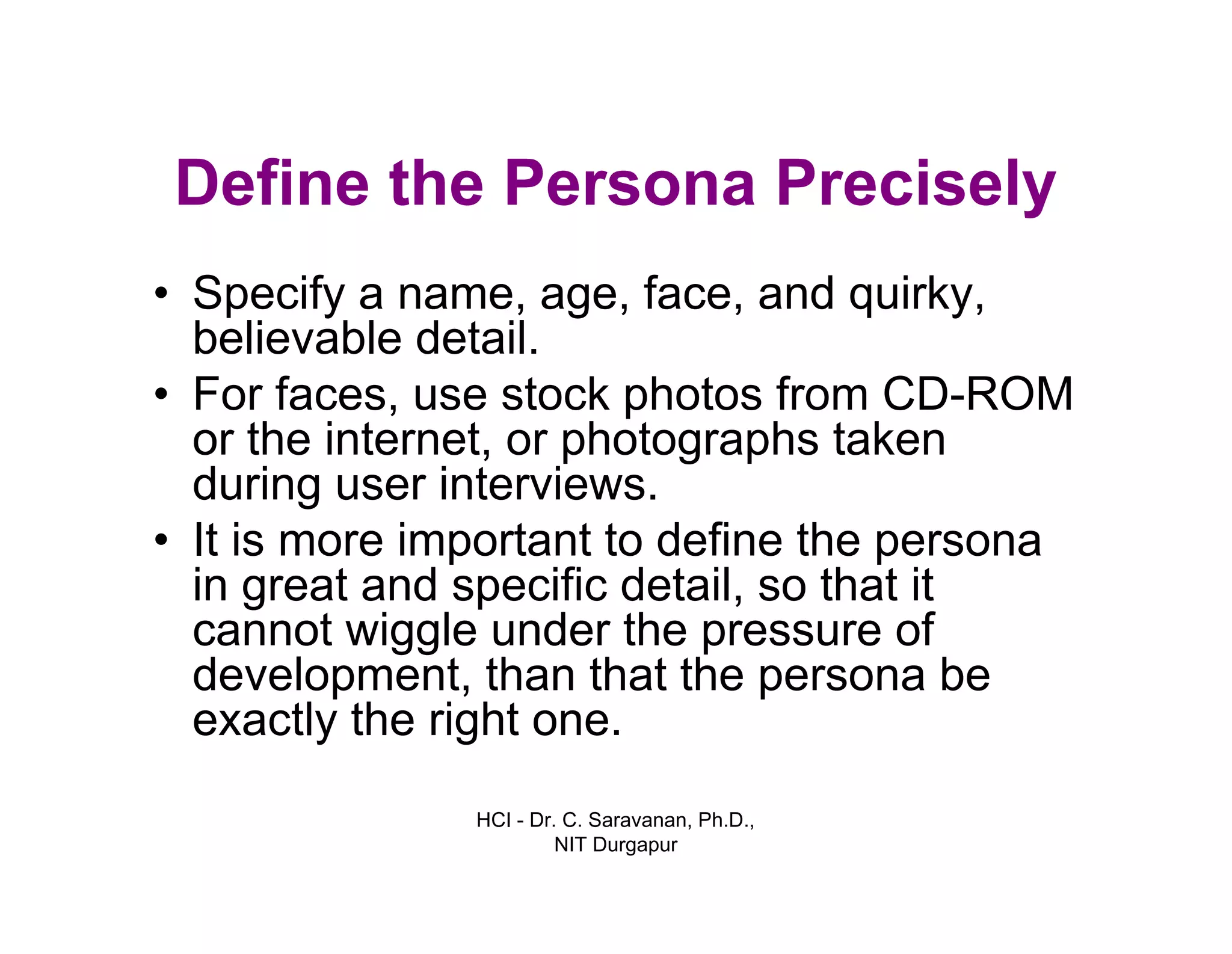
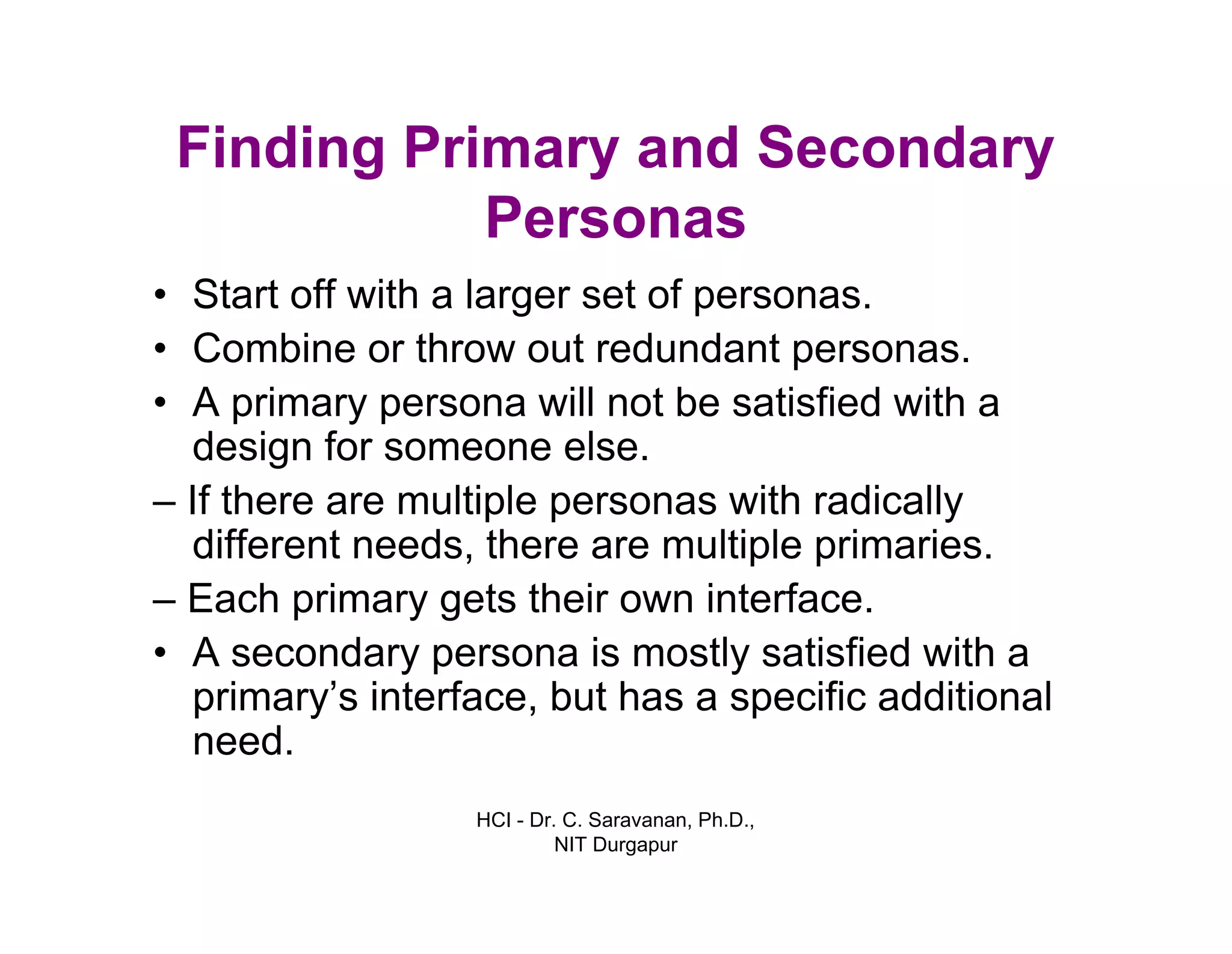
![HCI - Dr. C. Saravanan, Ph.D.,
NIT Durgapur
Case Study: In-Flight
Entertainment System
• Fictional example based on example in [Cooper, 2004],
an inflight entertainment system called InFlight for Zoom
Airways.
• At each seat a touch-screen video console
• 36 films in five categories, 36 music channels, news,
childrens shows, games, shopping.
• computers + large hard disks in front of the plane.
• true video on demand – each passenger can start,
pause, and rewind programmes independently.](https://image.slidesharecdn.com/humancomputerinteraction-150121201122-conversion-gate02/75/Human-computer-interaction-93-2048.jpg)
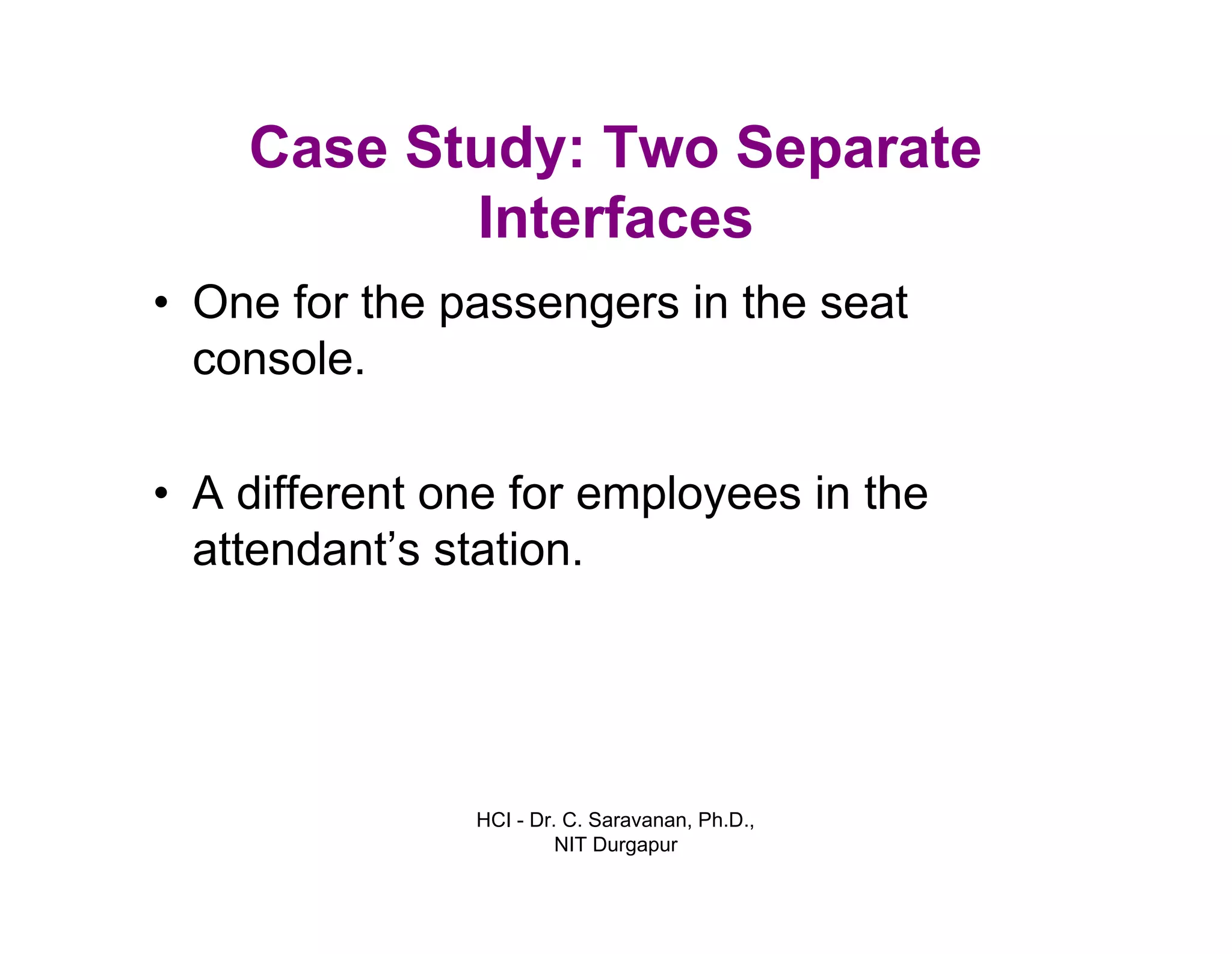
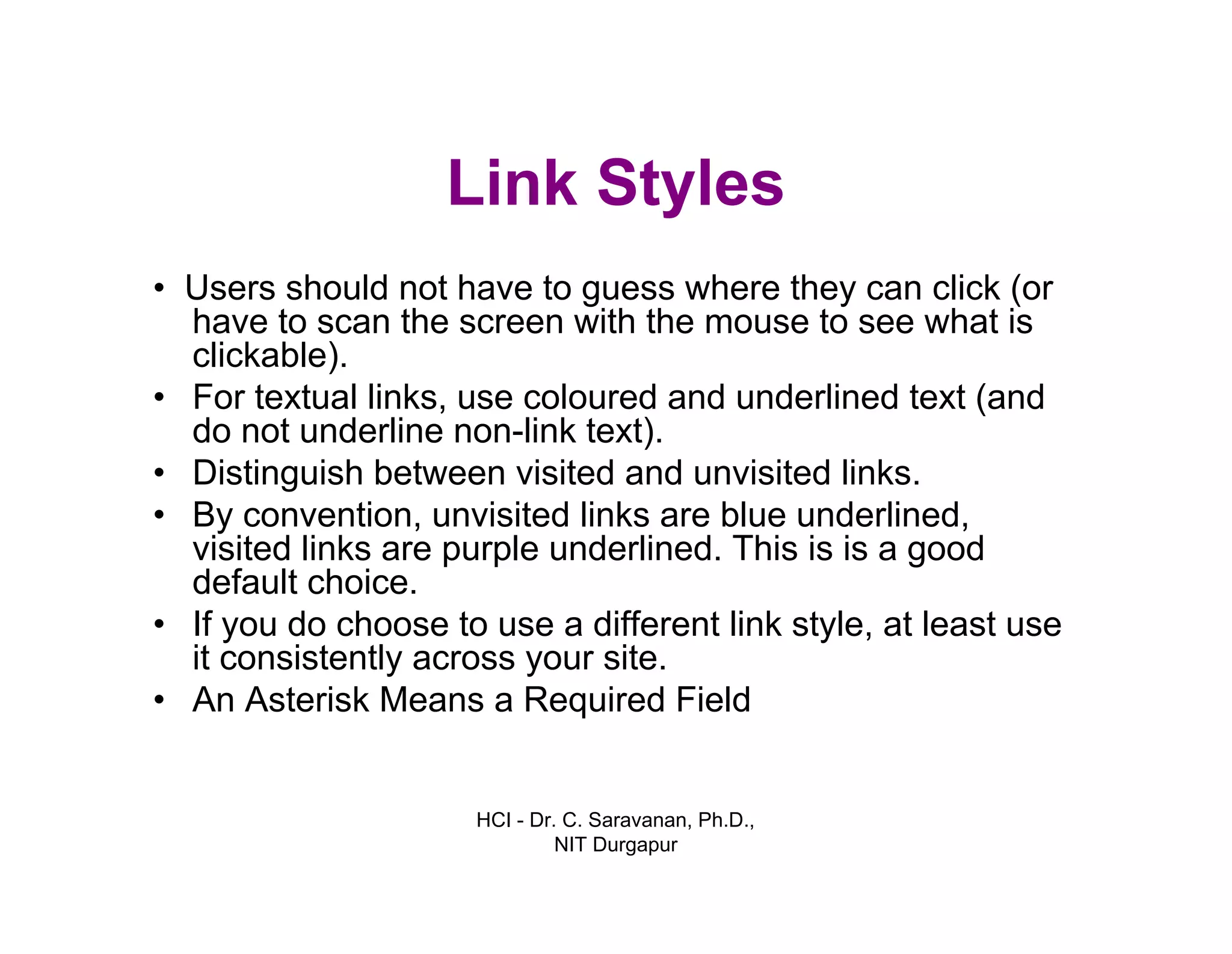
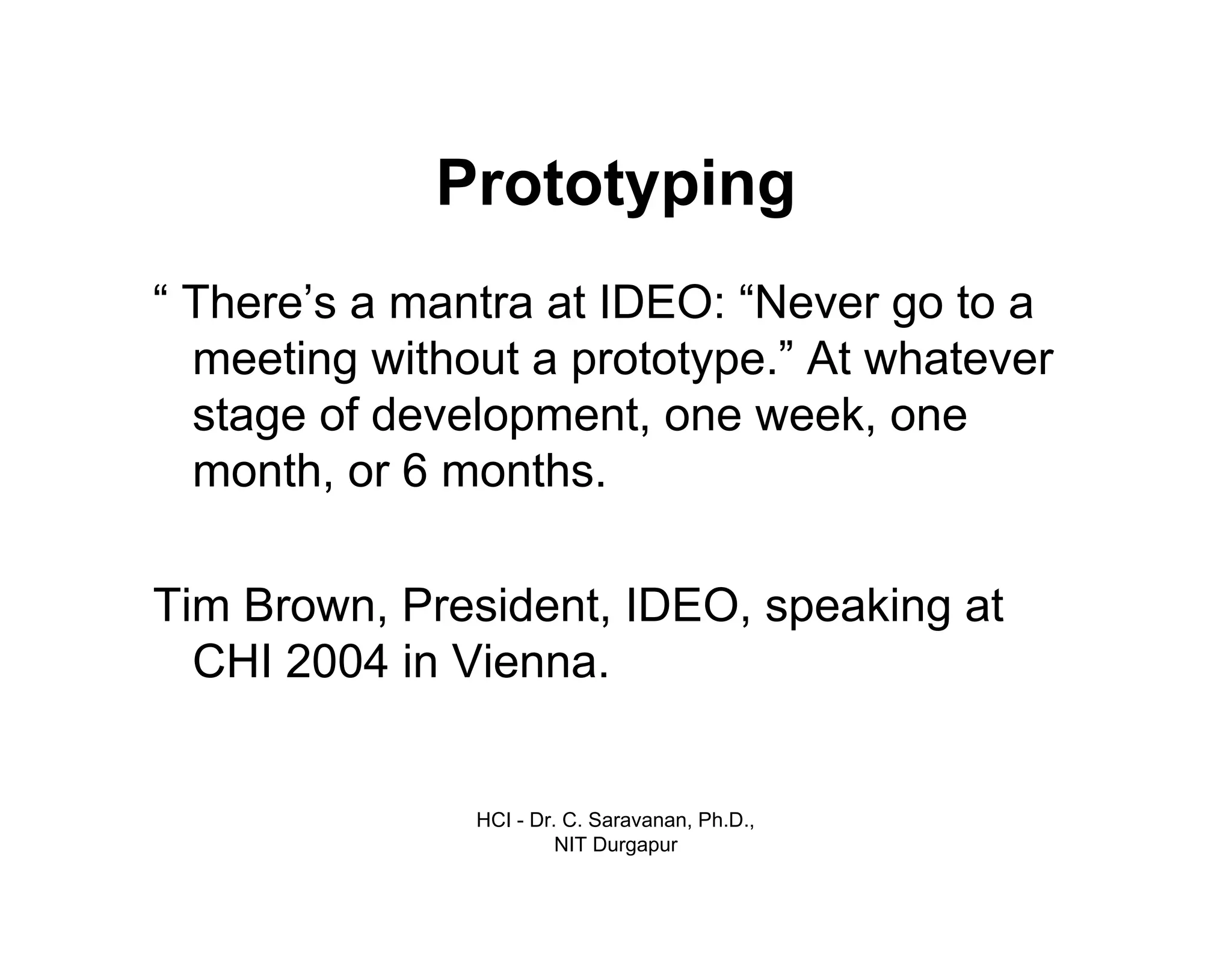
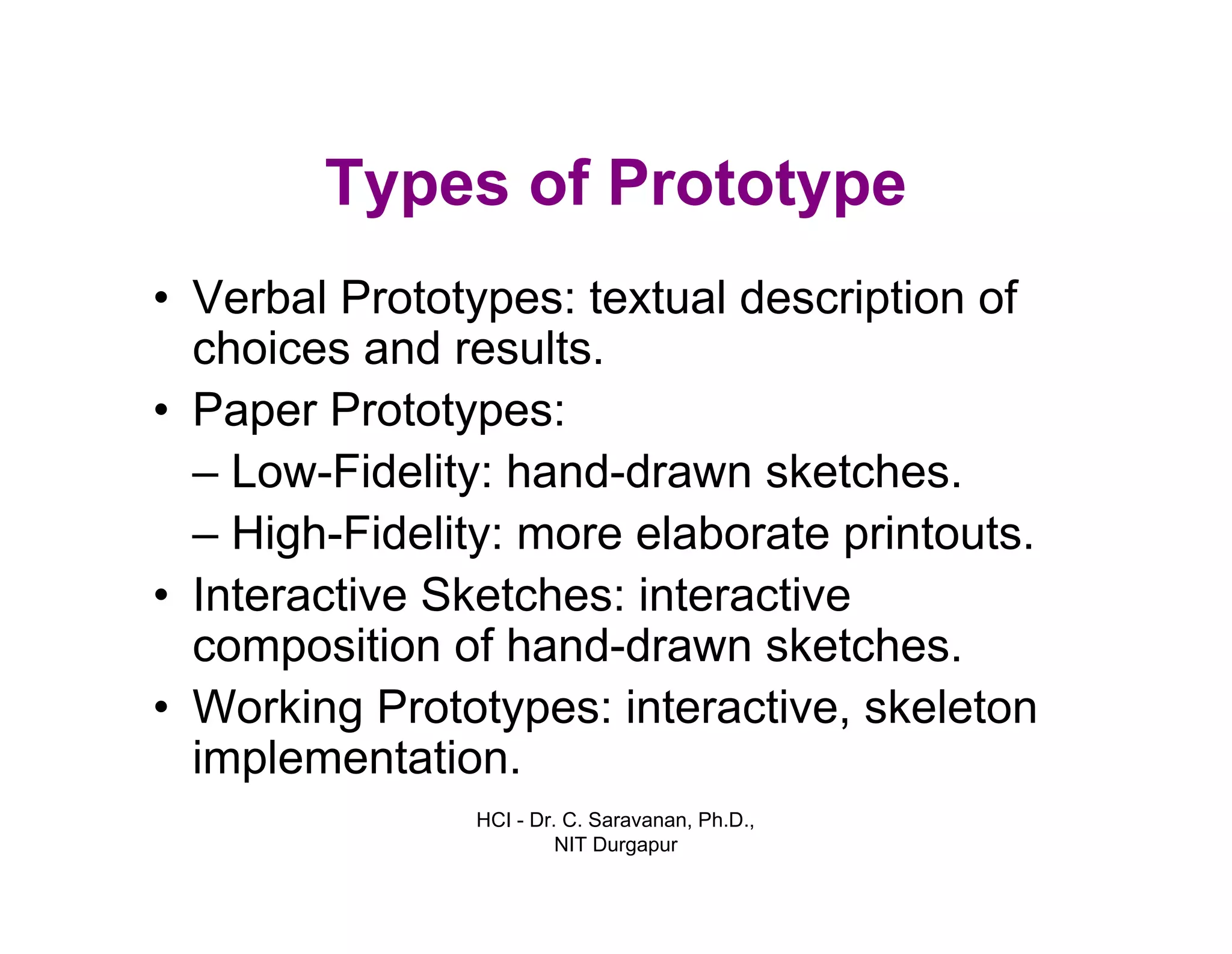

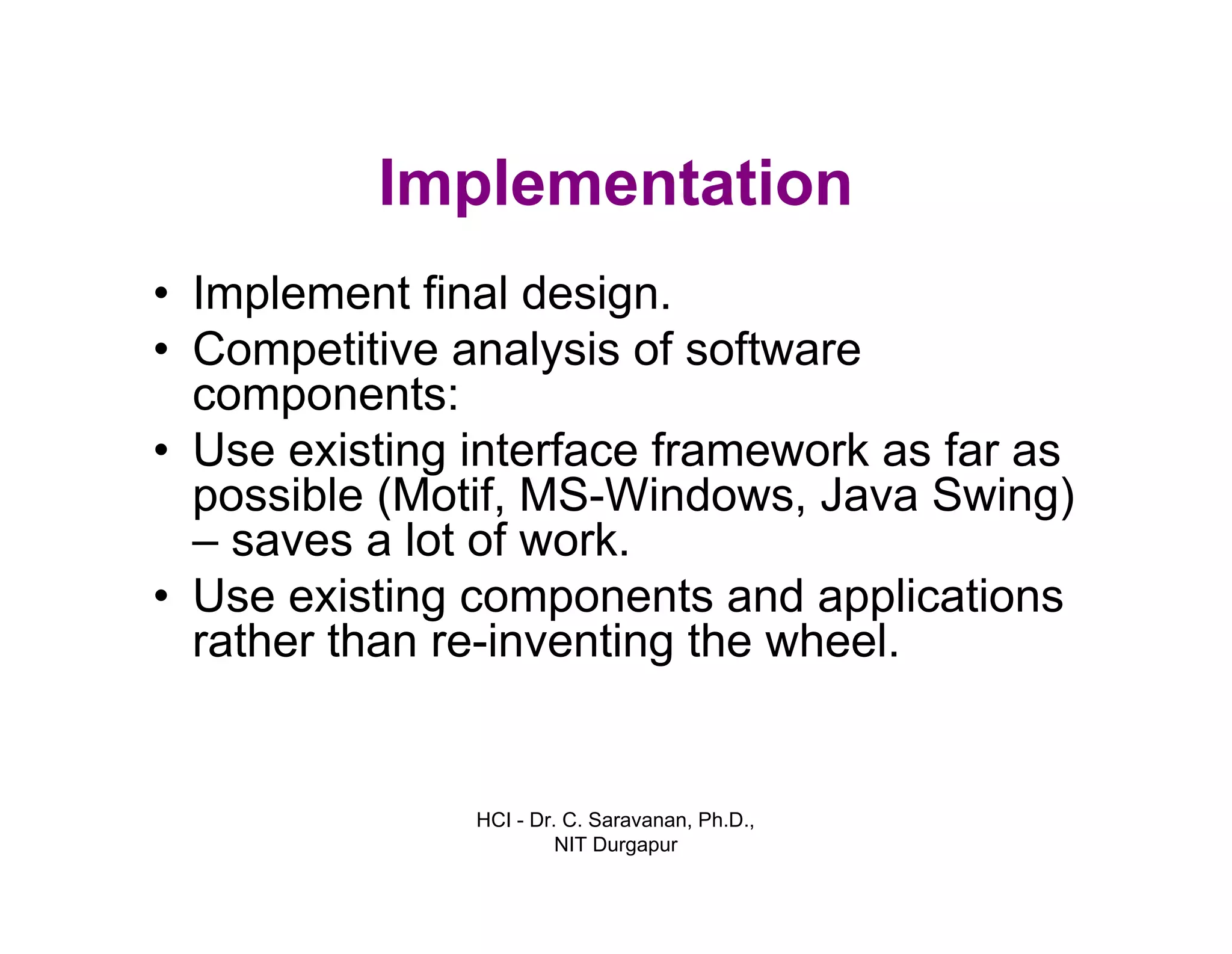
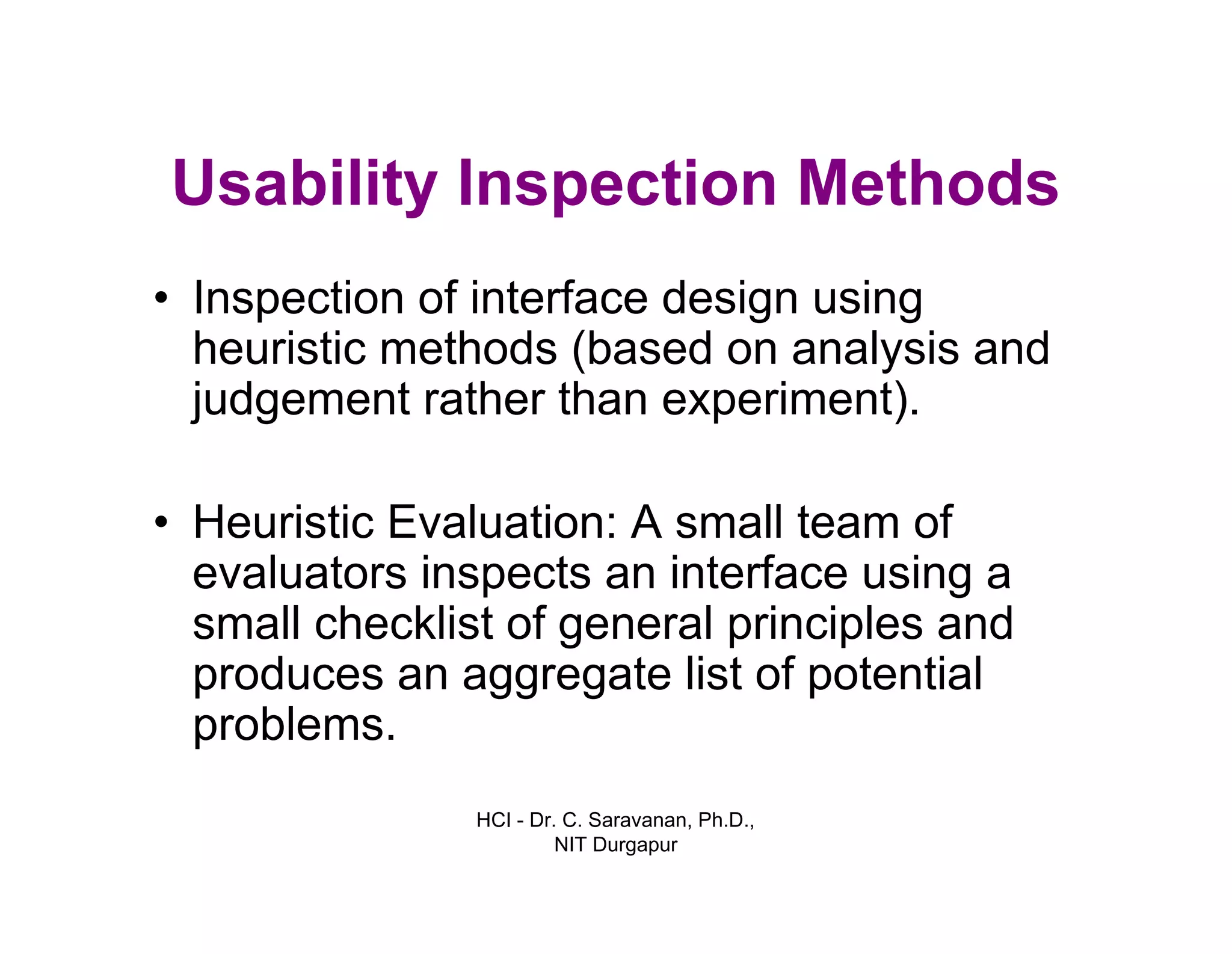
![HCI - Dr. C. Saravanan, Ph.D.,
NIT Durgapur
• Guideline Checking: An evaluator checks
an interface against a detailed list of
specific guidelines and produces a list of
deviations from the guidelines.
• Cognitive Walkthrough: A small team
walks through a typical task in the mind
set of a novice user and produces a
success or failure story at each step along
the correct path. [analyses learnability].](https://image.slidesharecdn.com/humancomputerinteraction-150121201122-conversion-gate02/75/Human-computer-interaction-101-2048.jpg)
![HCI - Dr. C. Saravanan, Ph.D.,
NIT Durgapur
• Guideline Scoring: An evaluator scores an
interface against a detailed list of specific
guidelines and produces a total score
representing the degree to which an interface
follows the guidelines.
• Action Analysis: An evaluator produces an
estimate of the time an expert user will take to
complete a given task, by breaking the task
down into ever smaller steps and then summing
up the atomic action times. [analyses efficiency]](https://image.slidesharecdn.com/humancomputerinteraction-150121201122-conversion-gate02/75/Human-computer-interaction-102-2048.jpg)
![HCI - Dr. C. Saravanan, Ph.D.,
NIT Durgapur
• Would you knowingly use untested software?
• How many of you have written programs that are
used by other people?
• How many of you have watched or observed
users using your software?
• How many of you actually evaluated or tested
your interface before it was used?
• In practice, most software developers do not
actually conduct any kind of usability evaluation
[due to perceived expense, lack of time, lack of
expertise, lack of inclination, or lack of tradition].](https://image.slidesharecdn.com/humancomputerinteraction-150121201122-conversion-gate02/75/Human-computer-interaction-103-2048.jpg)
![HCI - Dr. C. Saravanan, Ph.D.,
NIT Durgapur
Usability Heuristics
• Visibility of System Status [Feedback]
• The system should always keep users
informed about what is going on, through
appropriate feedback within reasonable
time.
• For example: busy cursor [1–10s],
progress indicator [>10s].](https://image.slidesharecdn.com/humancomputerinteraction-150121201122-conversion-gate02/75/Human-computer-interaction-104-2048.jpg)
![HCI - Dr. C. Saravanan, Ph.D.,
NIT Durgapur
• Match Between System and the Real
World [Speak the Users’ Language]
• The system should speak the users’
language, with words, phrases and
concepts familiar to the user, rather than
system-oriented terms. Follow real-world
conventions, making information appear in
a natural and logical order.
• Match users’ mental model. Beware of
misleading metaphors.](https://image.slidesharecdn.com/humancomputerinteraction-150121201122-conversion-gate02/75/Human-computer-interaction-105-2048.jpg)
![HCI - Dr. C. Saravanan, Ph.D.,
NIT Durgapur
• User Control and Freedom [Clearly
Marked Exits]
• Users often choose system functions by
mistake and will need a clearly marked
“emergency exit” to leave the unwanted
state without having to go through an
extended dialogue. Support undo and redo.](https://image.slidesharecdn.com/humancomputerinteraction-150121201122-conversion-gate02/75/Human-computer-interaction-106-2048.jpg)
![HCI - Dr. C. Saravanan, Ph.D.,
NIT Durgapur
• Consistency and Standards [Consistency]
• Users should not have to wonder whether
different words, situations, or actions
mean the same thing. Follow platform
conventions.](https://image.slidesharecdn.com/humancomputerinteraction-150121201122-conversion-gate02/75/Human-computer-interaction-107-2048.jpg)
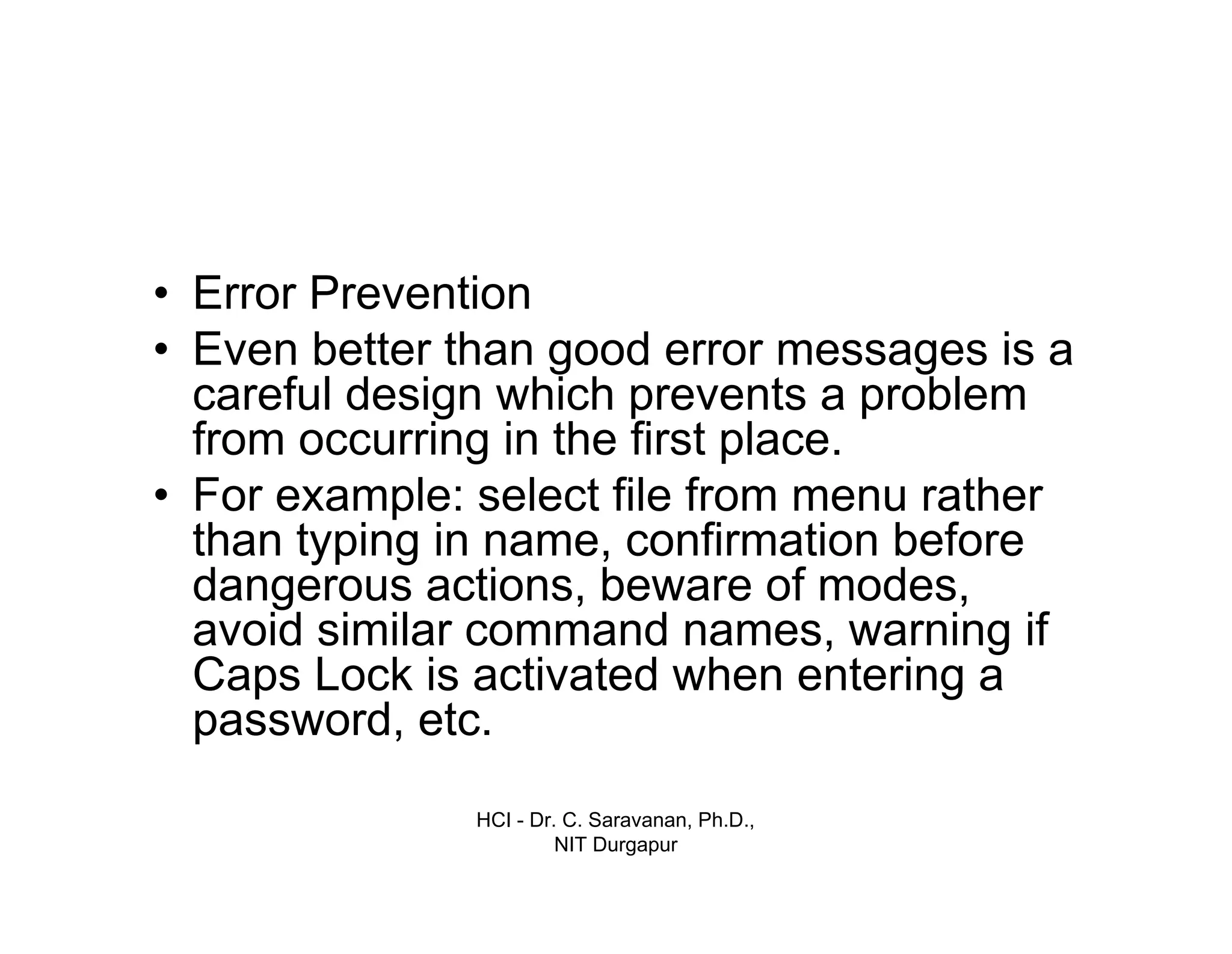
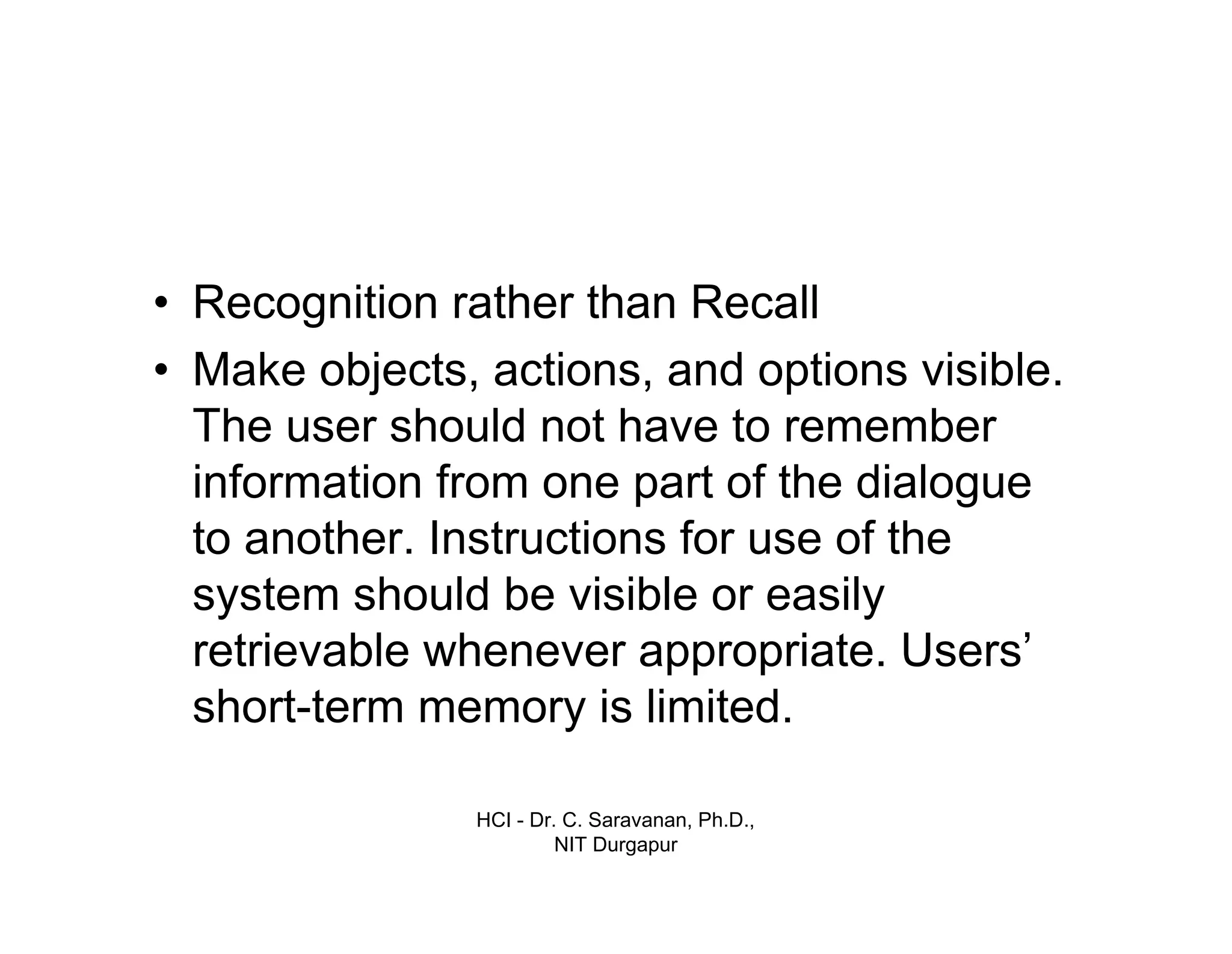
![HCI - Dr. C. Saravanan, Ph.D.,
NIT Durgapur
• Flexibility and Efficiency of Use [Accelerators]
• Accelerators – unseen by the novice user – may
often speed up the interaction for the expert user
such that the system can cater to both
inexperienced and experienced users. Allow
users to tailor frequent actions.
• For example: abbreviations, command keys,
type-ahead, edit and reissue previous
commands, menu of most recently used files,
macros.](https://image.slidesharecdn.com/humancomputerinteraction-150121201122-conversion-gate02/75/Human-computer-interaction-110-2048.jpg)
![HCI - Dr. C. Saravanan, Ph.D.,
NIT Durgapur
• Aesthetic and Minimalist Design
[Minimalist Design]
• Dialogues should not contain information
which is irrelevant or rarely needed. Every
extra unit of information in a dialogue
competes with the relevant units of
information and diminishes their relative
visibility. “Less is more”.](https://image.slidesharecdn.com/humancomputerinteraction-150121201122-conversion-gate02/75/Human-computer-interaction-111-2048.jpg)
![HCI - Dr. C. Saravanan, Ph.D.,
NIT Durgapur
• Help Users Recognise, Diagnose, and
Recover from Errors [Good Error
Messages]
• Error messages should be expressed in
plain language (no codes), precisely
indicate the problem, and constructively
suggest a solution. Phrase error
messages defensively, never blame the
user. Multilevel messages. Link to help
system.](https://image.slidesharecdn.com/humancomputerinteraction-150121201122-conversion-gate02/75/Human-computer-interaction-112-2048.jpg)
